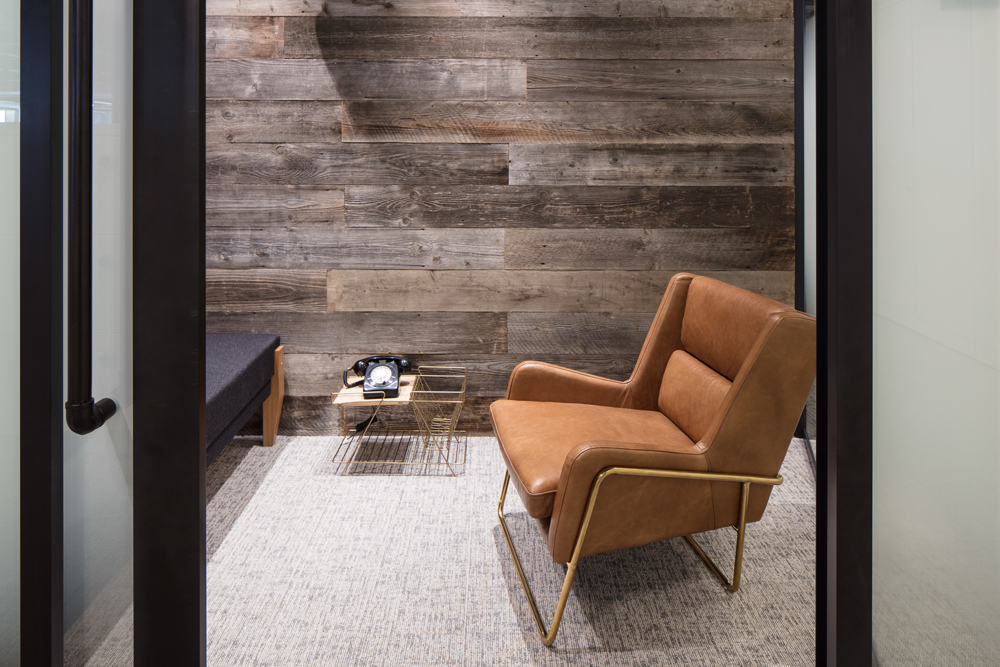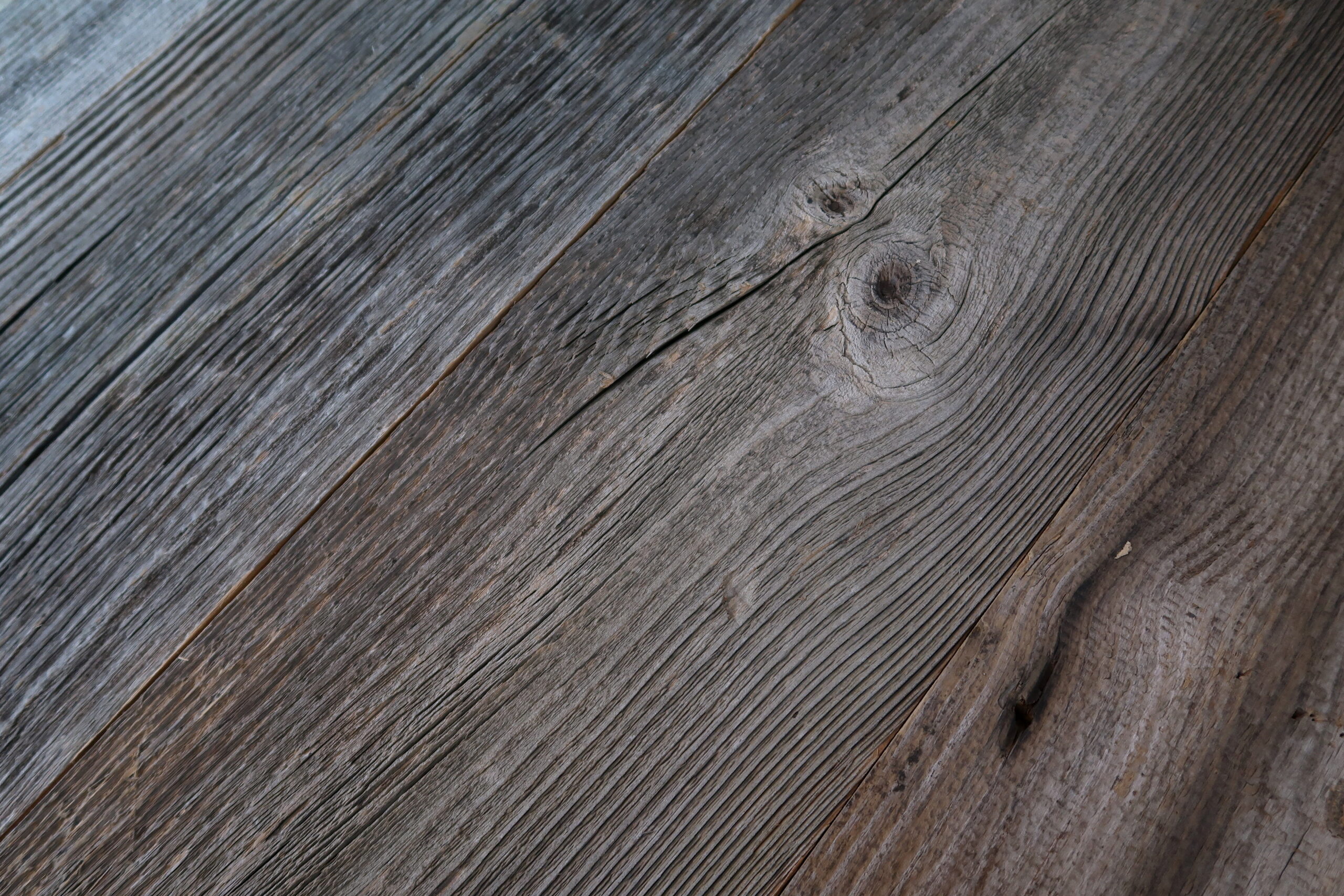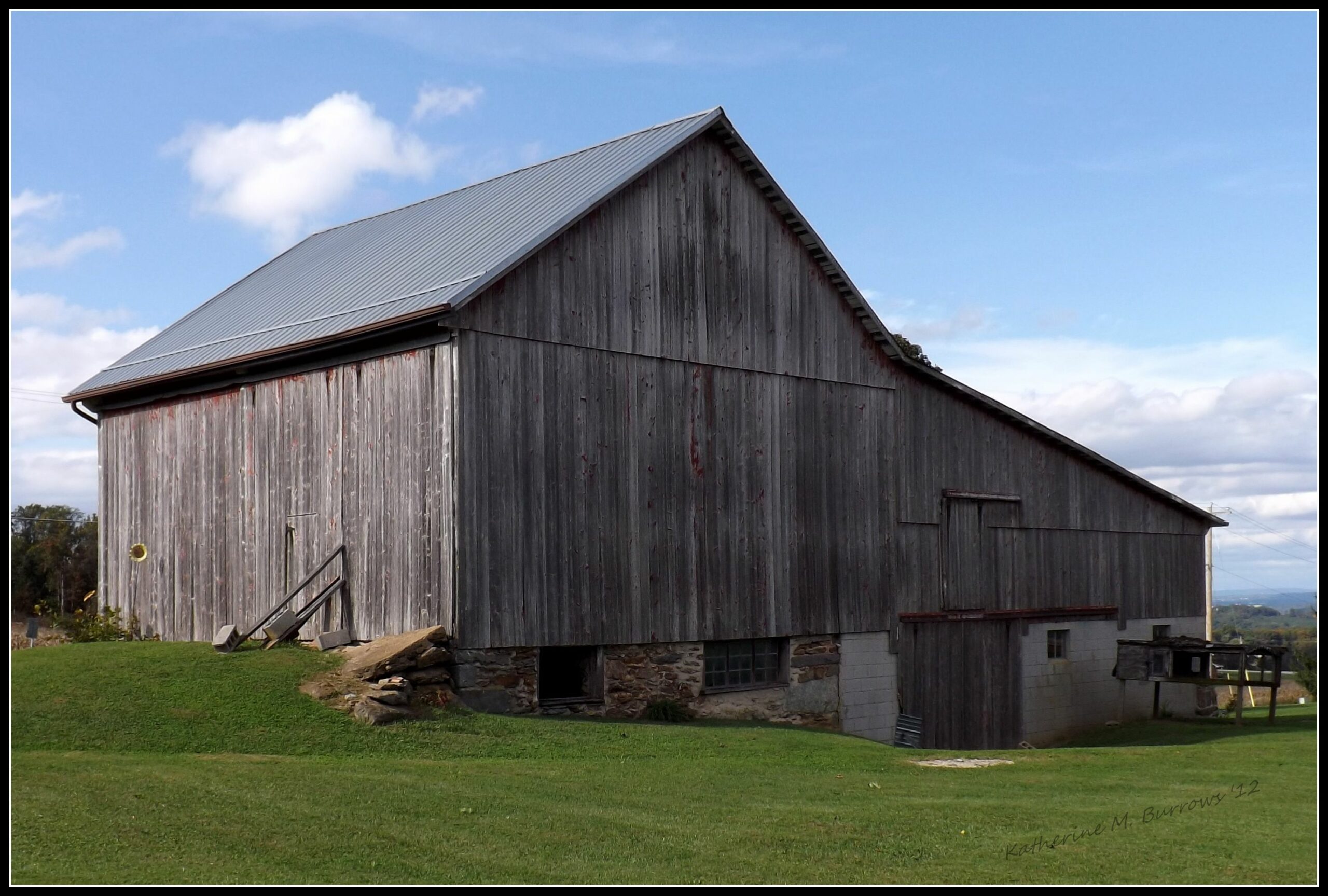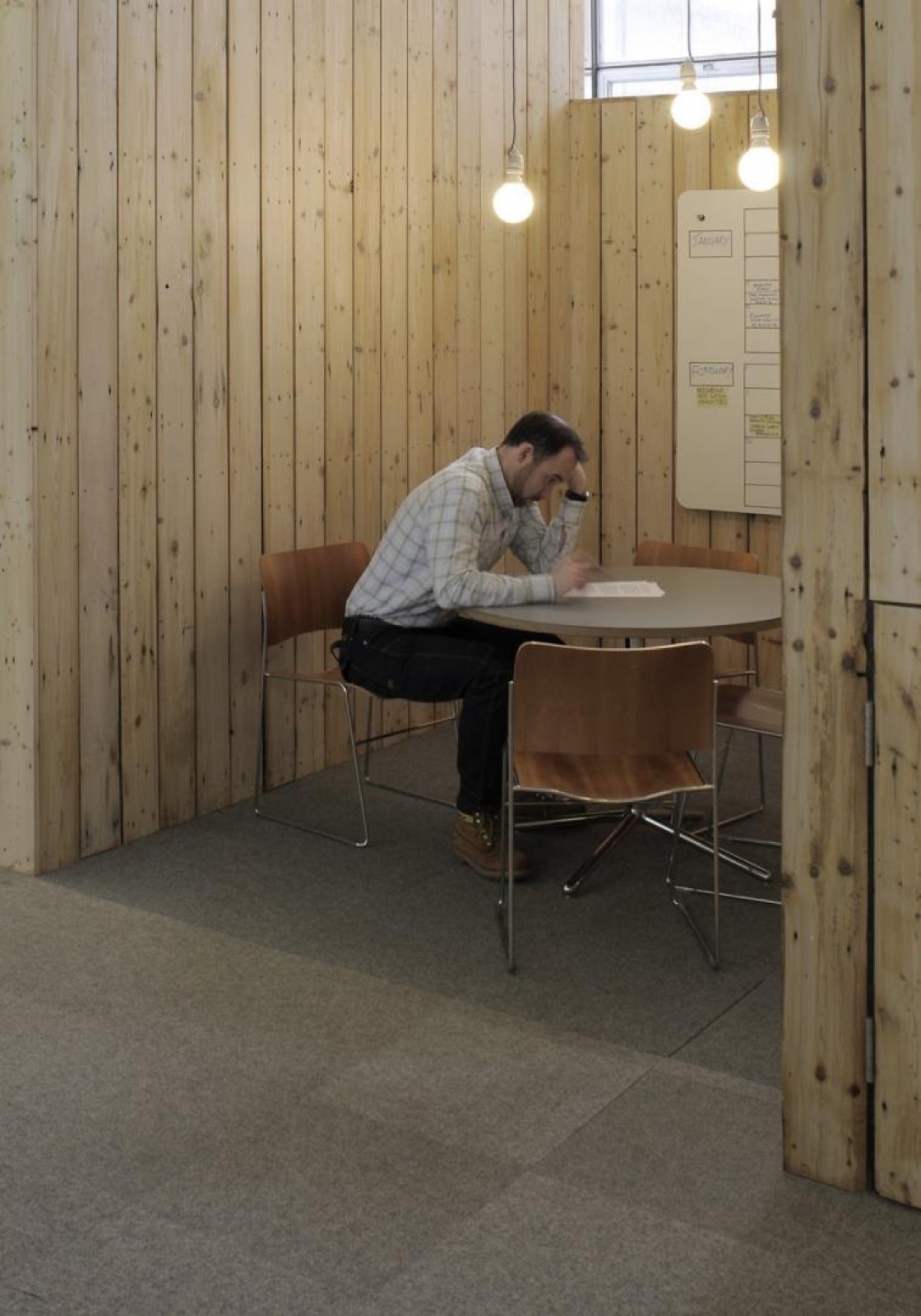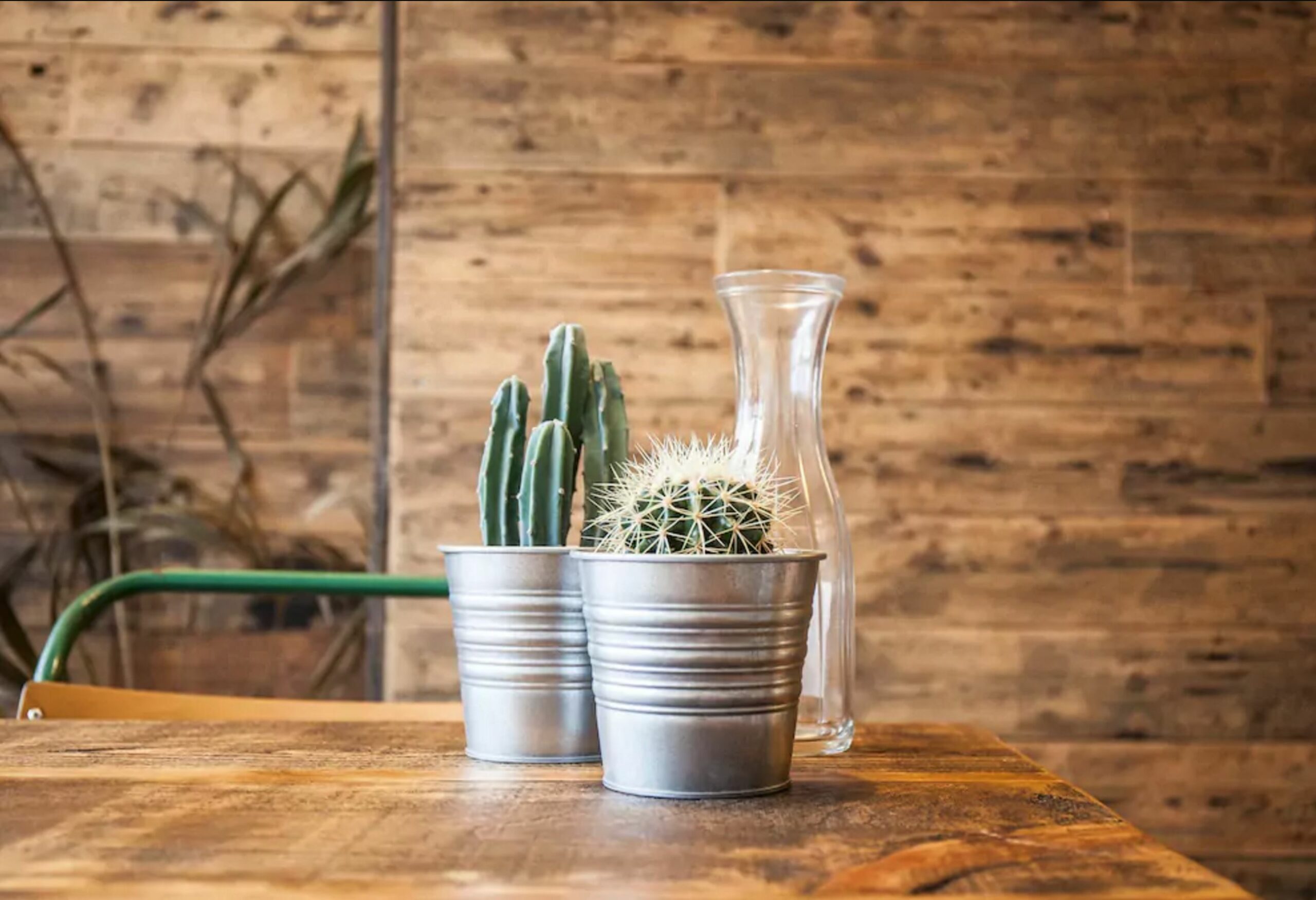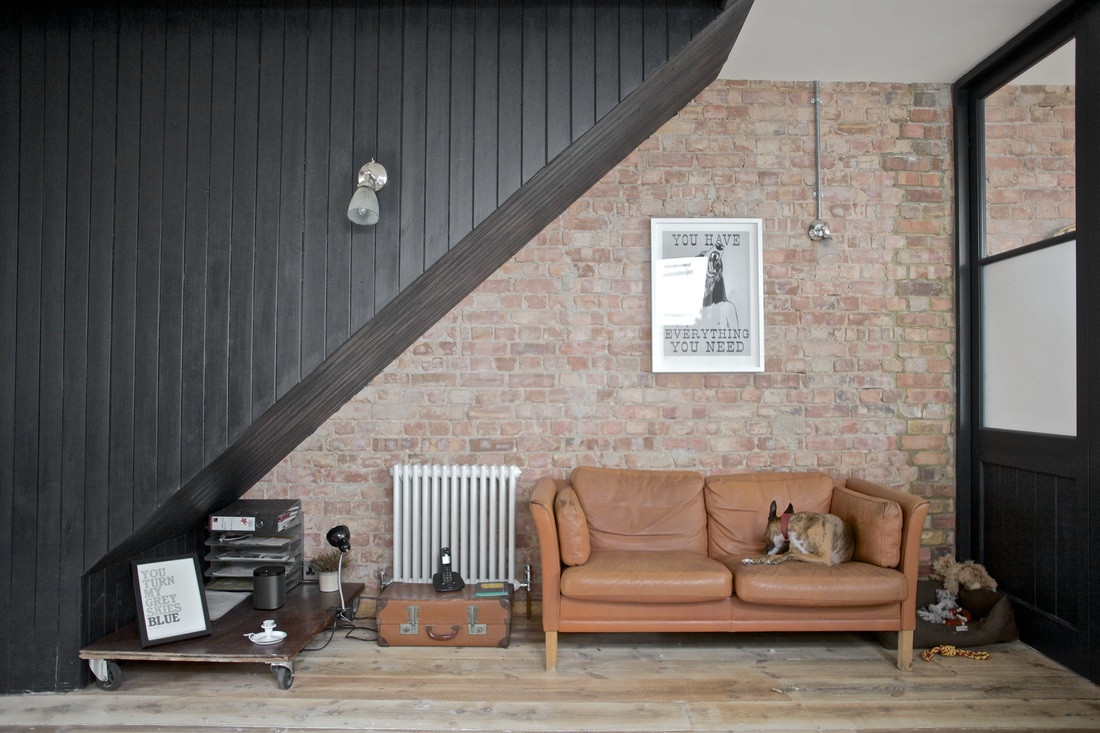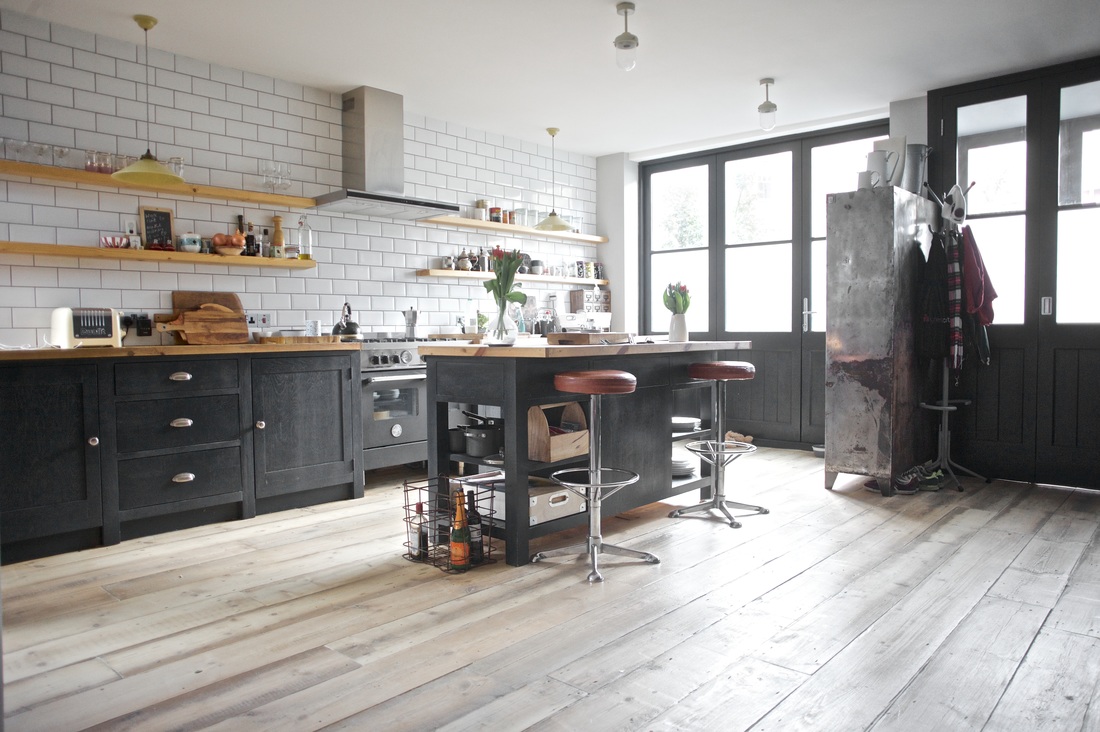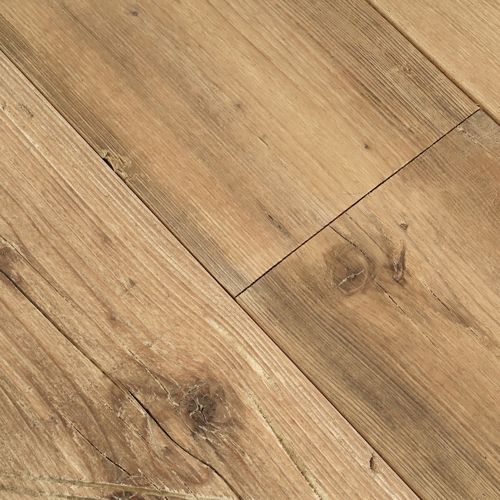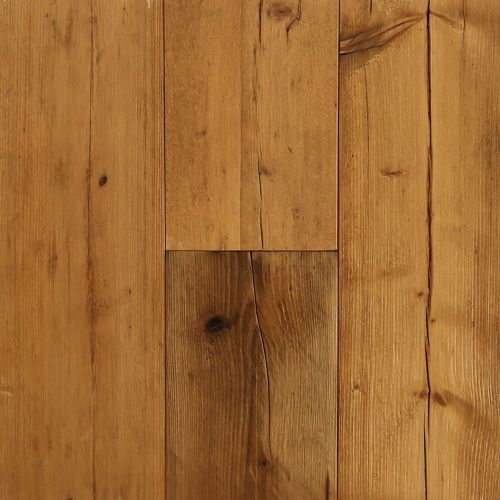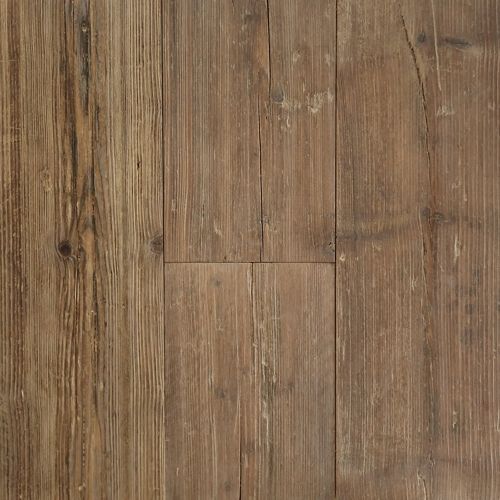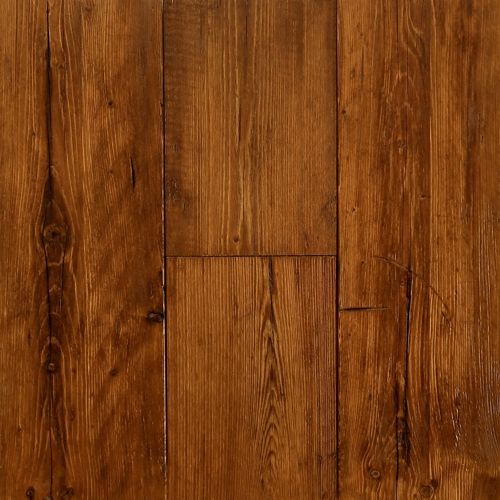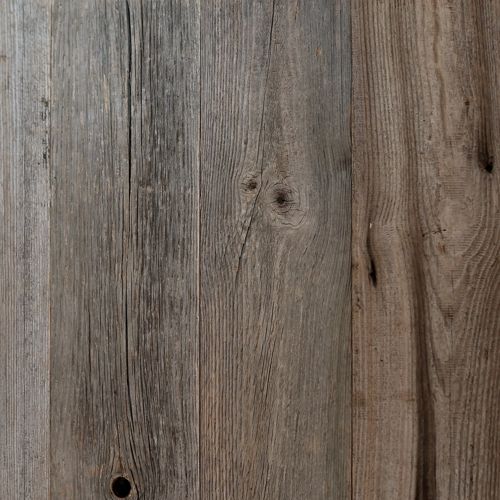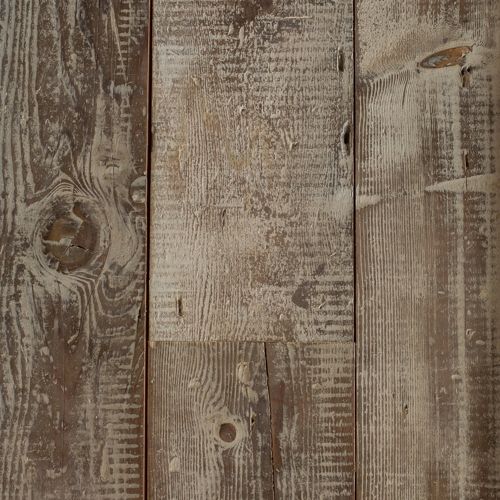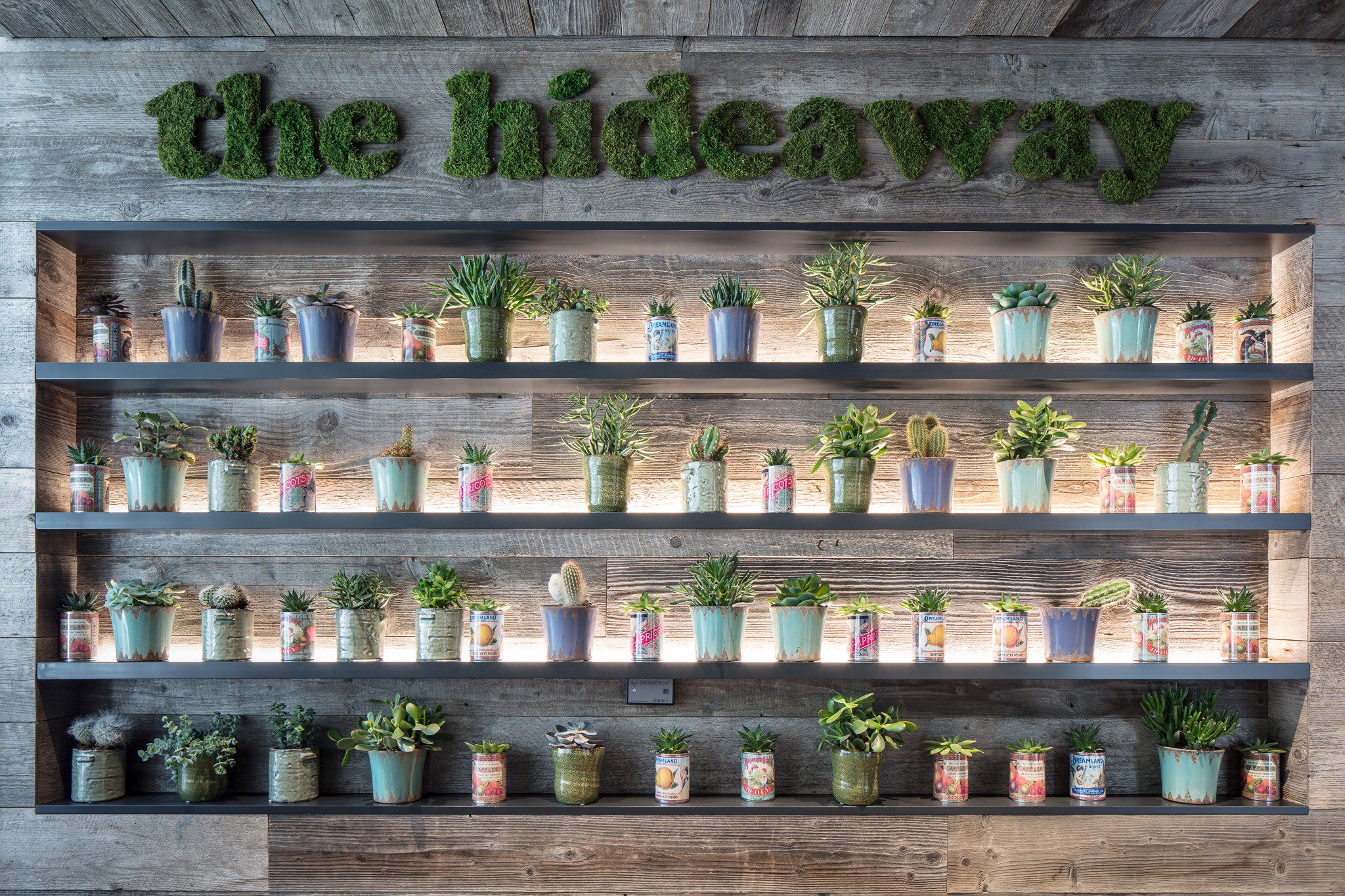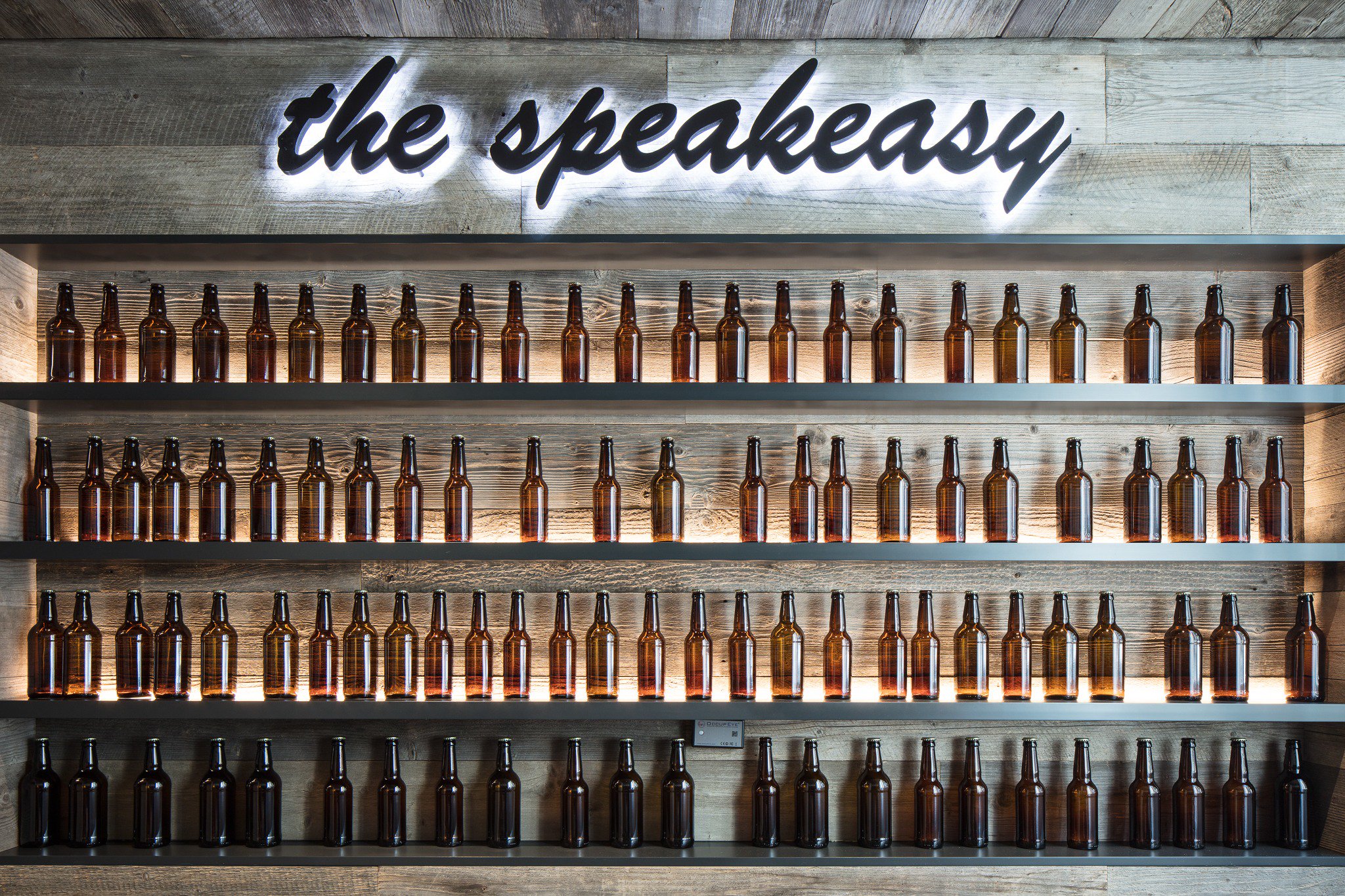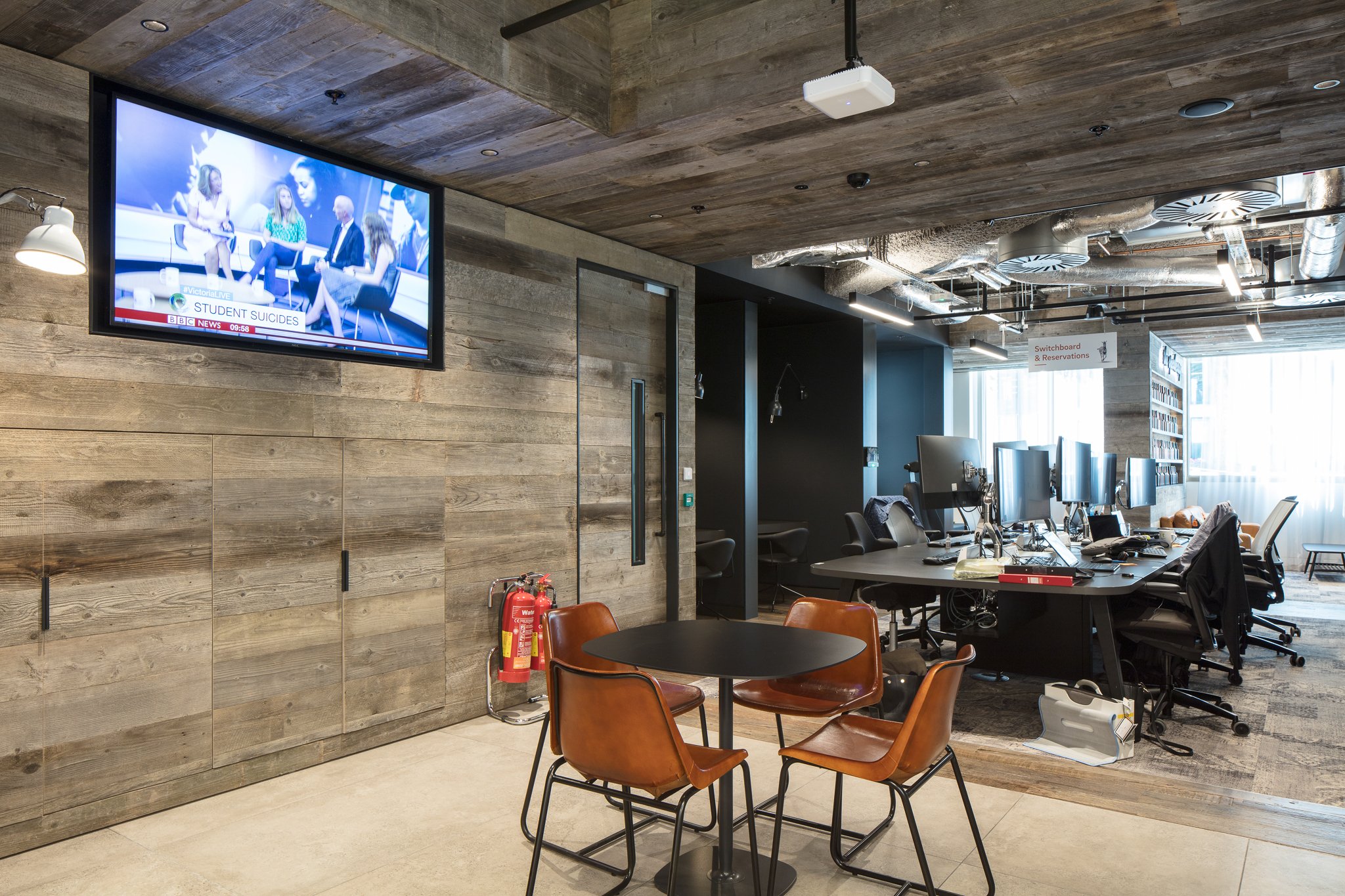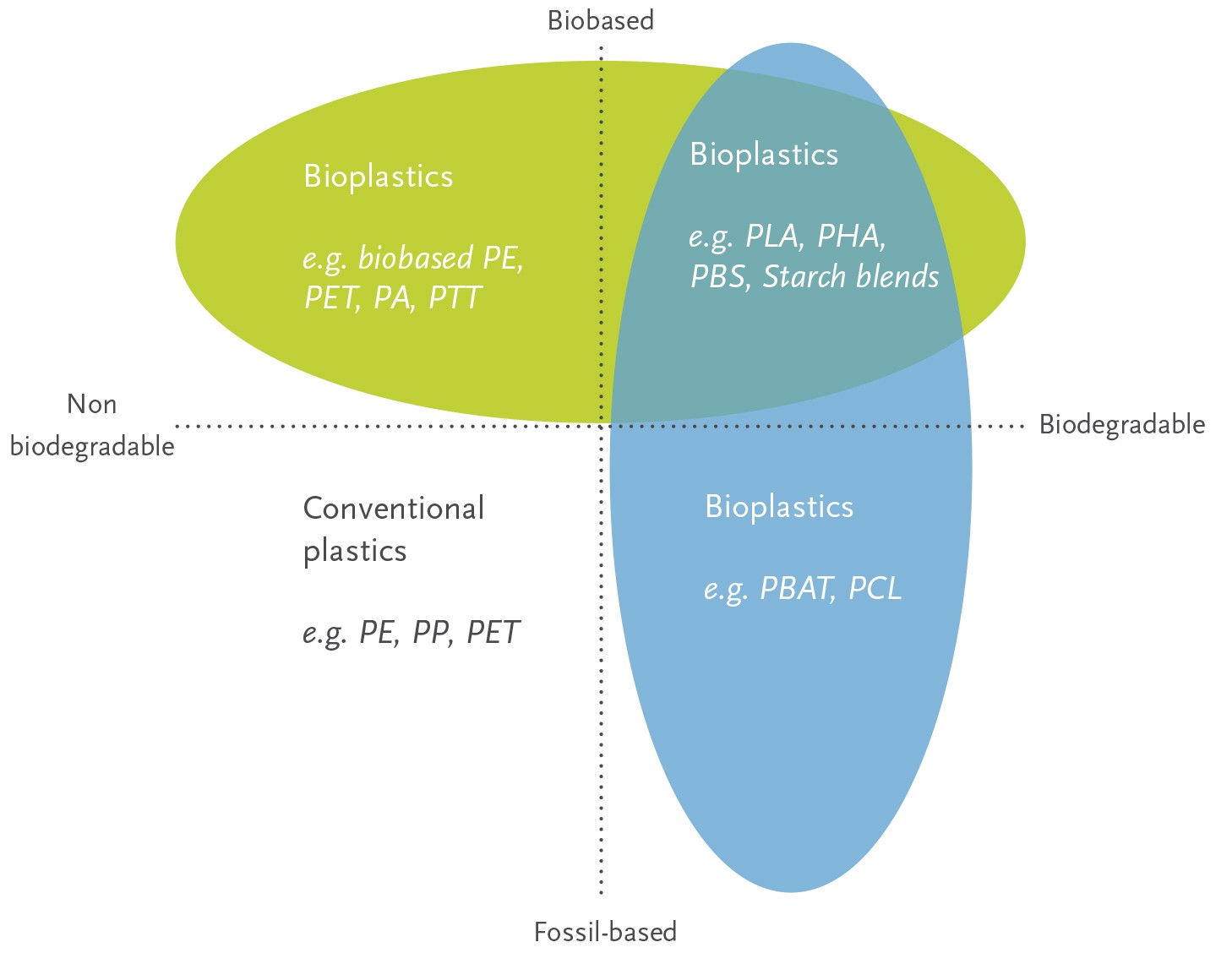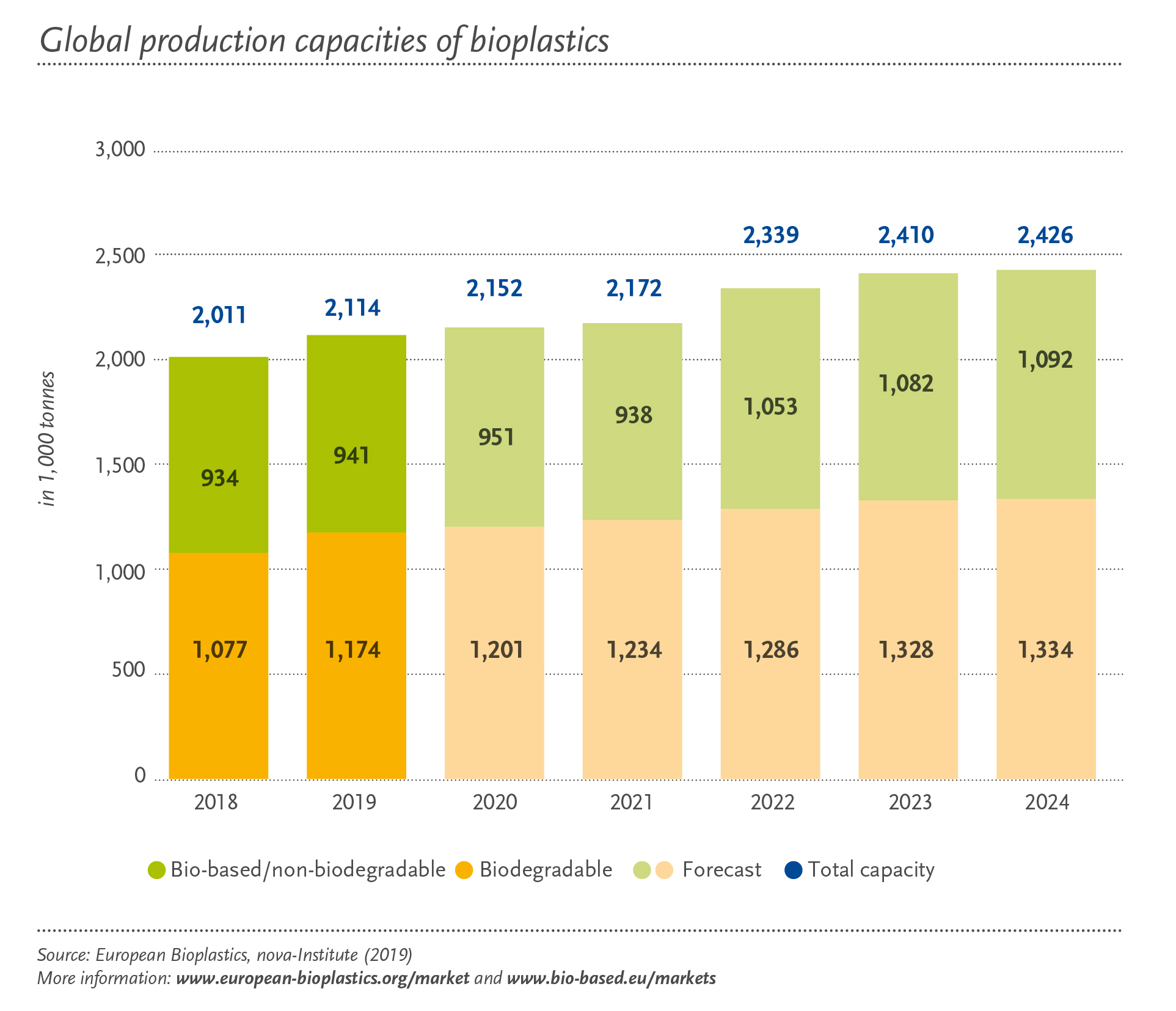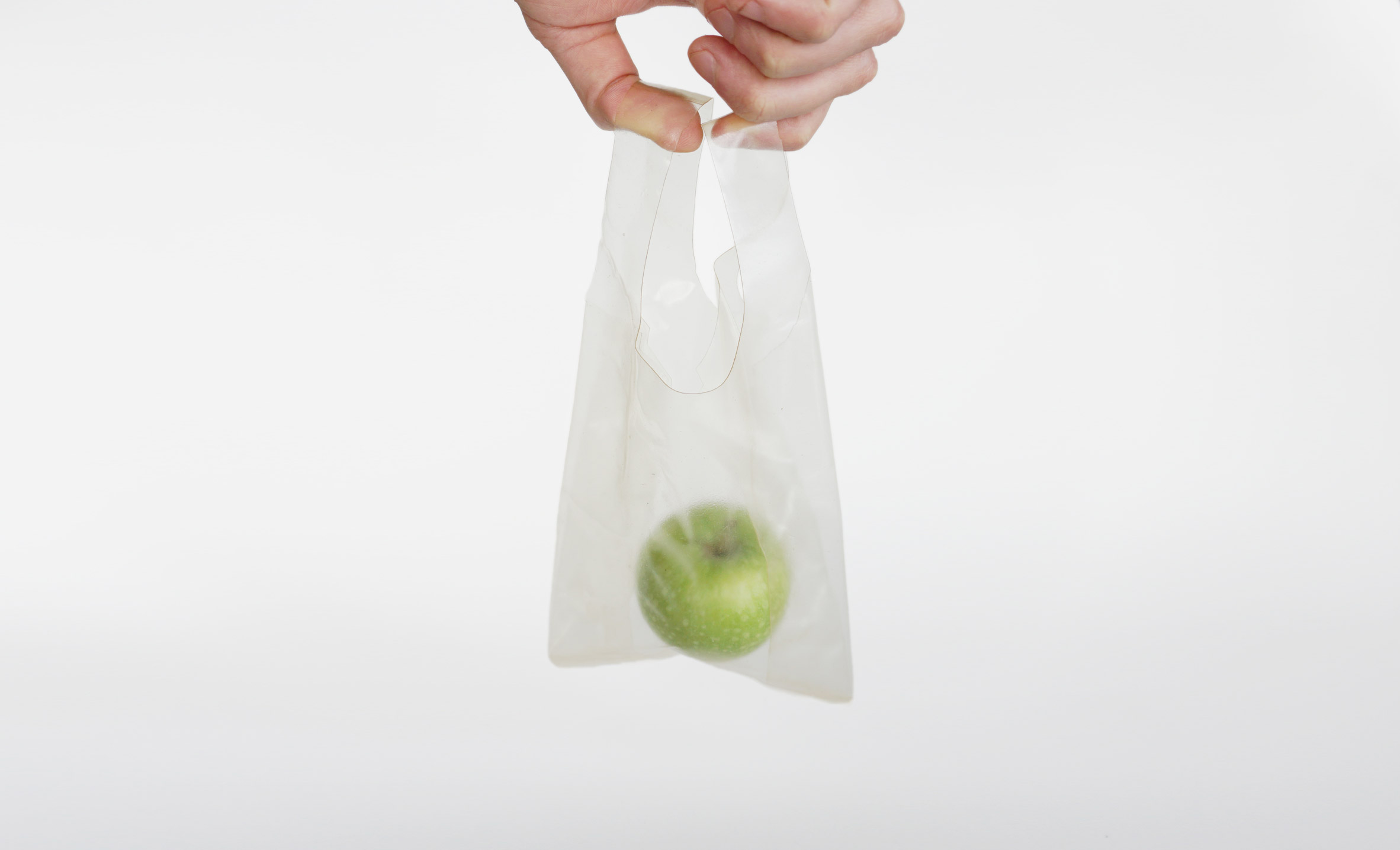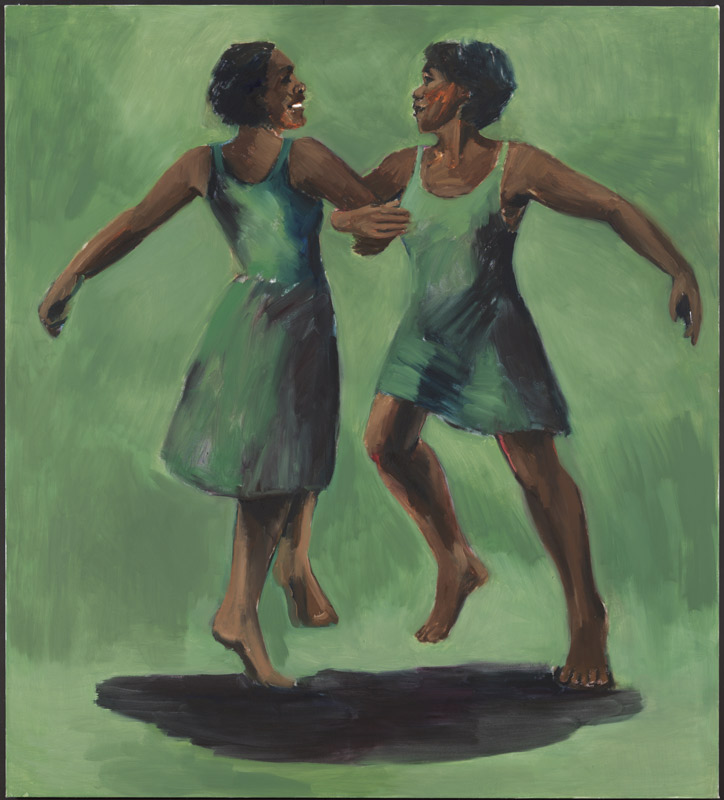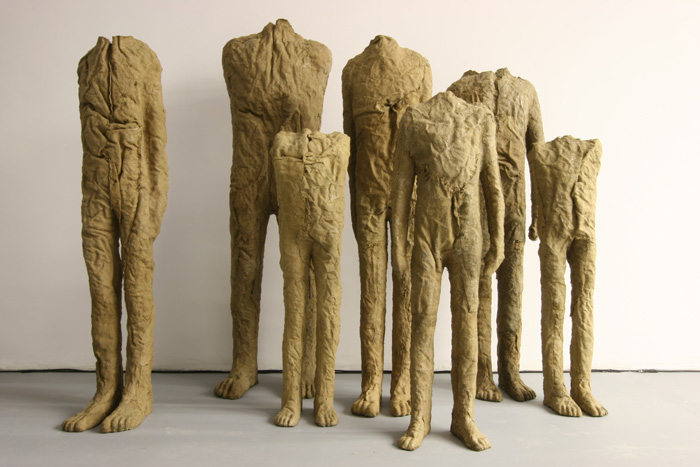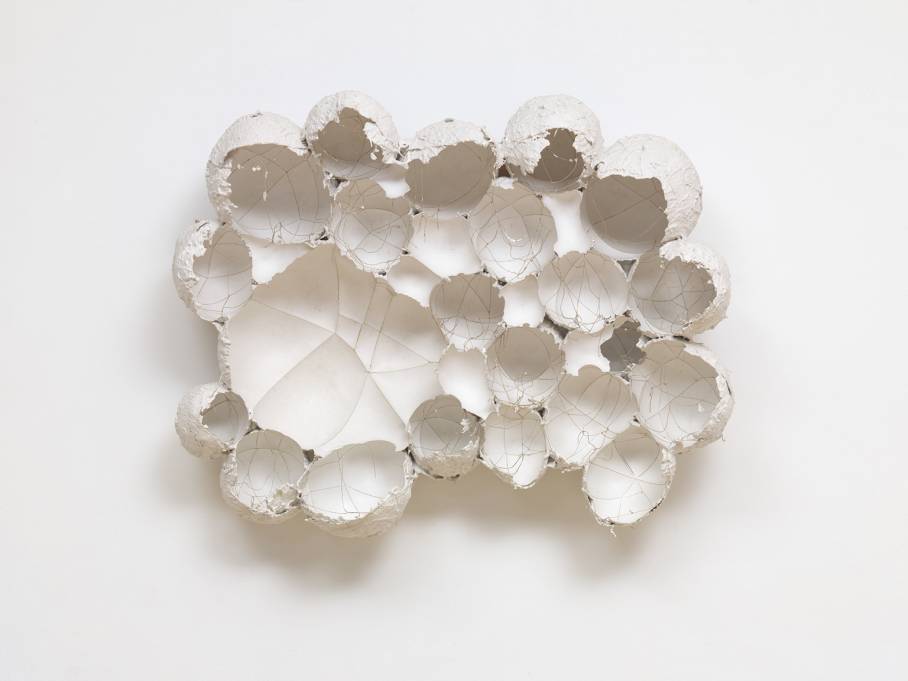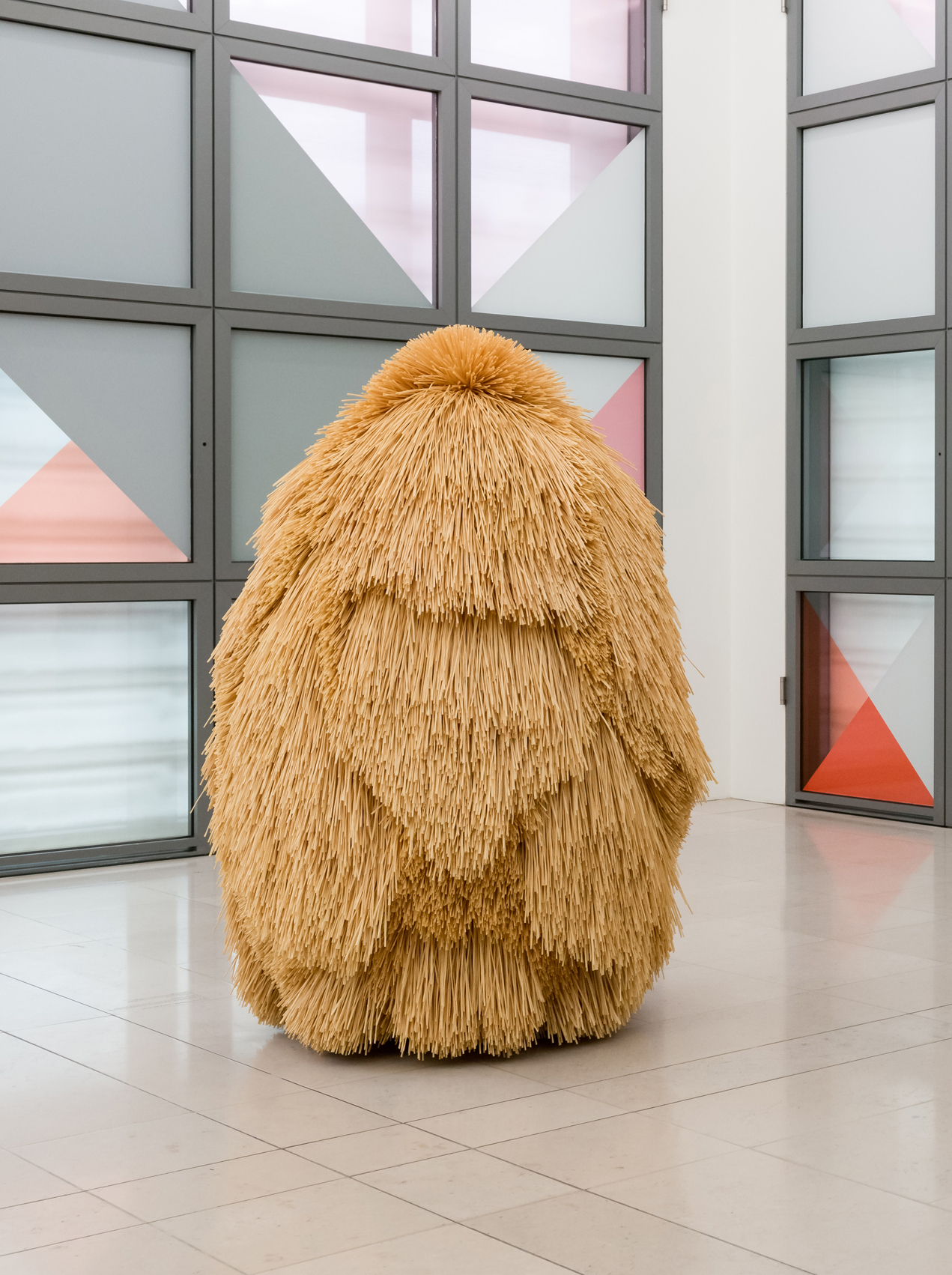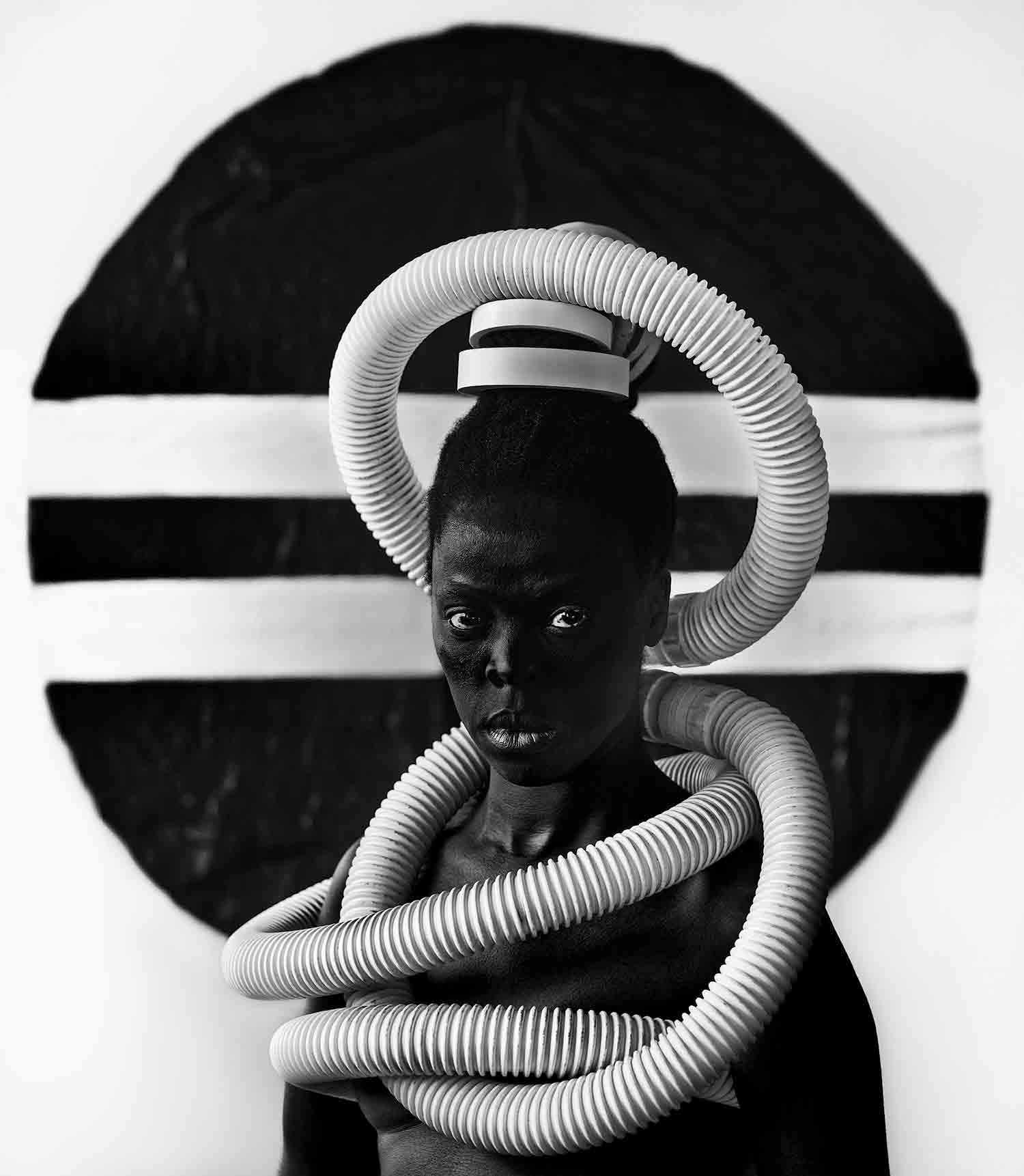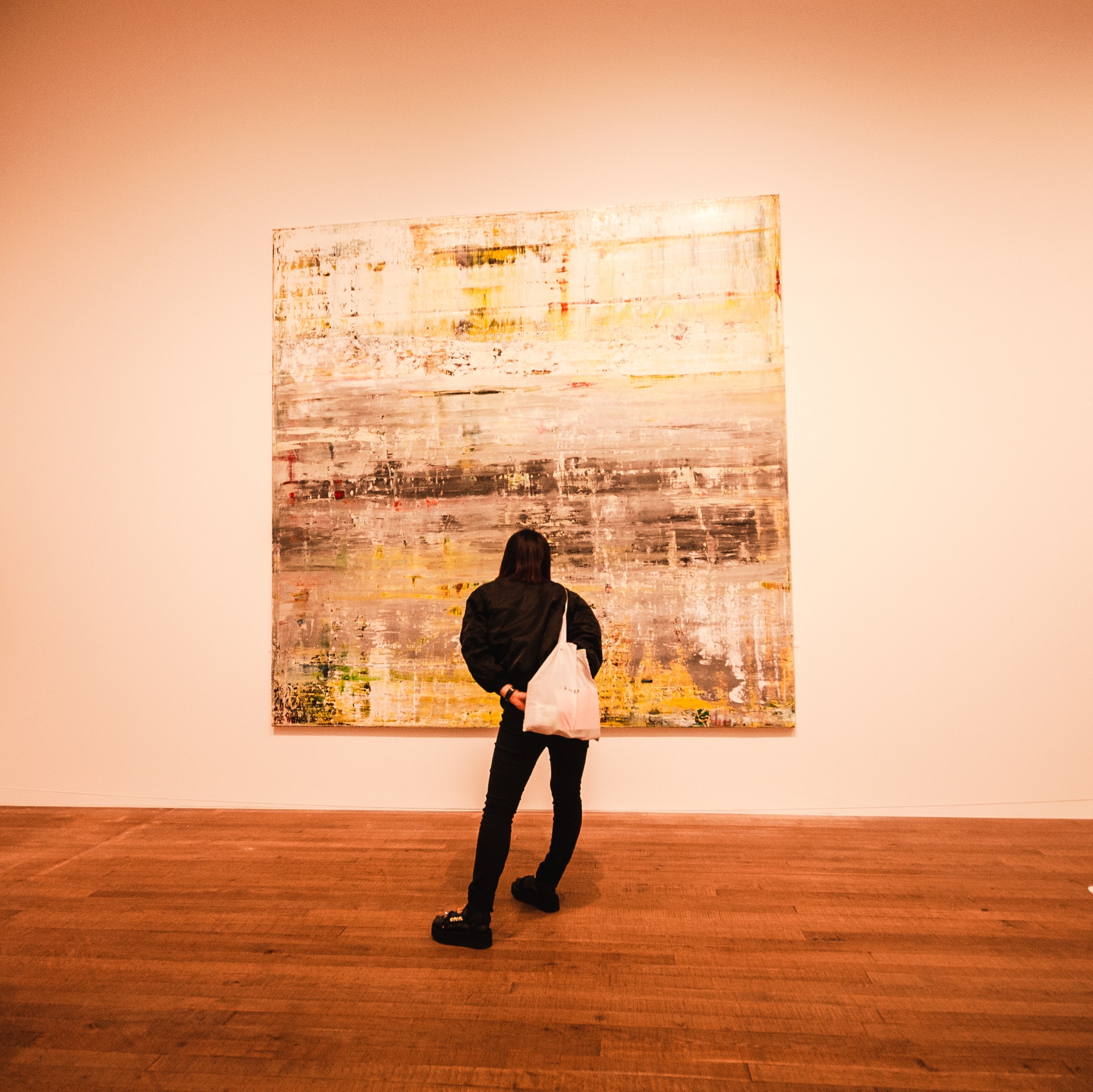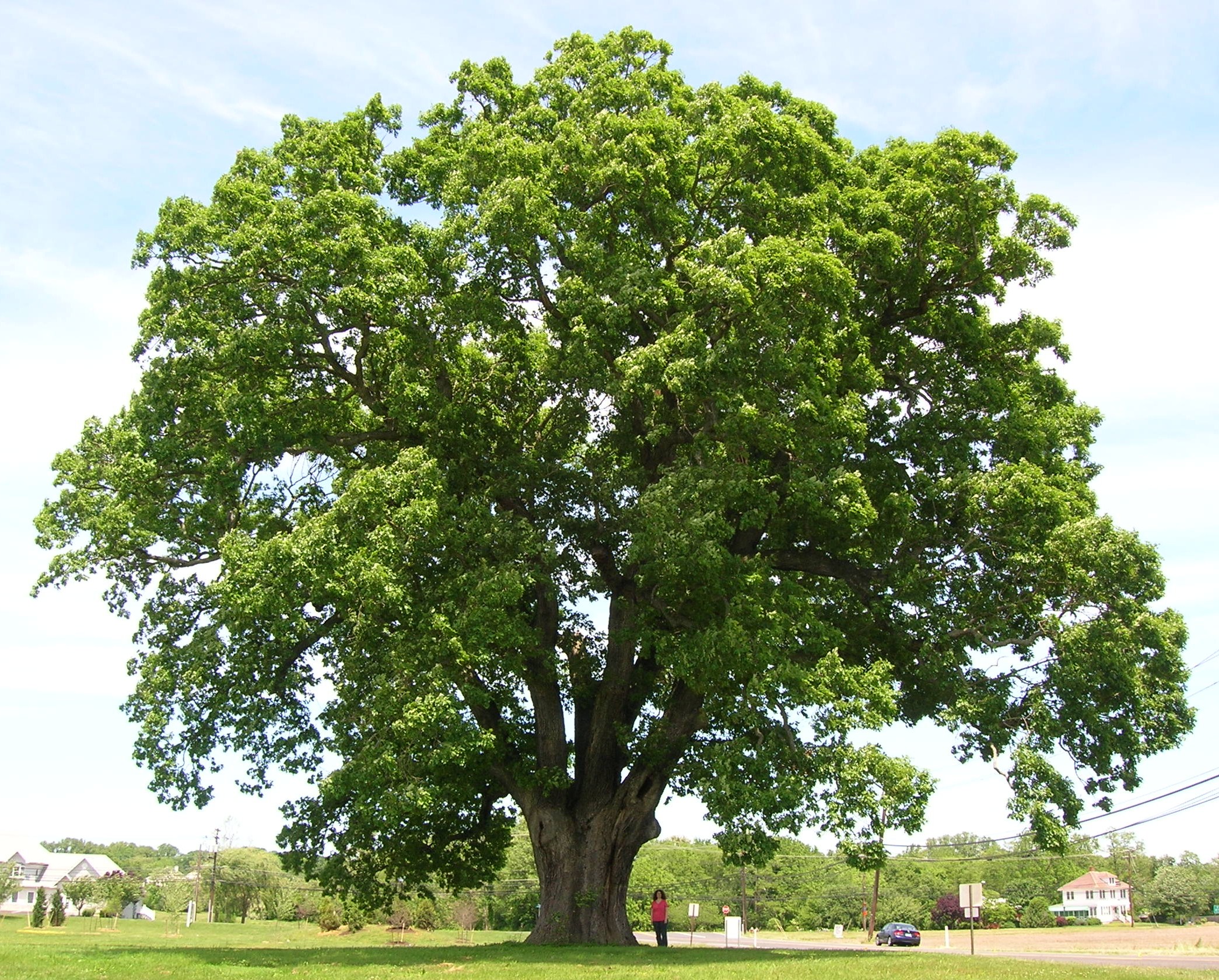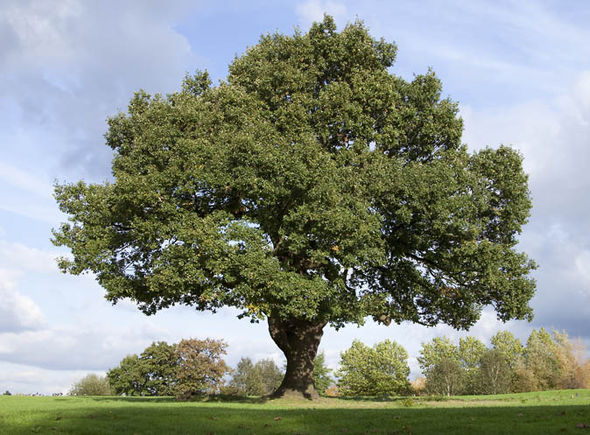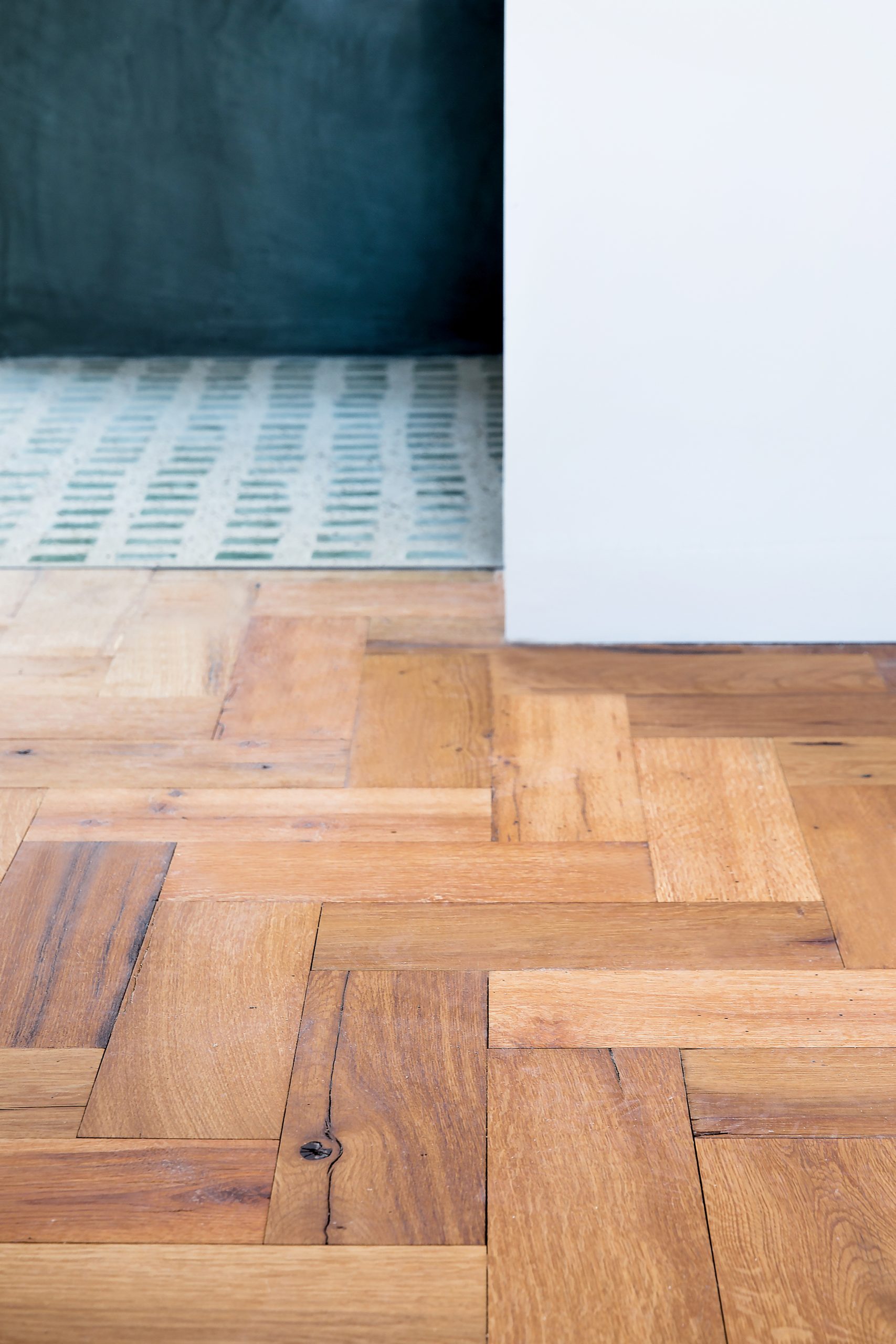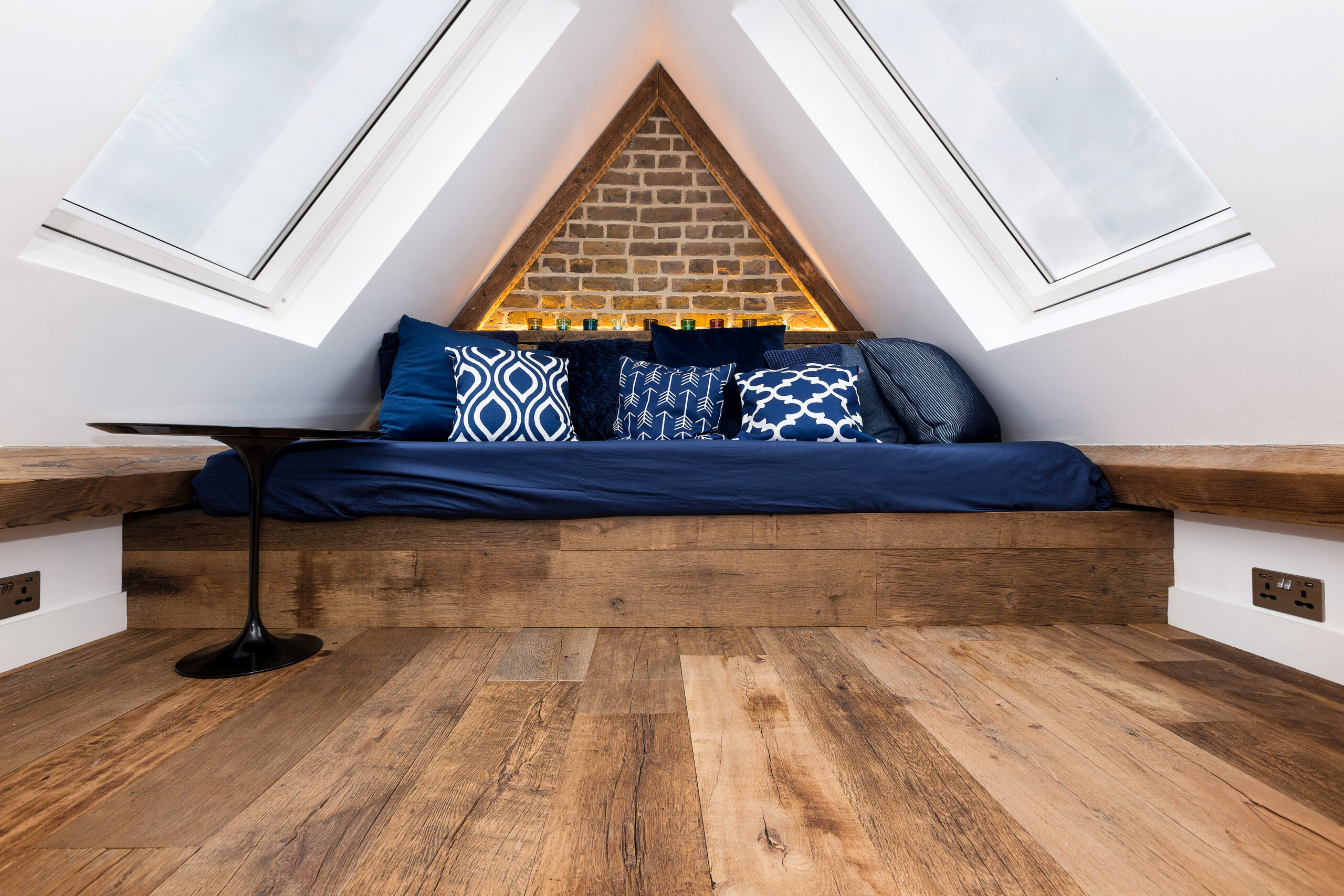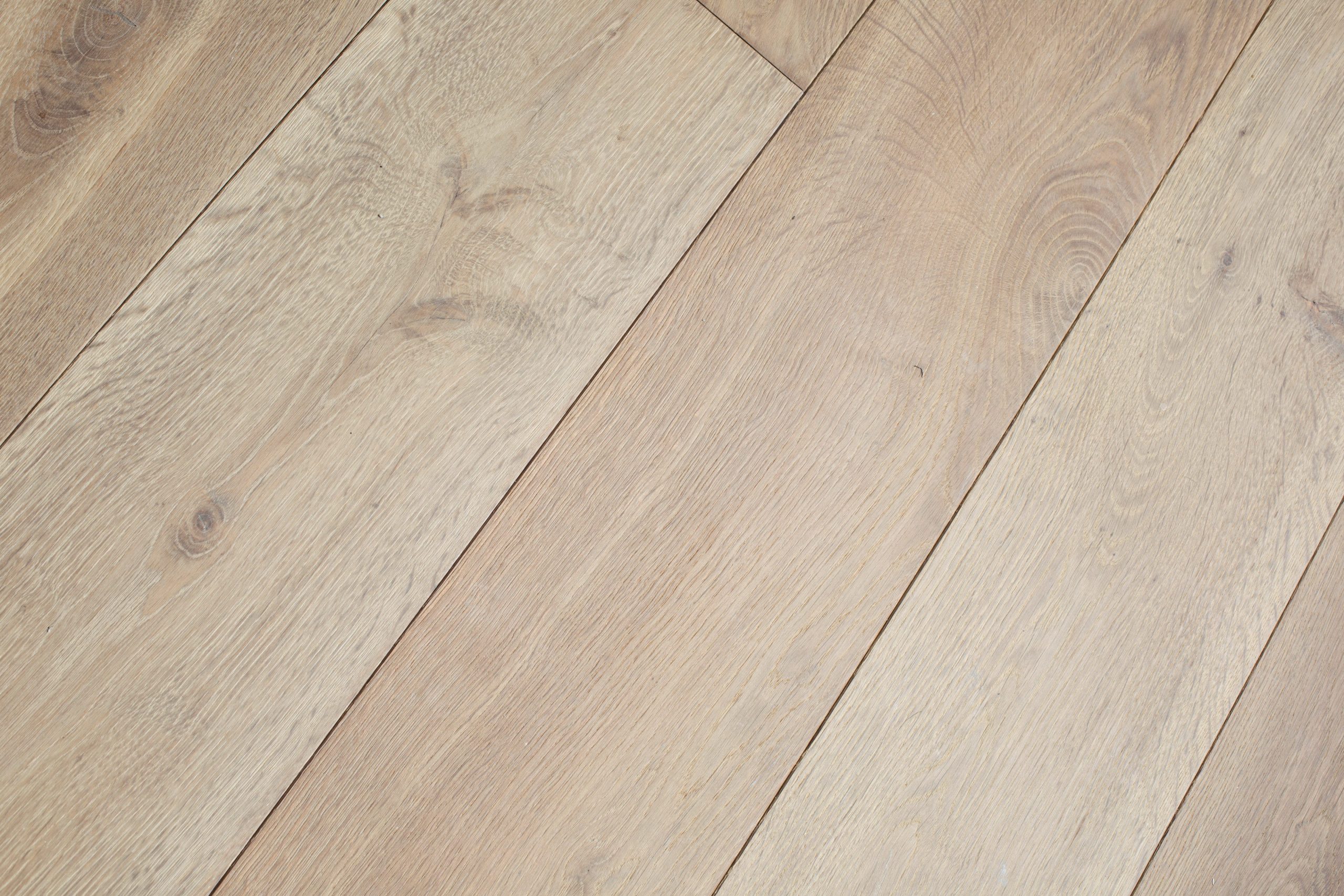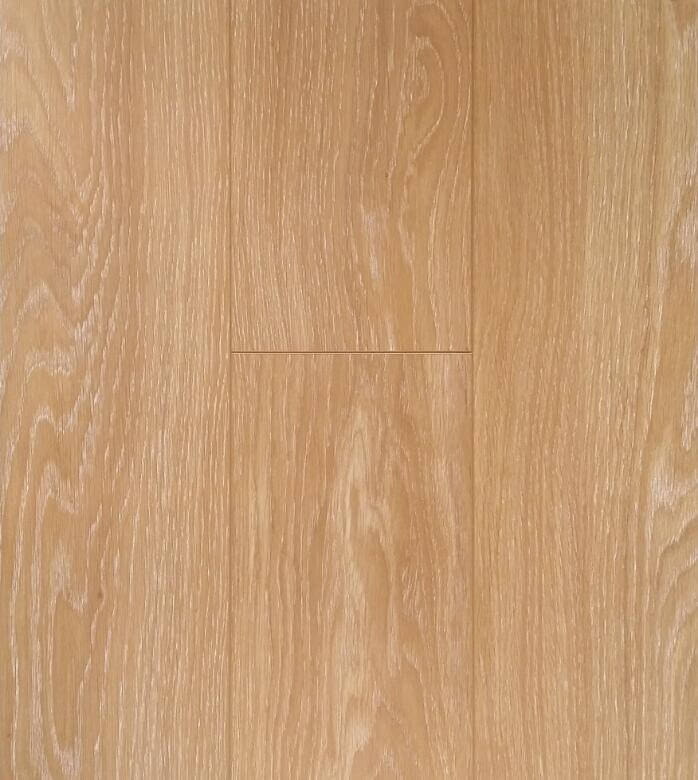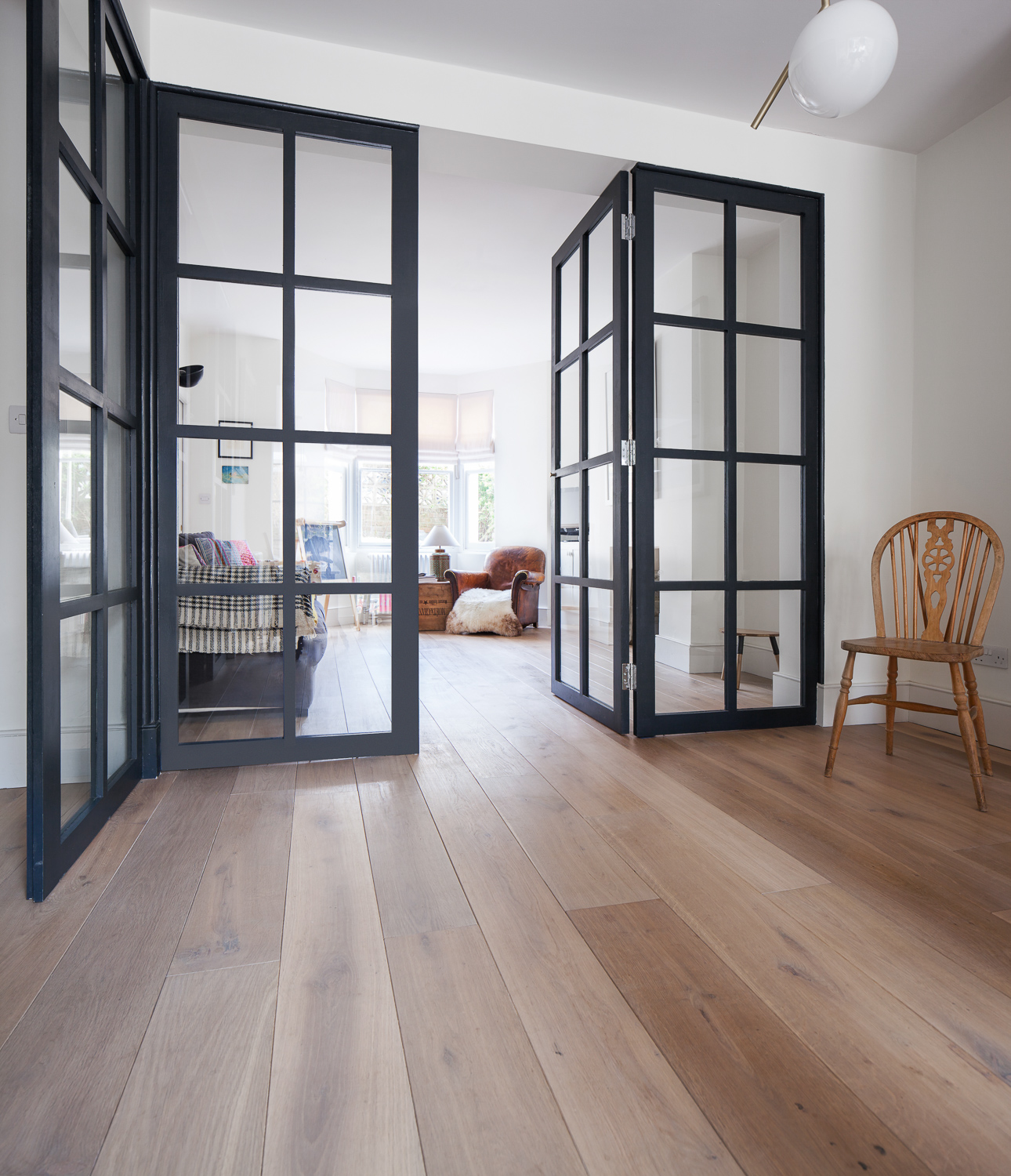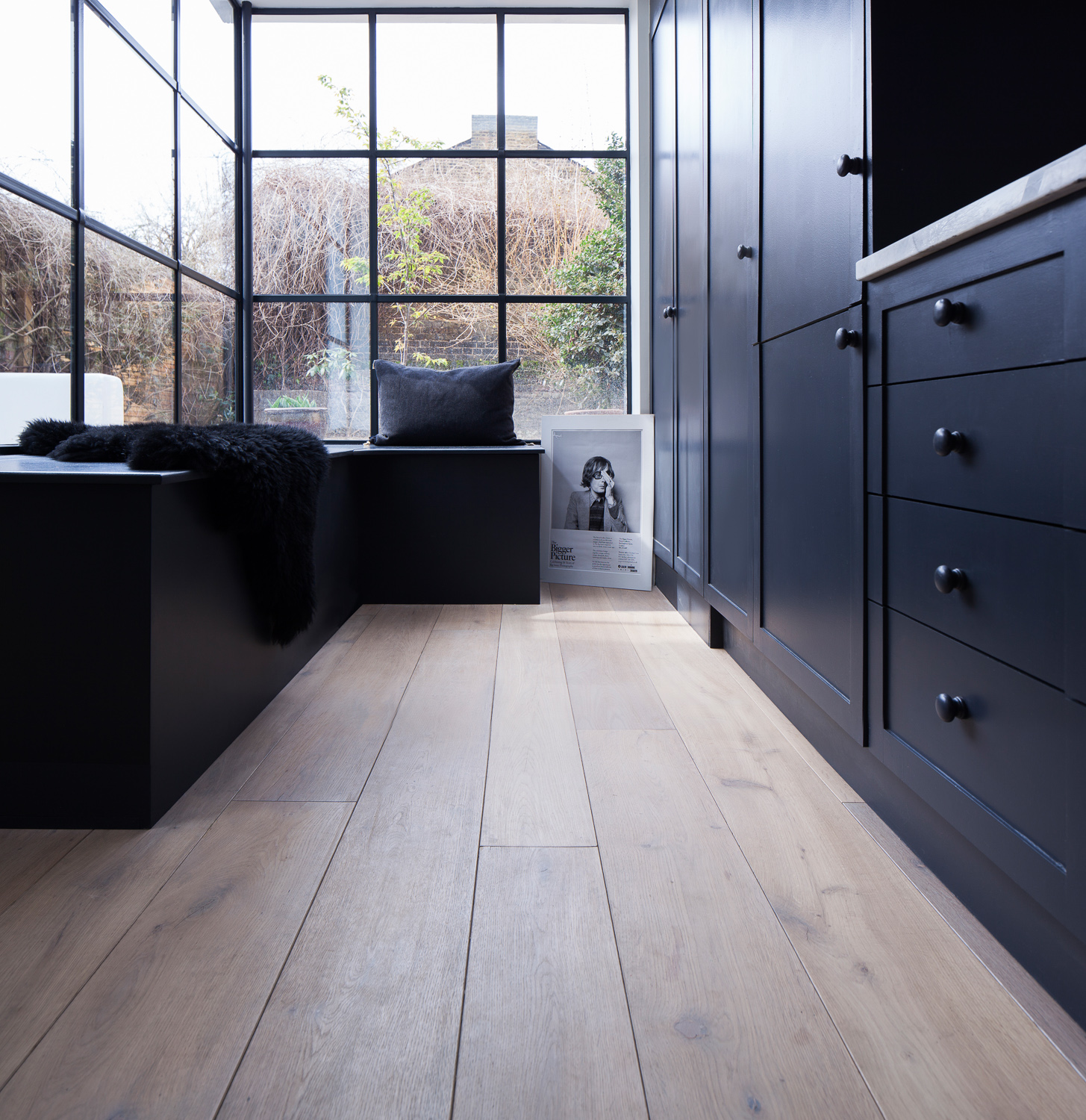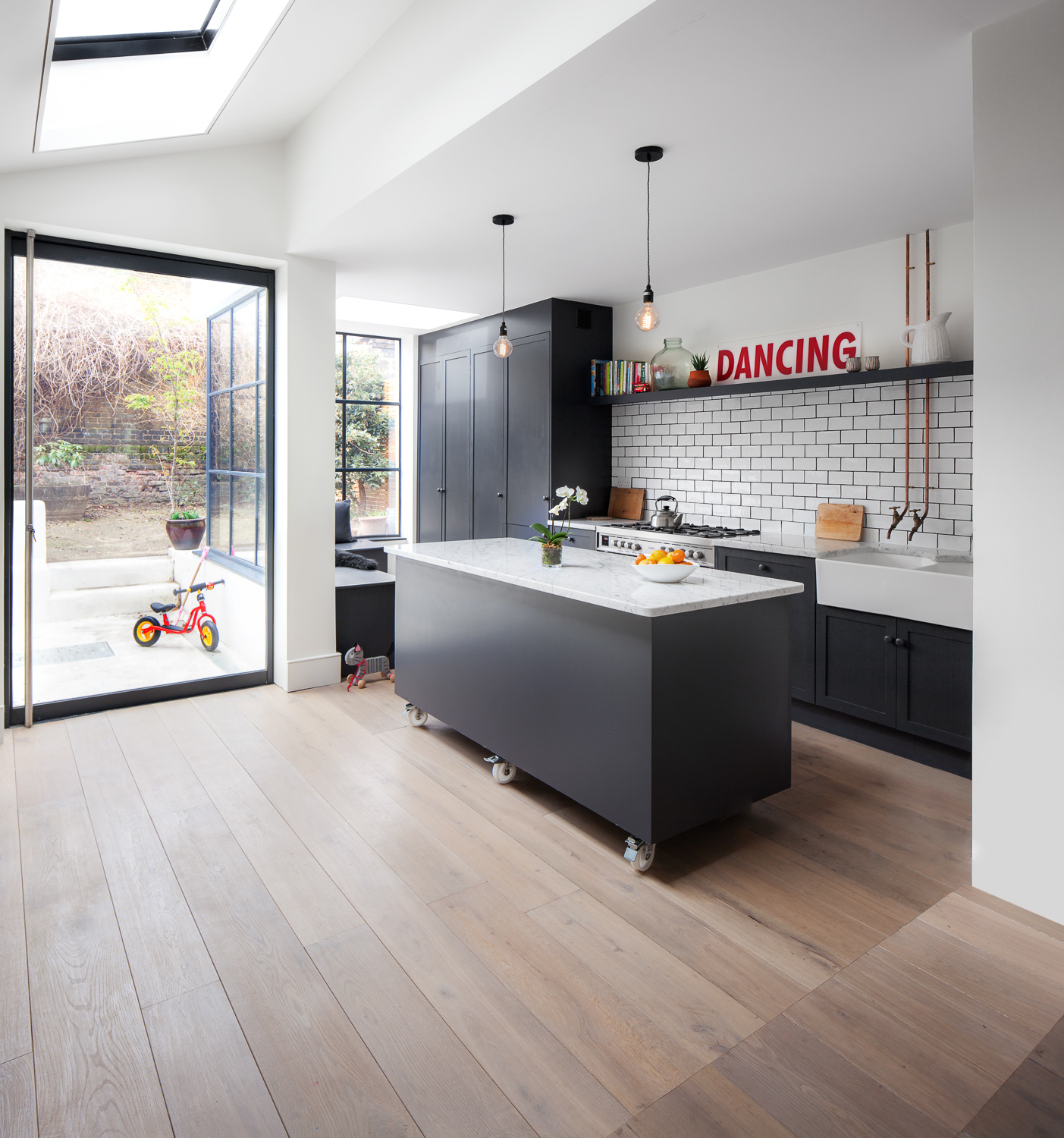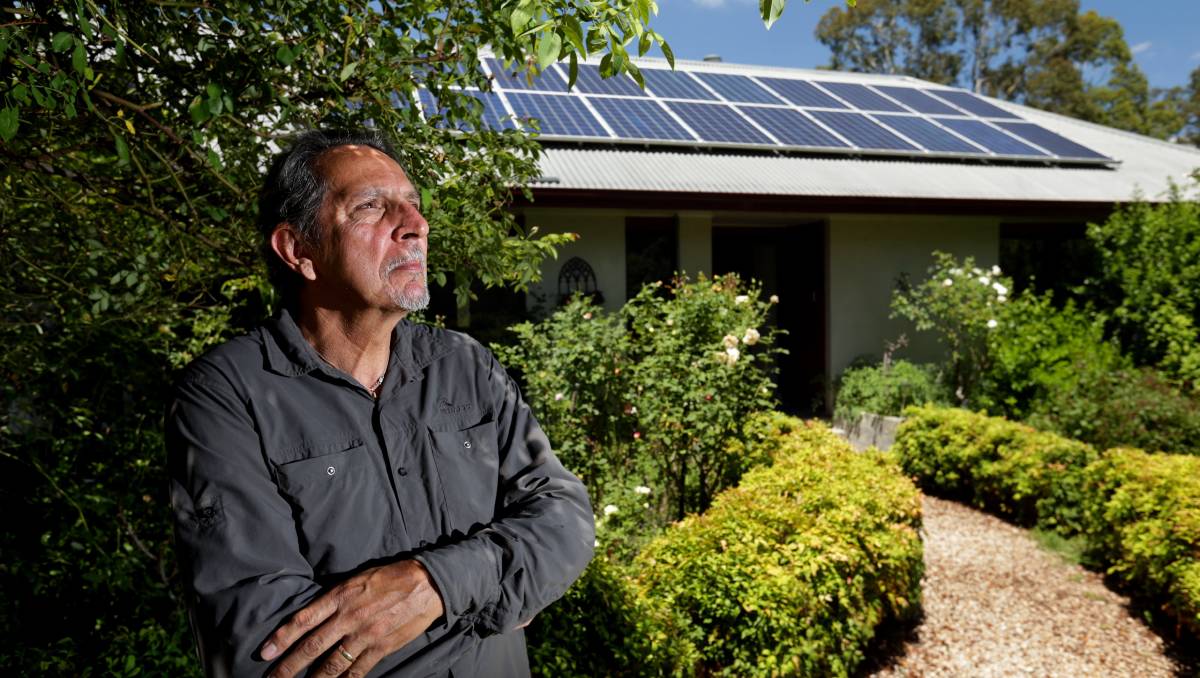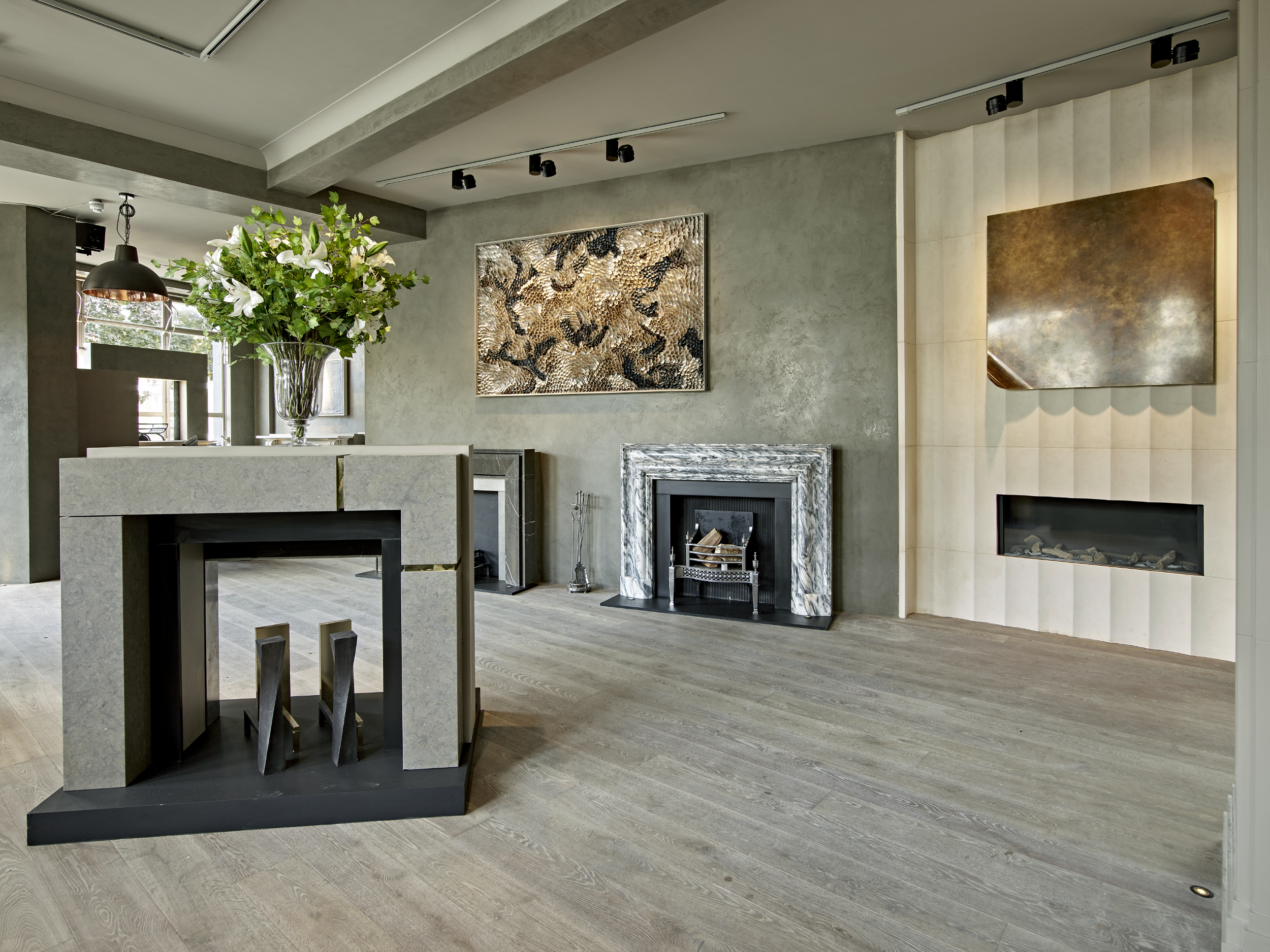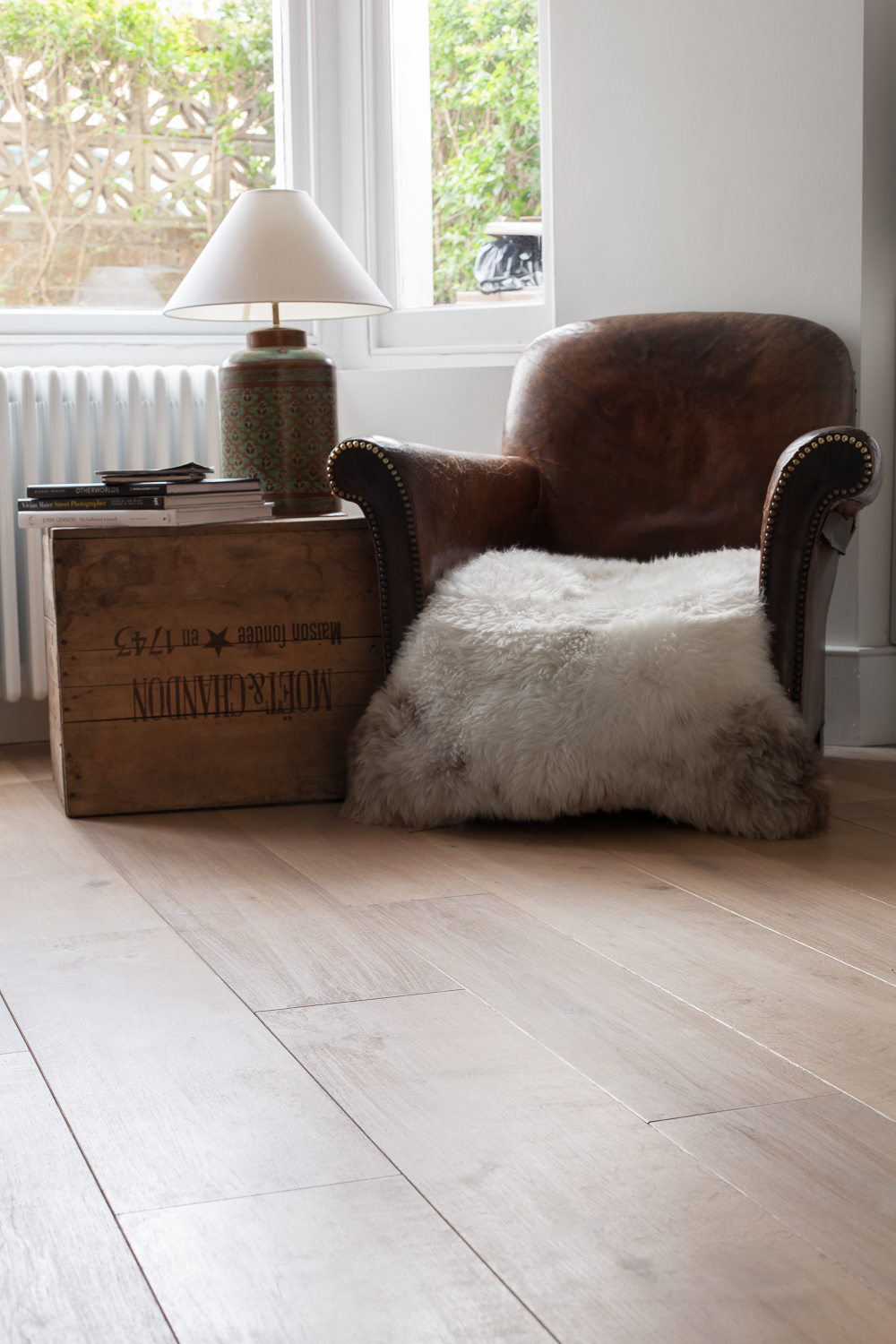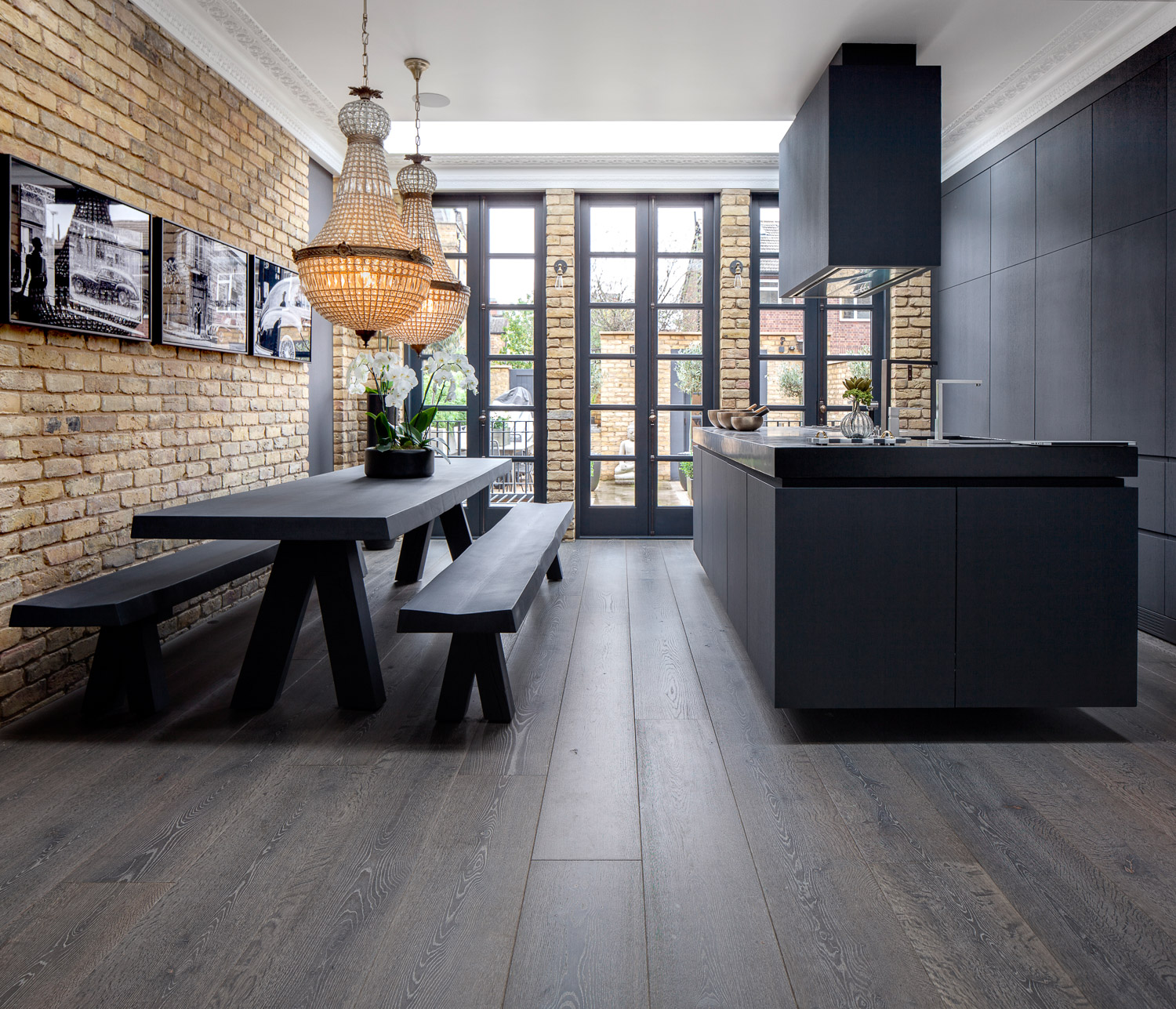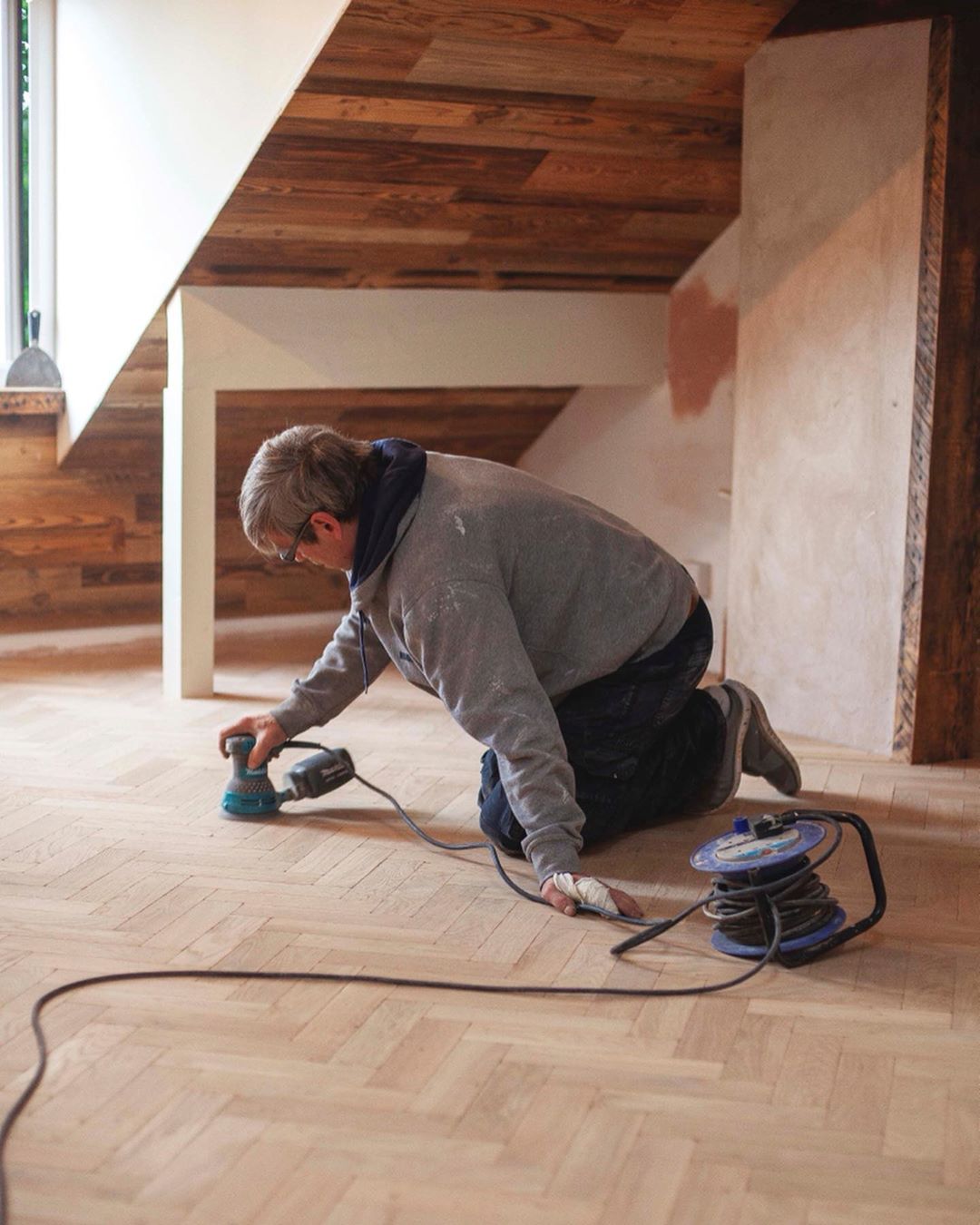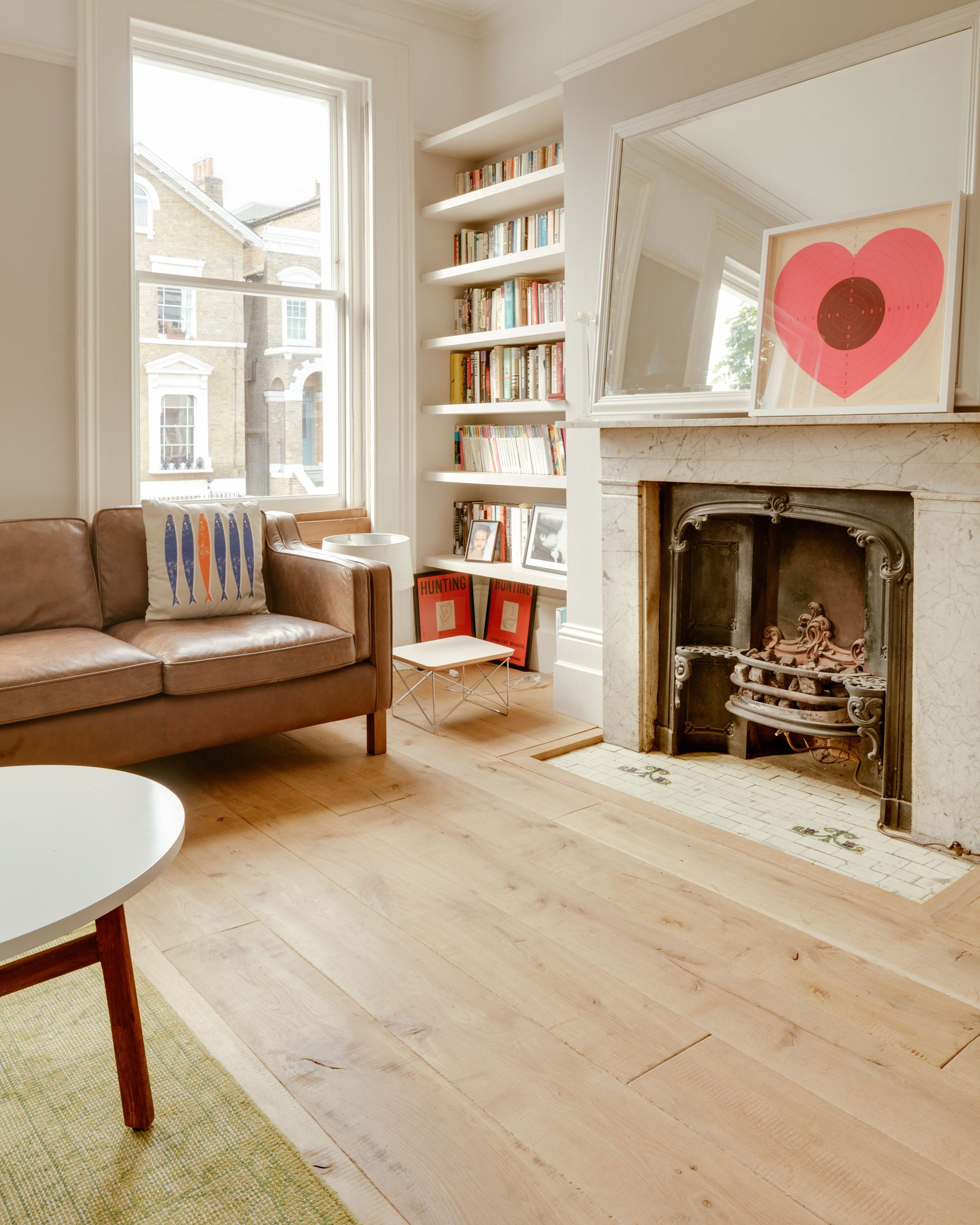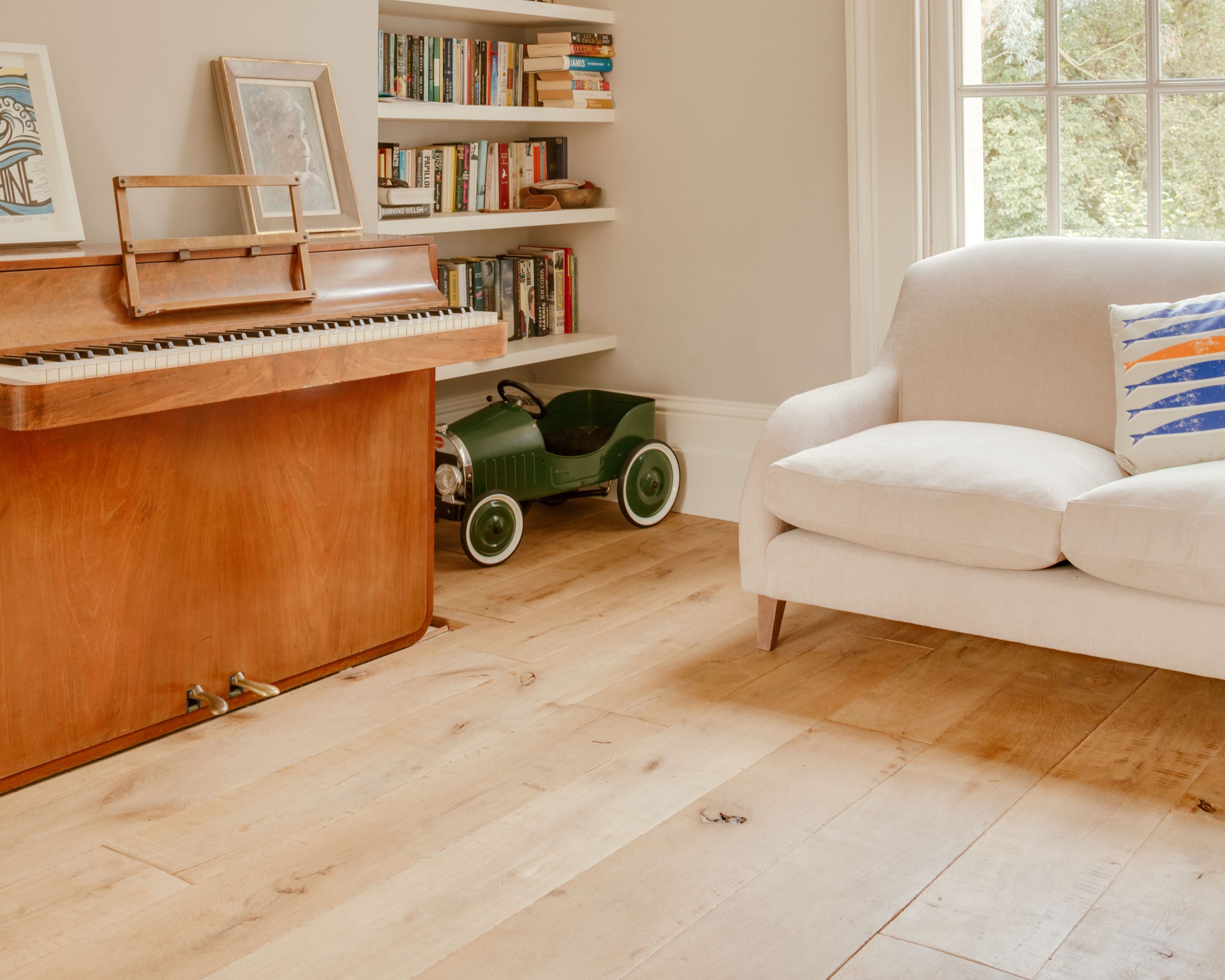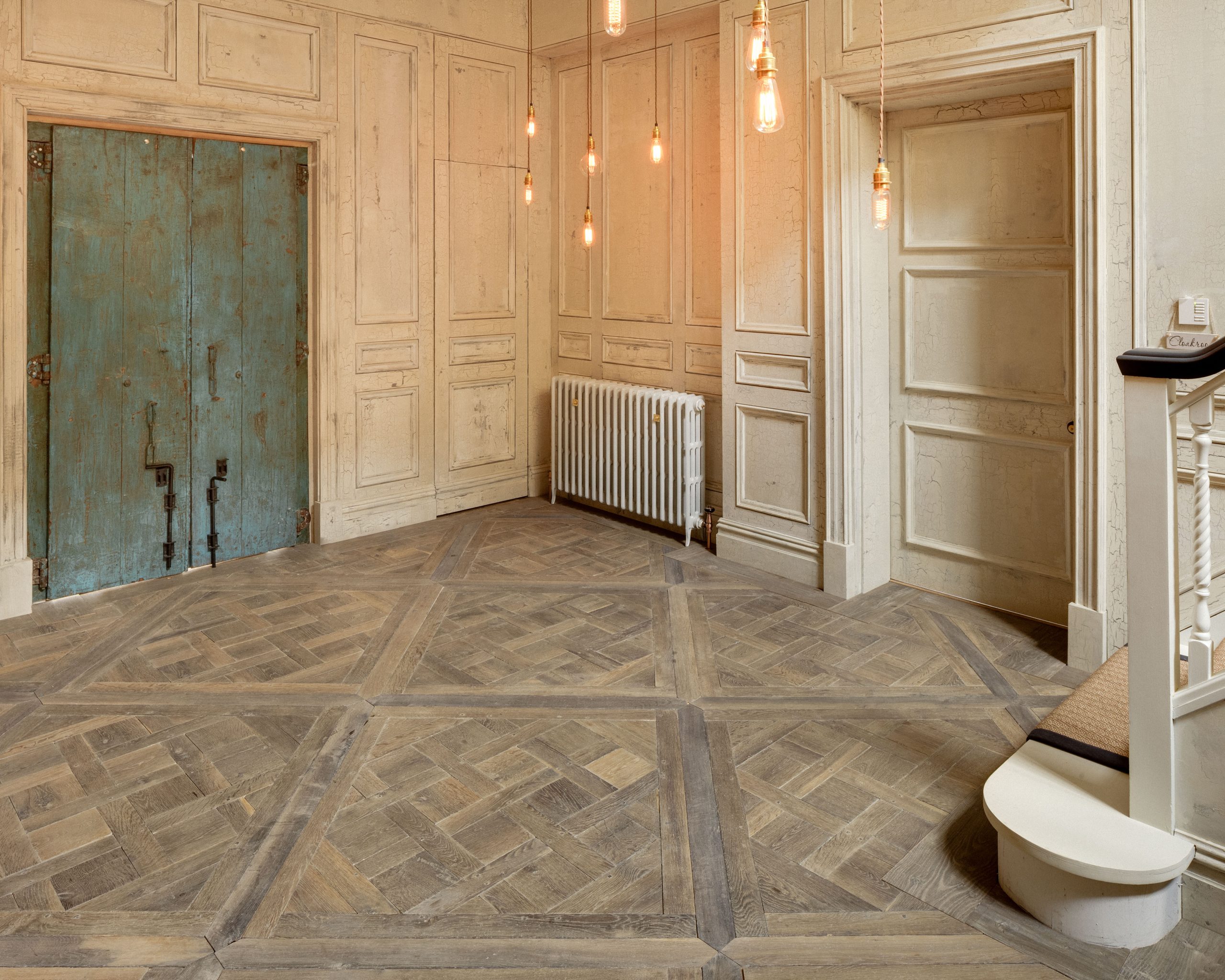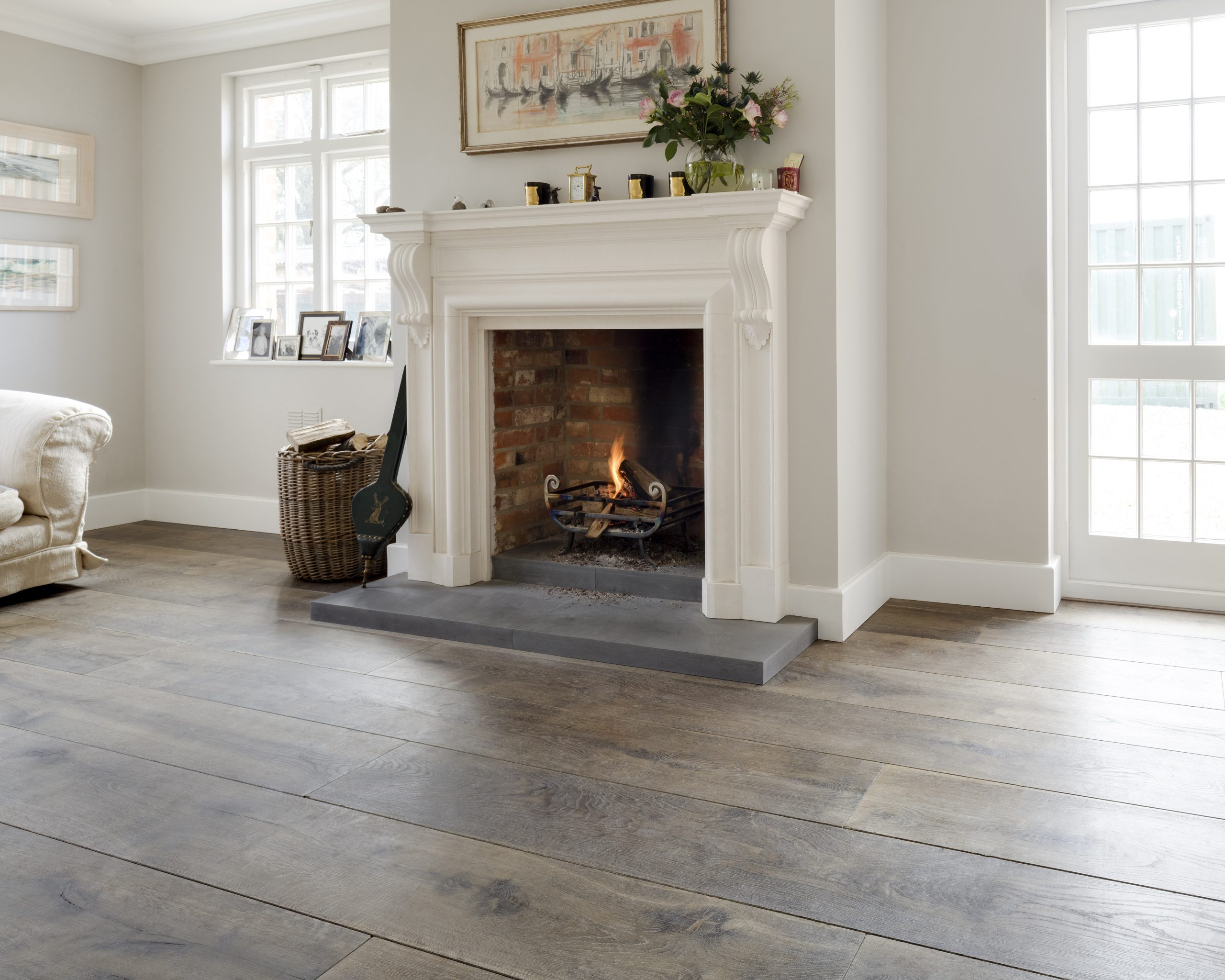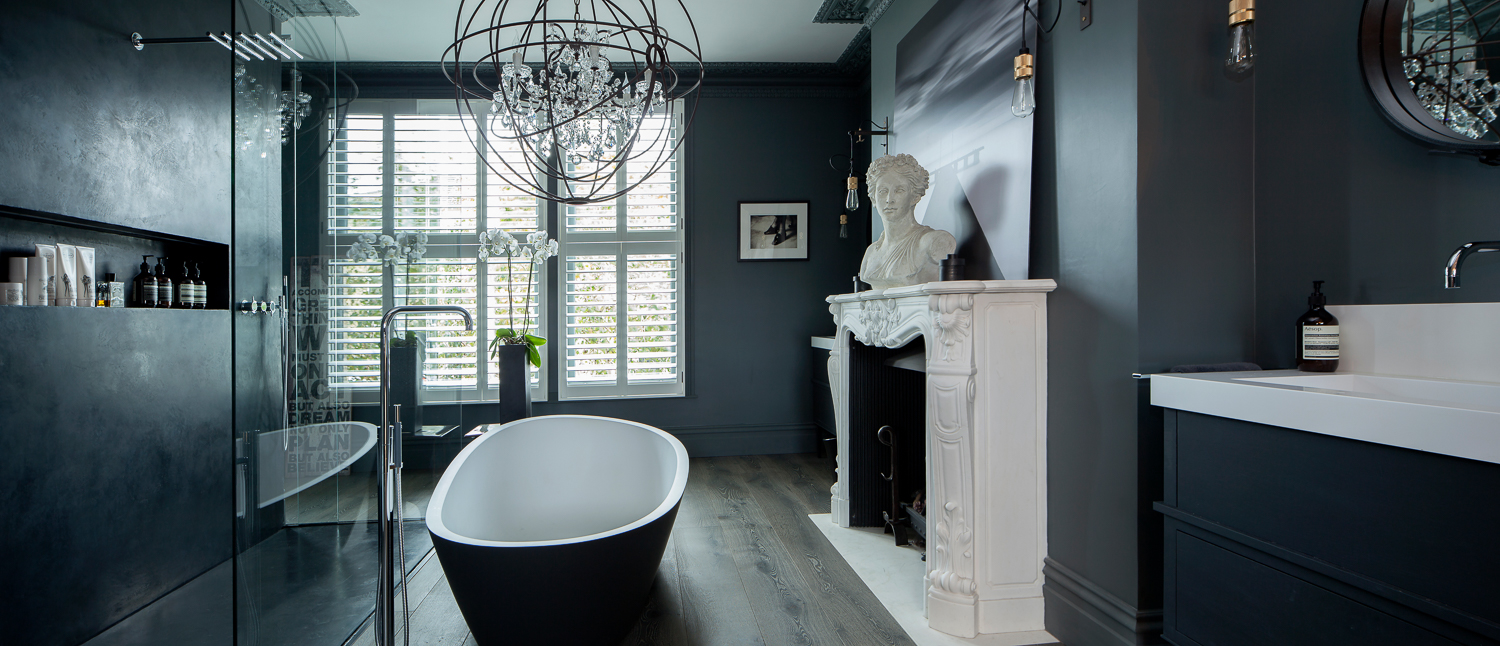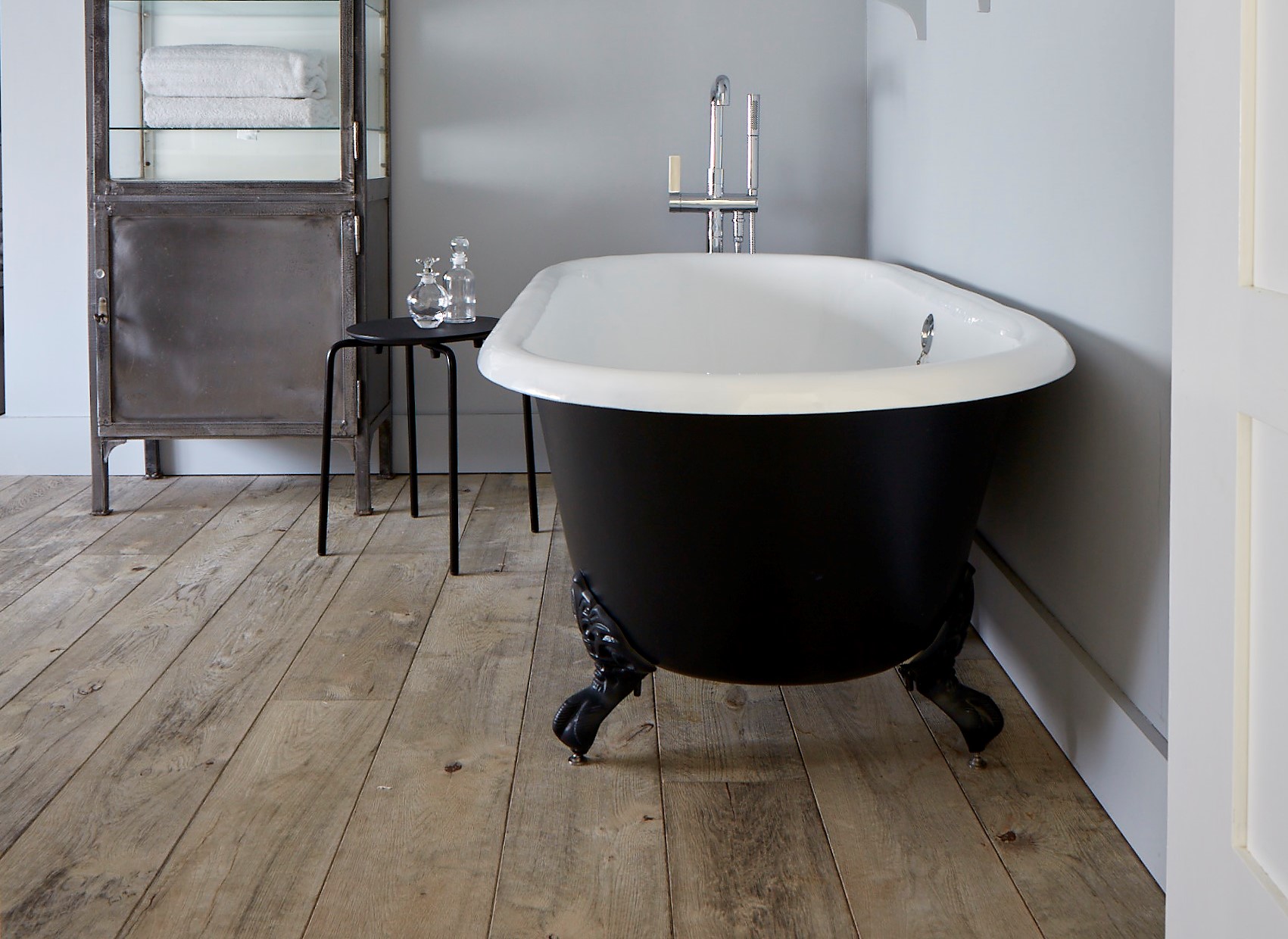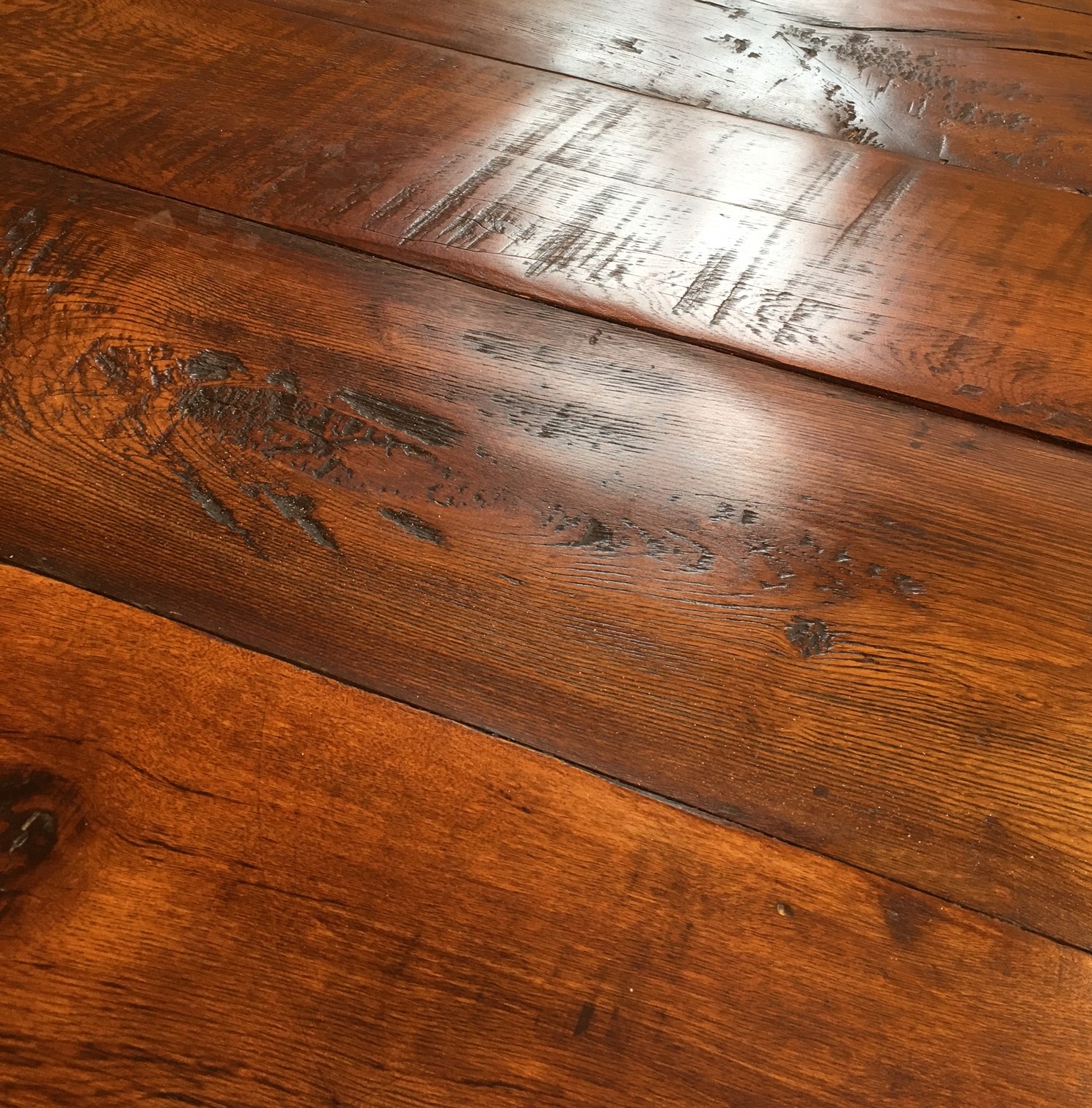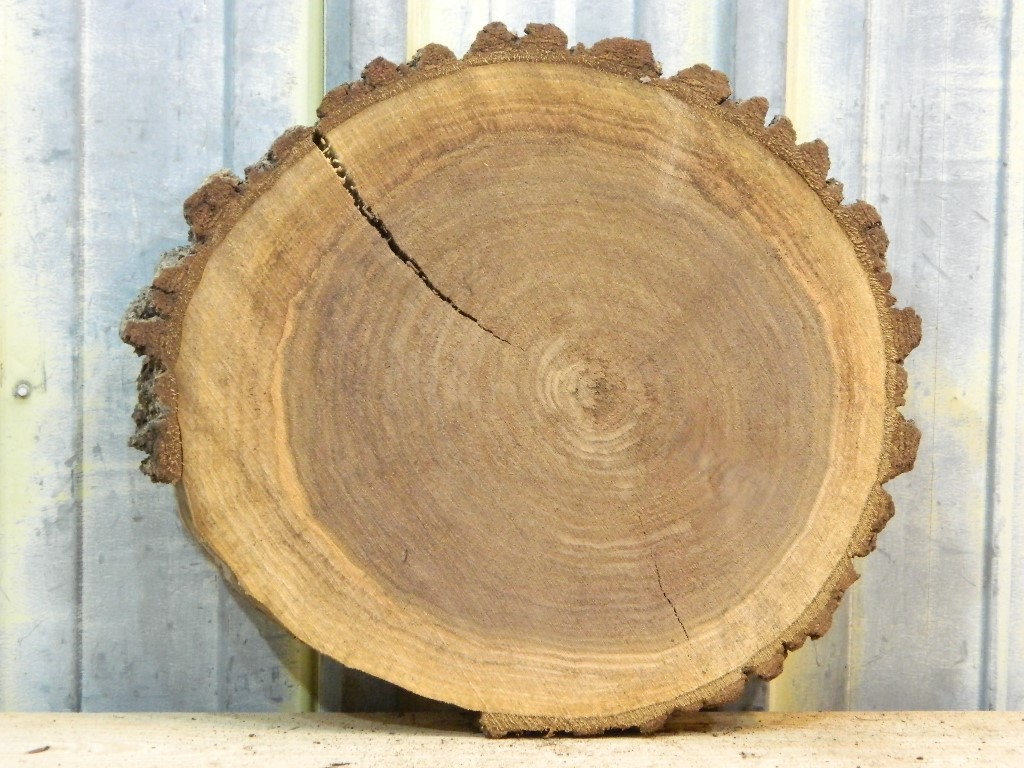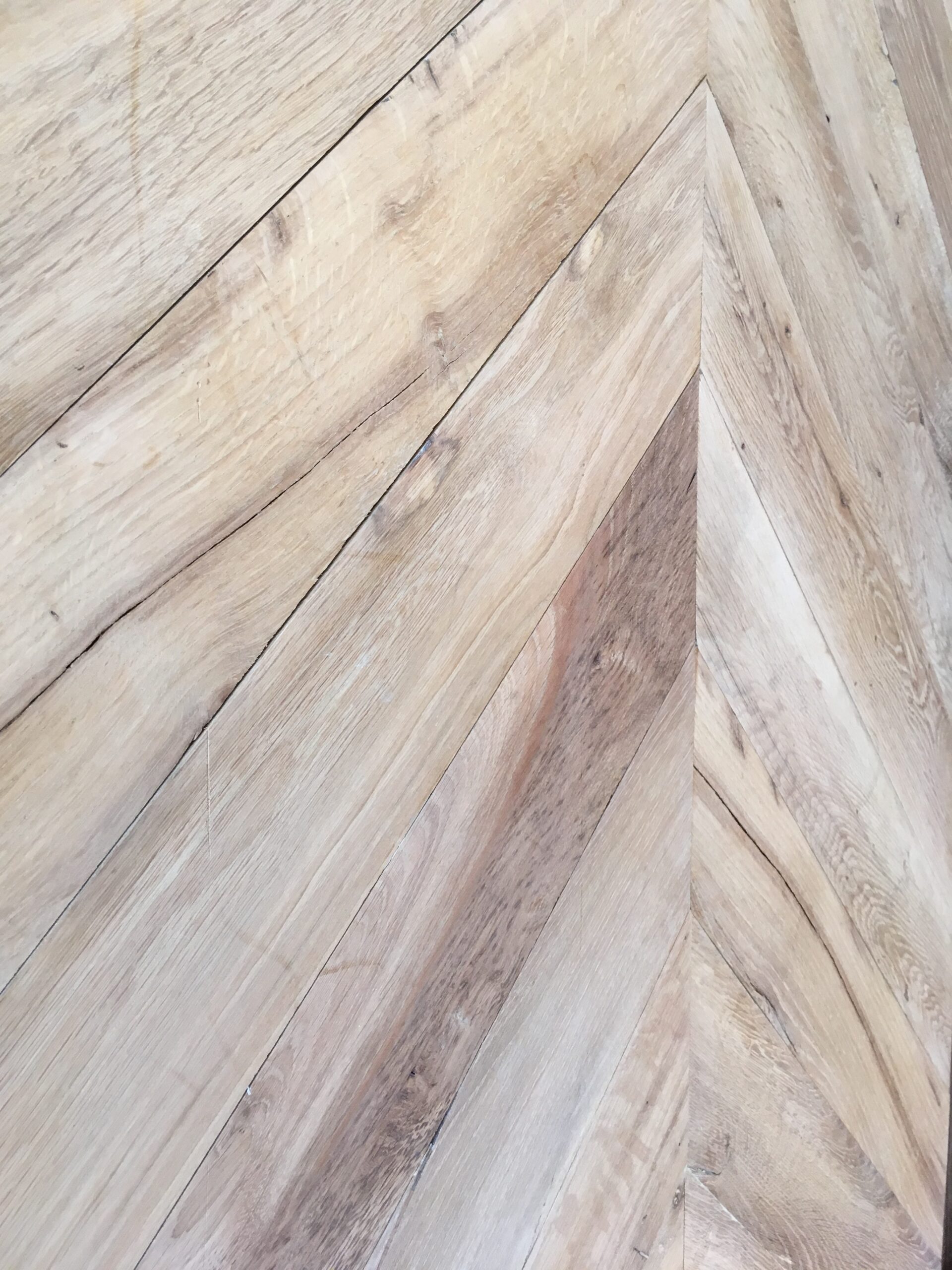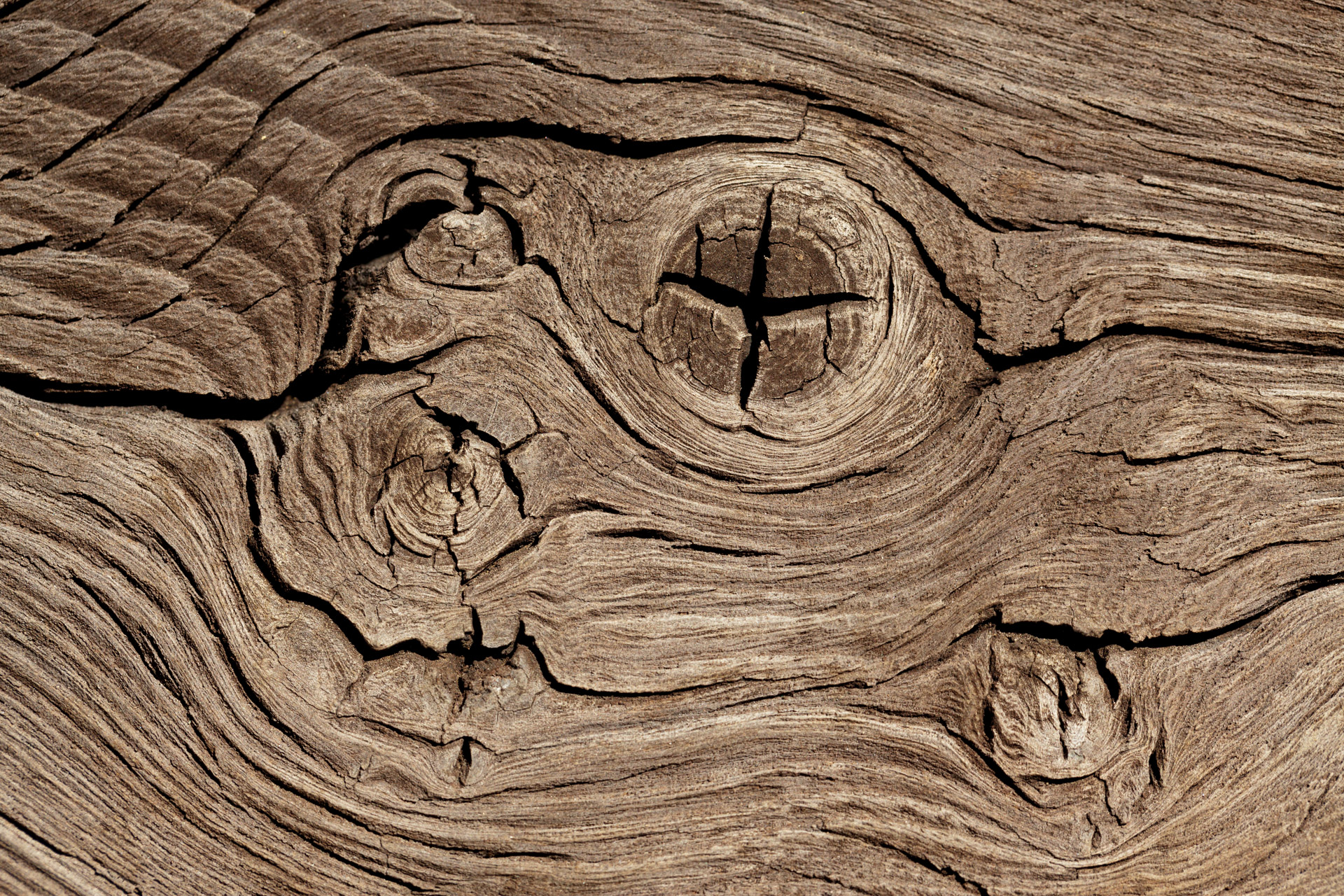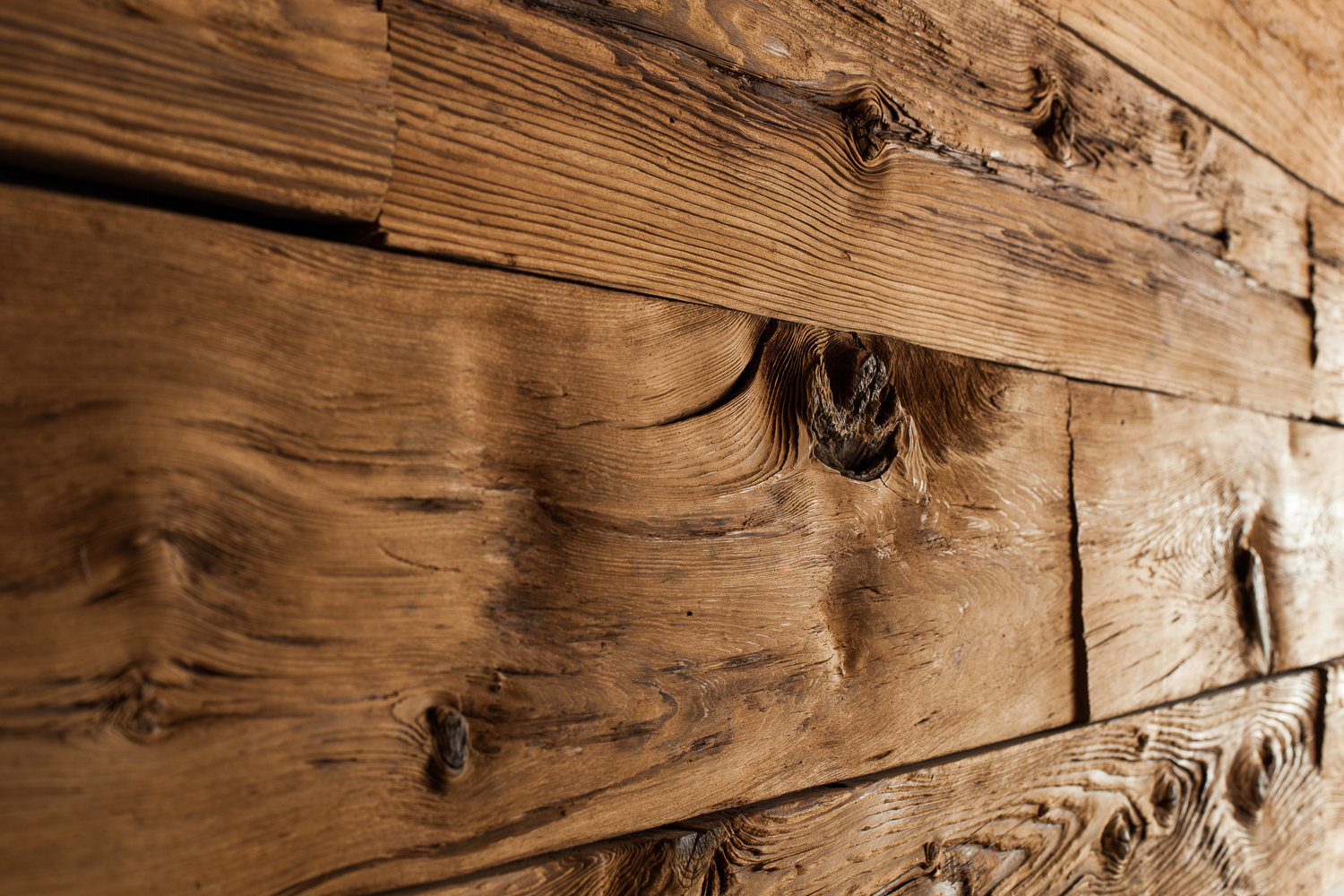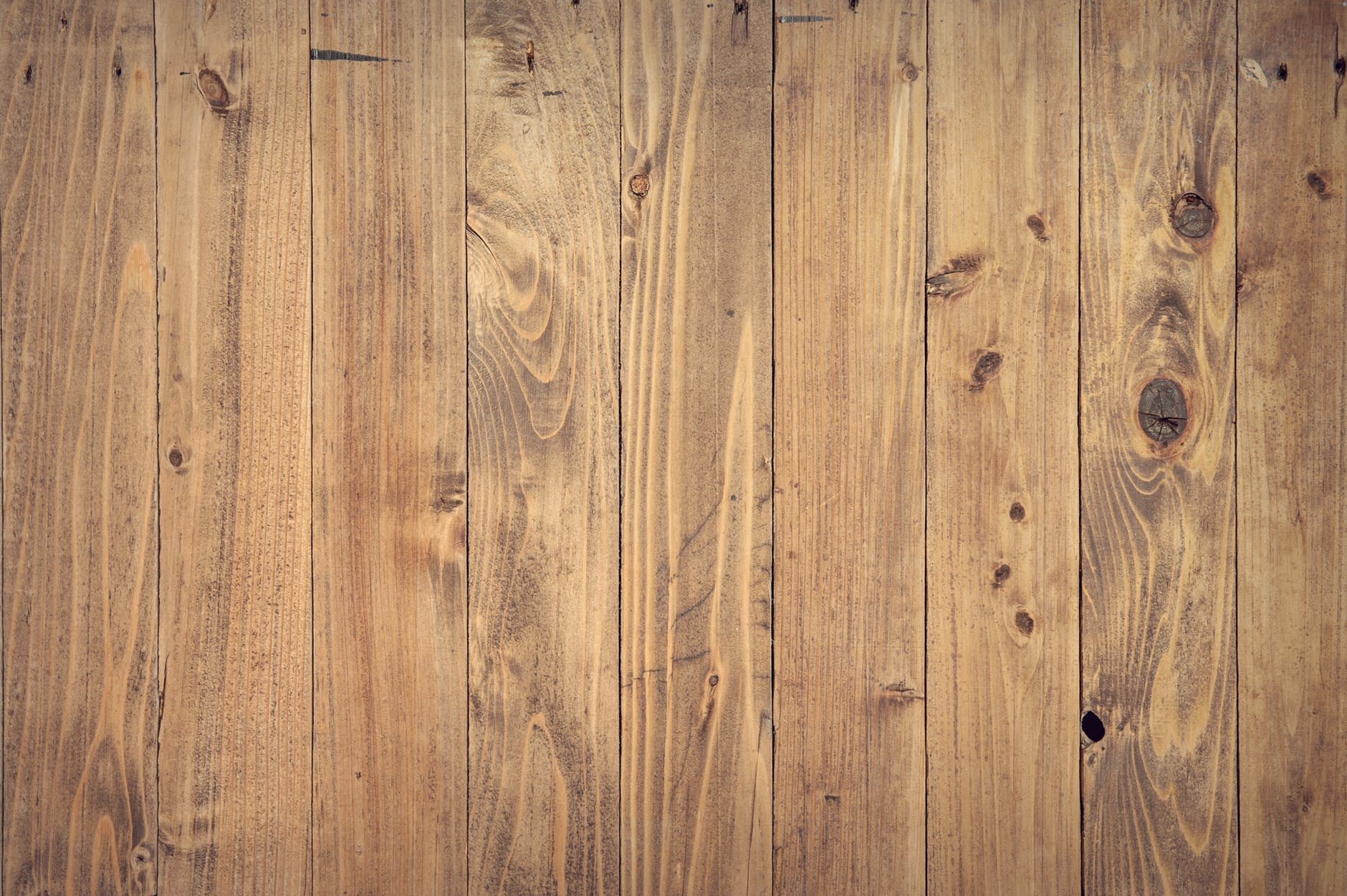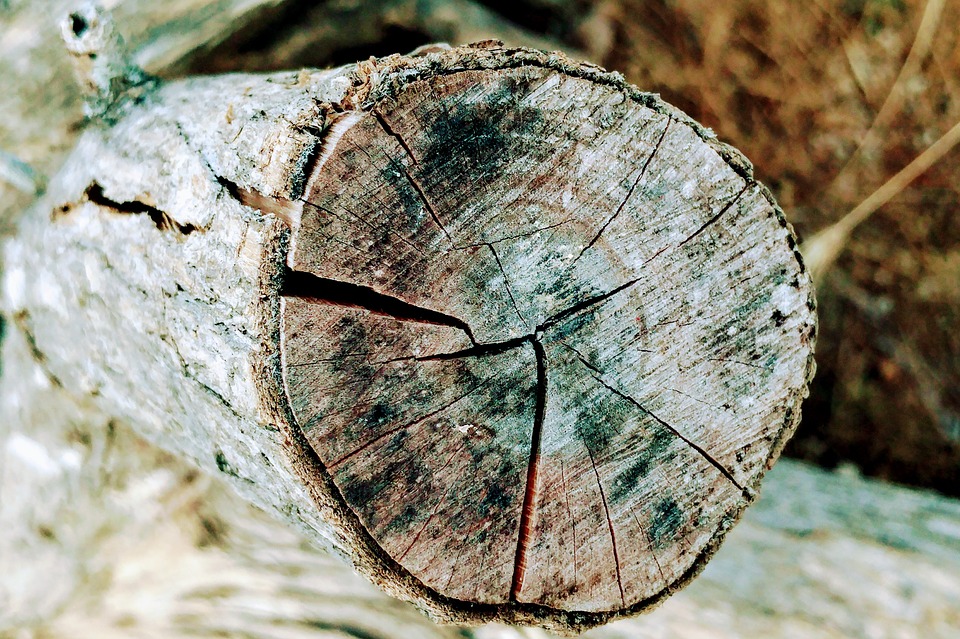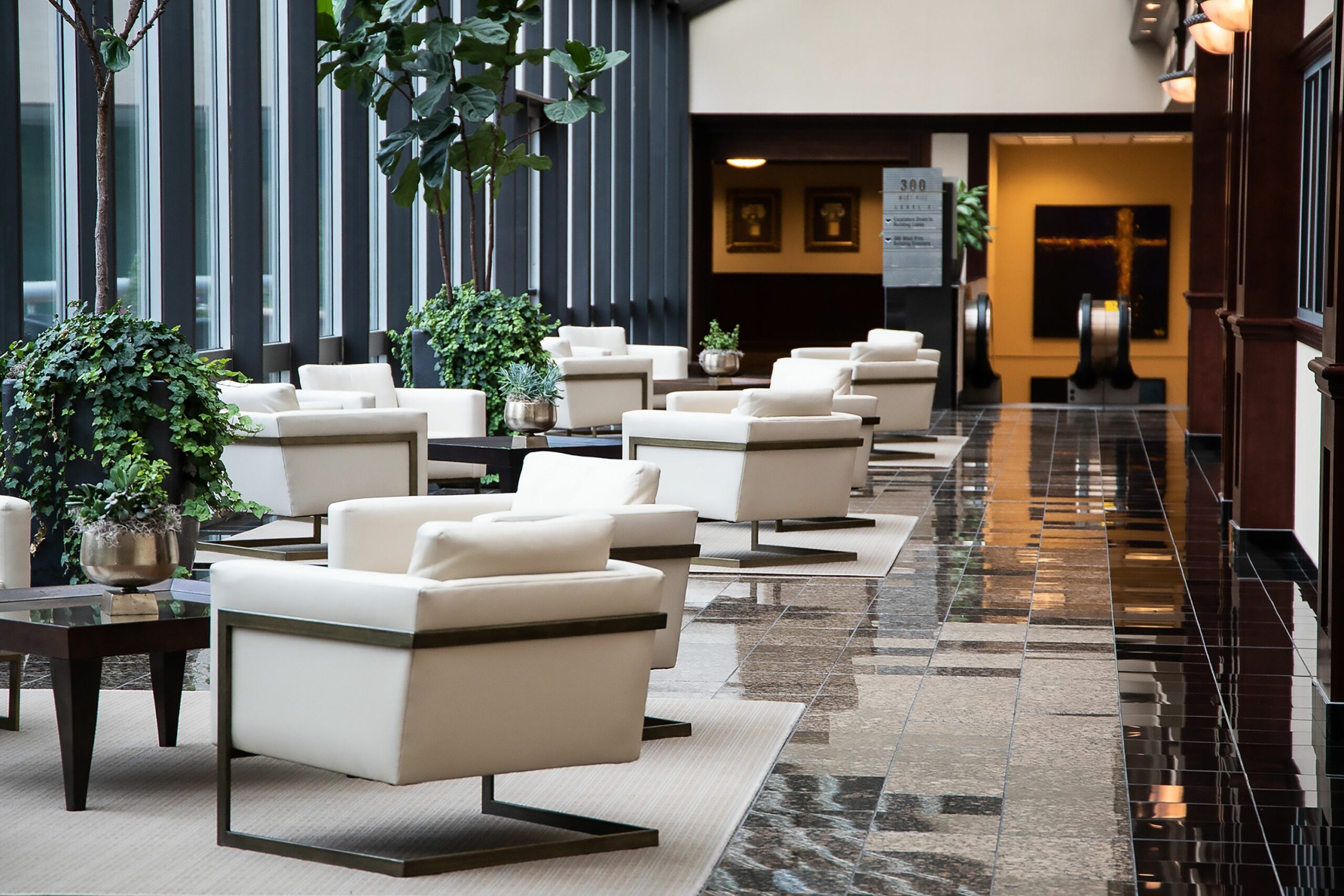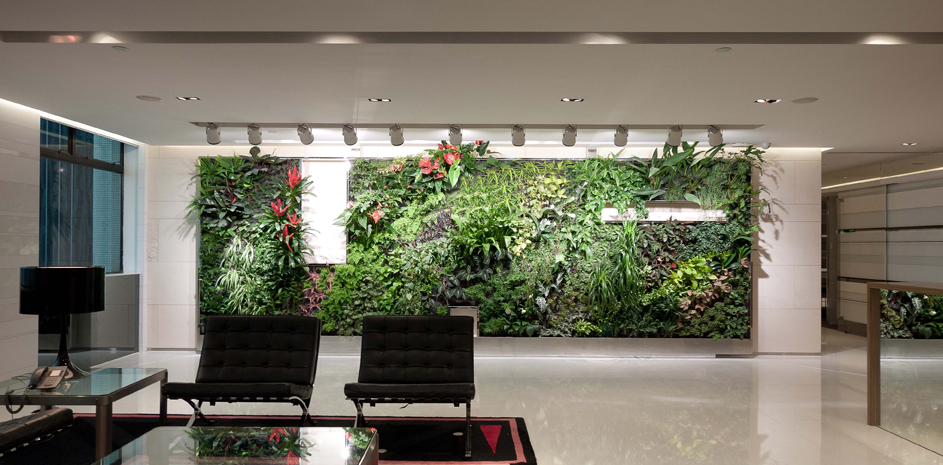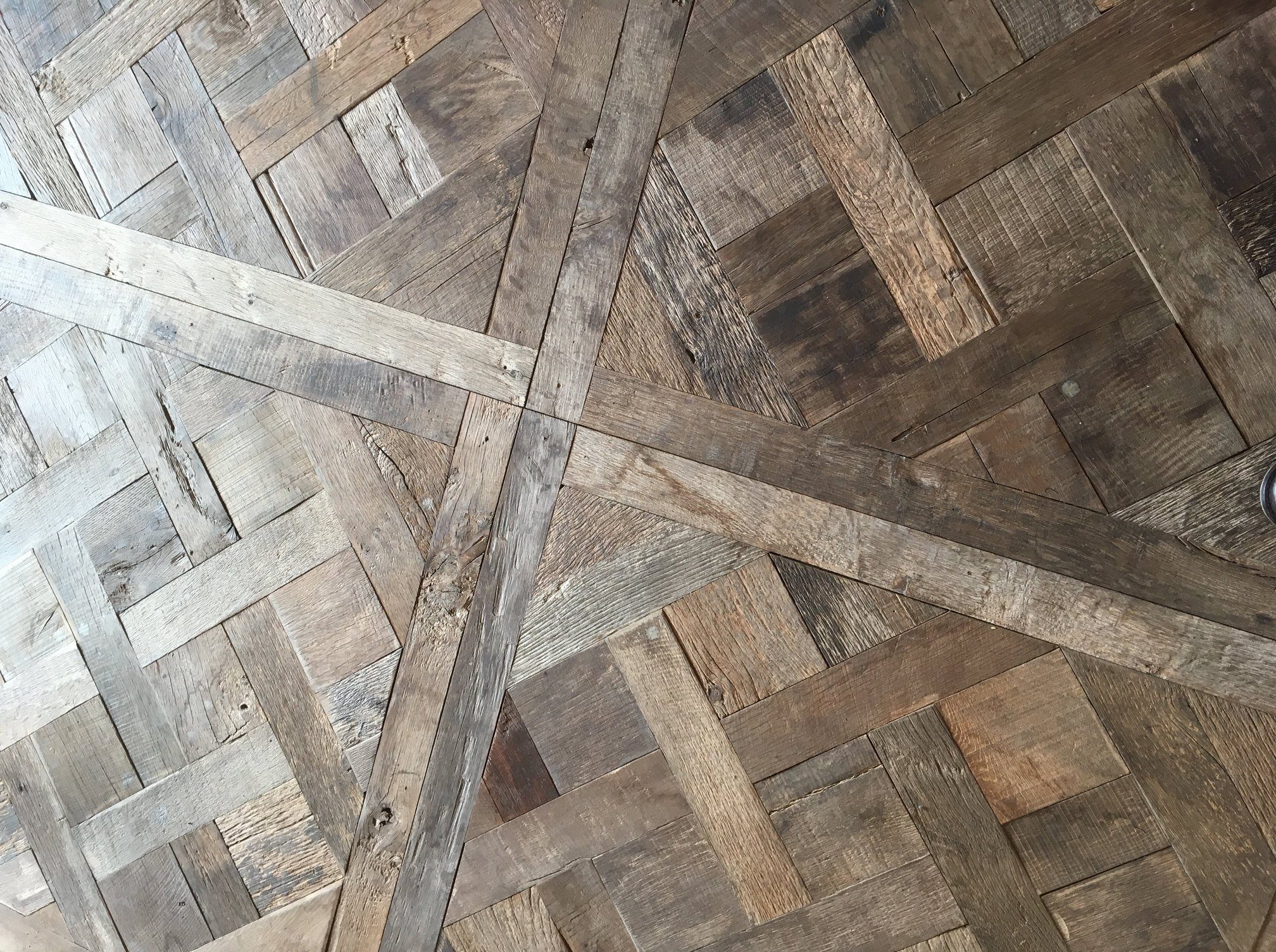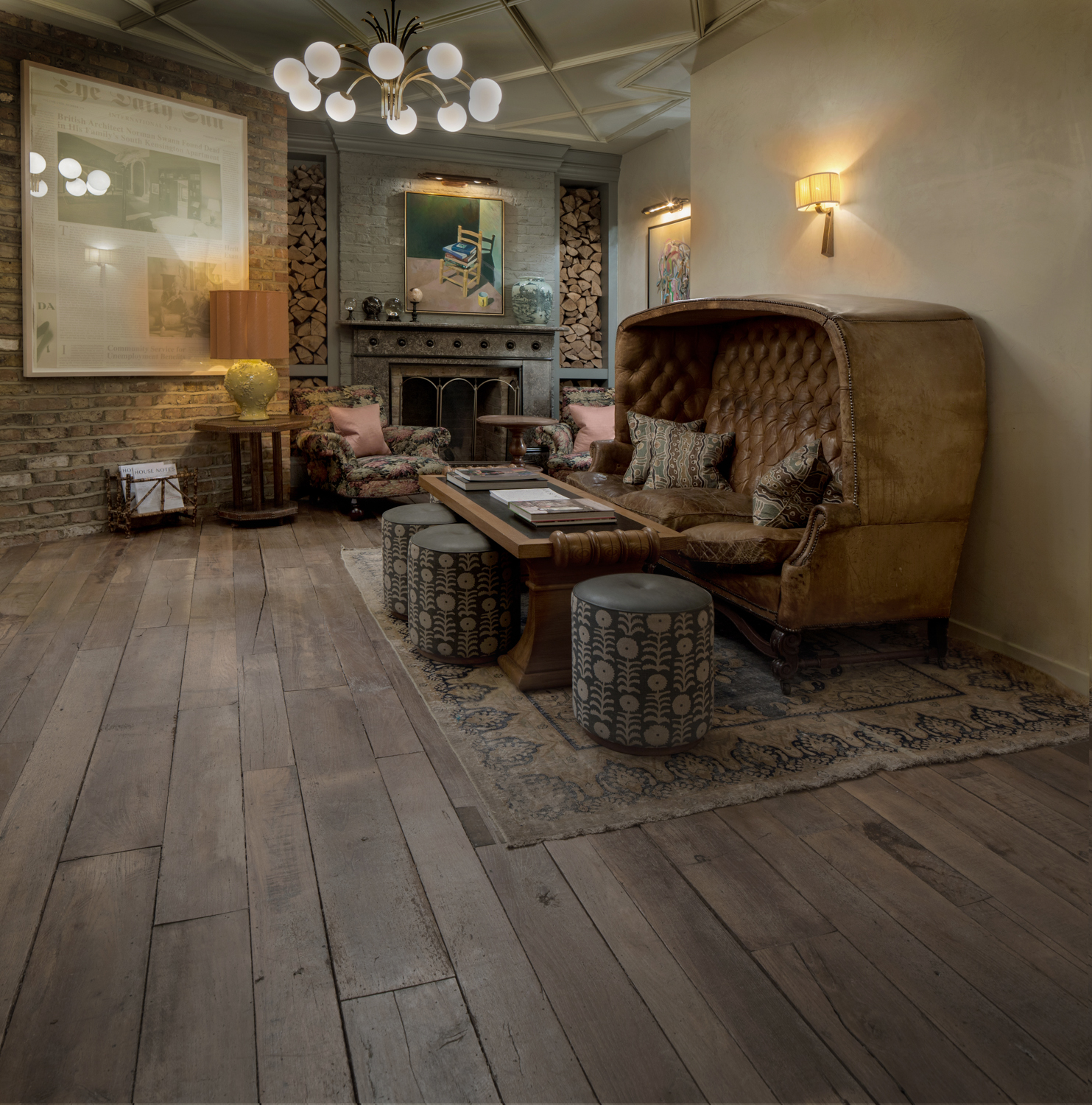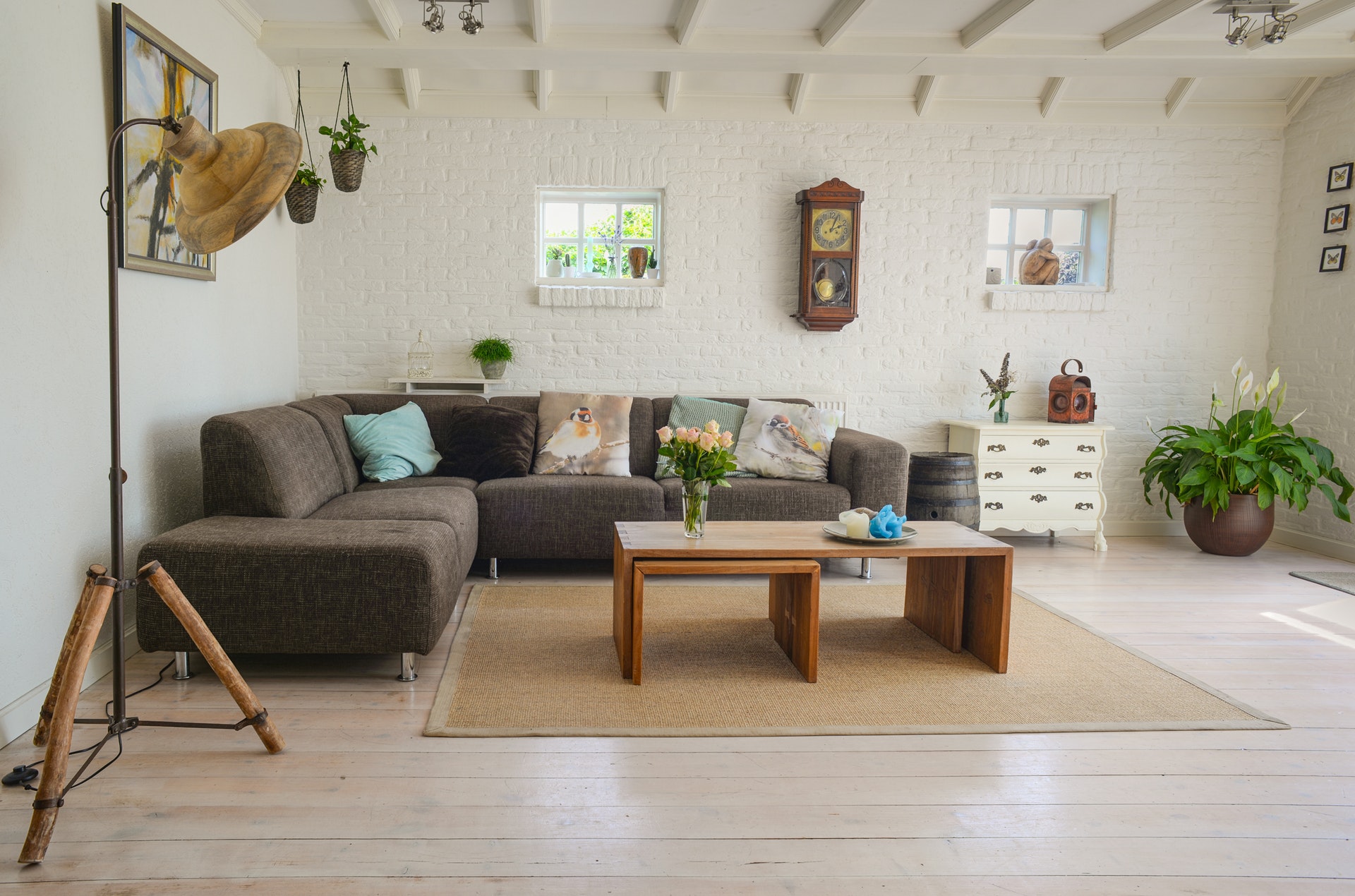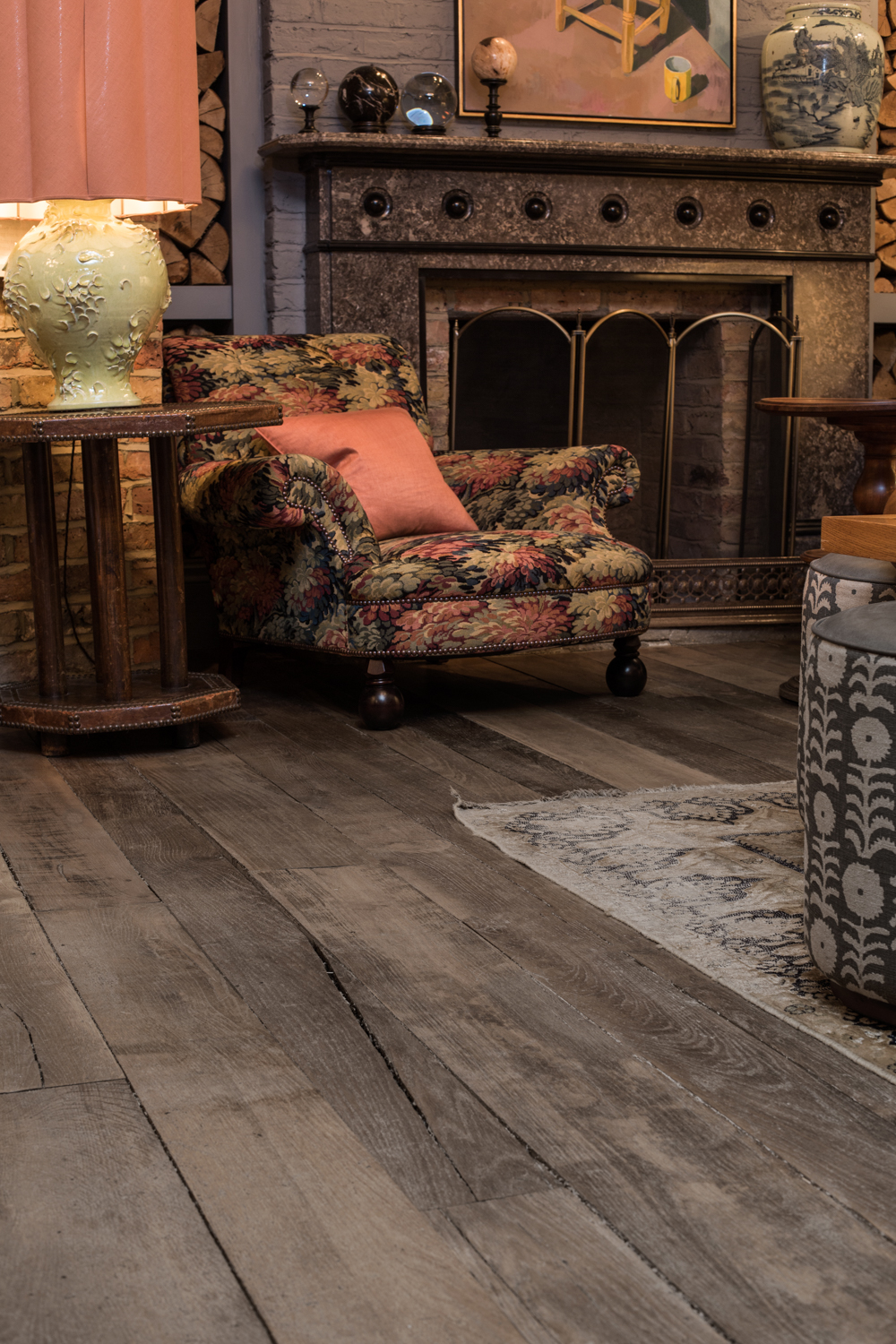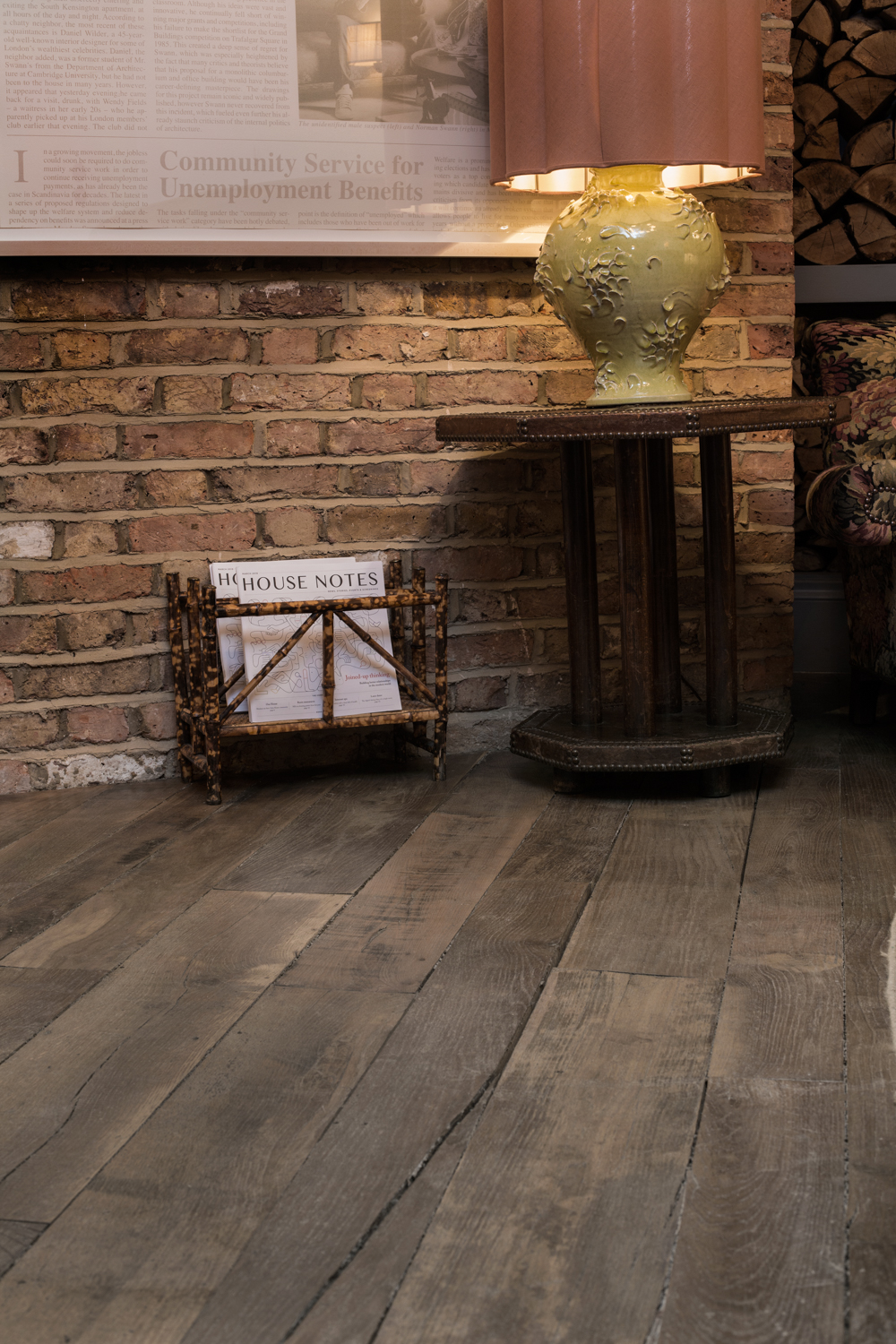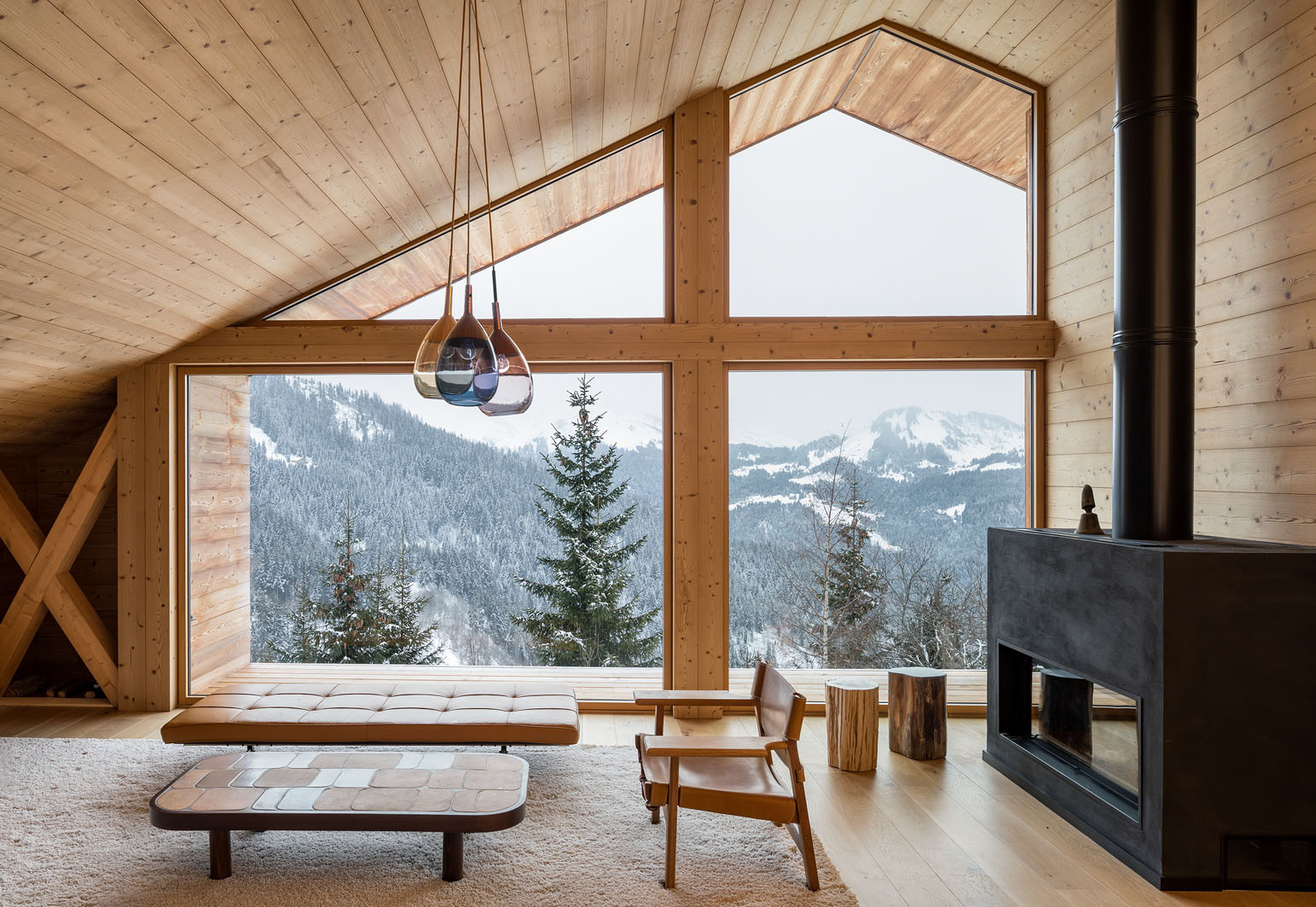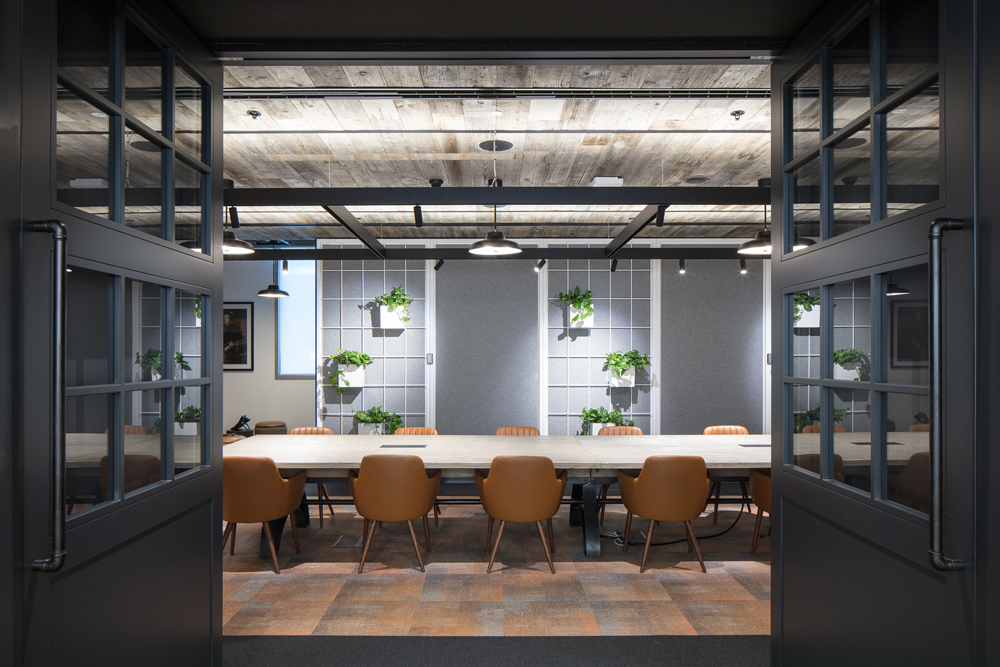
Depending on the structure of their seeds, all trees are classified in one of two ways: hardwood or softwood.
But when people think of wood flooring material, they almost always think of classic hardwood such as oak. And yet, softwood is another strong contender in the timber flooring industry — and for centuries, it has been a common feature of many old homes across Europe.
One of the oldest and most beautiful types of softwood is Pine. Pine floorboards are cut from pine trees — and in the past, many homeowners took advantage of its prevalence, as well as its wide widths and long lengths. Today, pine floorboards come in several grades to fit myriad budgets, which still makes it a sensible choice for the modern homeowner.
Pine wood flooring is popular for its prominent grain and beautiful knots that give the floorboards distinctly rustic quality. Despite being a softer wood, Pine is highly durable and comes ready to be finished according to your taste.
Apart from looking great in any interior, pine is more vulnerable to dings, dents, scratches and scuff marks compared to other harder flooring options. But one person’s dent is another person’s charm and character. Over time, the flooring will harden. Why? As you walk on the wood, the fibres compress upon themselves getting harder and harder.
Types of pine flooring
Pinus is the species found mostly in UK and EU plantations. It’s useful for all sorts of utility work: beams, flooring and structural purposes. But that’s just the start of it. There are over 200 different types of trees found in the pine family — so many are in fact much softer than others, leaving few types recommended for the use of flooring.
For a softwood, pine flooring such as heart pine, vertical grain pine and southern yellow pine are often remarkably resilient and long-lasting, especially in the context of well looked after pine floors. Depending on the pine species being used, the hardness varies.
When discussing pine timber, it’s hard to go past the fact that heartwood of a pine tree yields the darkest and hardest wood the tree has to offer. Therefore, heart-pine flooring is manufactured from this heartwood exclusively and has a Janka Hardness rating of 1225. A heart-pine floor will resist dents and deep scratches better than a pine floor made from sapwood.
Advantages: Attractive flooring that lasts decades
Characterised by straight, fine grain and small knots, pine flooring exudes a homey appearance and greatly loved for its ability to stand up to years of use. What’s more, pine flooring may not be the cheapest wood in the market, but it’s definitely not the most expensive either.
Appearance and unique character
Most pine floors are available in an array of colours ranging from nearly white and golden yellow to deep, rich browns and reds. They tend to darken more over time (compared to oak) — and because of the flooring’s prominent grain, pinholes and knots, pine is considered a character wood that offers an inviting, rustic appeal.
Typically, pine flooring comes unfinished, allowing you the opportunity to finish your floor in any colour that suits your preferences and in any aesthetic imaginable. More importantly, pine flooring is known to take stain, paint, varnish and tung oil well to match any interior setting; from antique right down to ultra-chic design style.
To maintain its natural colour, you won’t have to do much to the timber to make it look beautiful. To keep its authentic appeal as it tends to darken with age, treat the floor with clear varnish or whitewashing. Prefinished pine is becoming increasingly popular because it comes with a brilliant finish and permits installation without sanding or surface treatment on site.
A durable option
While pine is classified as a softwood, it is highly durable and will serve you well for the full life of your home. It makes for a practical choice even in humid environments as it rarely has issues with shrinking or swelling.
100-years-old flooring, or even older, in homes around the United Kingdom proves that when well maintained, it can last for decades and continue to reflect the natural distressed look contemporary home designers imitate.
Resists decay
Pine flooring can be treated with chemicals to resist decay and rotting. This makes it a flooring investment and a desirable quality in any home building material. Due to its longevity, many people have been able to reclaim pine wood from old buildings and use it for their new construction.
Easy to work with
Due to its soft surface, pine is easy to cut and takes nails and screws very well compared to other natural materials. It holds stains and other finishes easily. The easier it is to work with wood, the easier it to complete a project.
Environmentally sustainable
As a softwood, pine matures rather quickly, which equates to high production rates than slower-growing hardwoods typically used for flooring, such as oak or walnut. The speedy growth means more wood can be produced each year with the same amount of land, which makes pine better suited to environmentally friendly forestry practices.
Internal cladding
When it comes to interior wall cladding, no other option of cladding provides the same look and style as wood. Depending on your project, pinewood gives a room style and texture boost, plus a dose of rugged charm.
Whether in a form of tongue-and-groove boards that can be nailed and glued together or as straight edge boards, how simple or detailed the profile is and the type of coating you choose will be well reflected on the overall look.
Cladding with pine can be used in many different ways on any walls internally — as long as the wood is dry with a moisture content of around 10-12%. It can be used to create a feature wall, bring an old wall to life or if you’re really bold you can do an entire space.
The great thing with pine is its lightweight, which makes it easy to work with; easily absorbs any finishes and preservatives more readily, and every piece is different so you will never get two pieces that are the same.

The world has produced more than eighteen trillion pounds of plastic to date, and over eighteen billion pounds of plastic has trashed our planet.
It enters the ocean every year and ensnares marine animals we cherish — and much of the rest leaches toxic chemicals into the ground or sits in landfills, where it can take up to 1000 years to decompose.
The often-cited negative impact of using so much traditional plastic made from petroleum-based raw material has left manufacturers and consumers scrambling for an alternative to the ubiquitous material, and bioplastics have emerged as a potential solution to plastic pollution.
The name bioplastic sounds promising, with a prefix that hints at a “natural” product. But is bioplastic a flawless solution to our environmental issues?
The answer?
Contrary to what many would like to think, the use of “bio” does not necessarily mean that the finished product, plastic or otherwise, is earth-friendly and biodegradable.
Bioplastic is a confusing vague term, and it might have you think that a bioplastic wrapper will break down on your compost heap, or will at least have a lower carbon footprint. Surprisingly, neither is necessarily true.
So what is bioplastic?
Bioplastic simply refers to a plastic substance made (wholly or partly) from plant (biomass) or other biological materials rather than petroleum. It is also often referred to as biobased plastic.
It can either be made by extracting starch and cellulose from plants like corn and sugarcane to convert into polylactic acids (PLAs), or it can be made from polyhydroxyalkanoates (PHAs) engineered from microorganisms.
PLA is one of the most popular bioplastic in the market today and is commonly used in food packaging and catering products, while PHA is often used in medical applications such as sutures, slings, bone plates and skin substitutes.
What happens when we’re done with bioplastics?
It’s worth noting that “biobased” does not equal “biodegradable”.
Therefore, not all bioplastics made from biomass are biodegradable and could still be in the same condition for years. Some additives such as antioxidants make biobased plastic degrade more quickly in nature.
Depending on the type of polymer used to make it, there are various ways we can discard biobased plastic waste.
Firstly, bio-based plastics such as PLA can be recycled through plastics and packaging waste collection.
This simply means reprocessing used material into a new product. Through various mechanical processes (sorting) in industrial composting plants, correctly separated bioplastics can be reused for new products (remelting or granulation). This upcycle process is what’s needed to transform linear supply chains into circular supply chains.
Secondly, biobased plastics can be collected and composted through biowaste collection.
After processing (organic recycling), the biowaste can be used either directly as compost or for biogas plants as renewable energy.
Processing involves heating the bioplastic to a high enough temperature that allows microbes to break it down.
Without that intense heat, bioplastics won’t degrade on their own in a meaningful time-frame, either in landfills or even your home compost heap.
So, should you use it?
Consumer interest in sustainable alternatives to plastics are driving the growth of bioplastic.
Today, there are about 300 different kinds of bioplastics.
Bio-based plastics have benefits, including producing significantly fewer greenhouse gas emissions than traditional plastics.
However, this isn’t the end story.
Environmentalists still suggest that even if a widespread adoption of bioplastics may occur, it will do little to curb the amount of plastic entering waterways.
Most bioplastics need high temperatures to break down, and without adequate composting infrastructure and the capacity to collect green waste separately, they may end up in landfills where, deprived of oxygen, they may release harmful toxic chemicals to the environment.
To put it plainly, bioplastic products can end up being another example of greenwashing, a misleading marketing tactic on how sustainable a product truly is.
Promising examples of bioplastic
British product designer Lucy Hughes won the UK 2019 James Dyson Award for developing a bioplastic from fish waste that could possibly replace non-biodegradable, single-use plastics.
This fish scales and fish skin waste known as MarinaTex bioplastic can break down in four to six weeks when the soil is at the right temperature, which is faster than many other biodegradables.
The material itself is translucent and flexible, strong, has higher tensile strength and also economical (Atlantic cod could generate enough organic waste to produce 1,400 bags of MarinaTex).
Scientists from the University of Bath’s Centre for Sustainable Chemical Technologies (CSCT) in England are making polycarbonate from sugars and carbon dioxide to use in the manufacturing of drinking bottles, lenses for glasses as well as scratch-resistant coatings for phones, CDs and DVDs.
The convectional process for making polycarbonate involves the use of BPA (banned from use in baby bottles) and highly toxic phosgene. Bath scientists have discovered a cheaper and safer alternative to do it by adding carbon dioxide to the sugar at low pressure and room temperature.
The resulting BPA-free plastic is strong, transparent, scratch-resistant and bio-compatible: meaning it can be utilised for medical implants or as scaffolds for growing tissues or organs for transplant. Most importantly, it can be degraded back into carbon dioxide and sugar using enzymes from soil bacteria.
Conclusion
The use of conventional plastic to package consumer goods has reached an unprecedented level. Does this make the reinvention of plastic into bioplastics a solution to saving the planet’s natural system?
Bioplastic. Biodegradable. Biobased. Compostable. These terms get thrown around interchangeably quite a bit, but they don’t mean the same thing. The language and metrics have left so many consumers and those in the packaging industry confused.
And because of this confusion, the possibility exists for unscrupulous brands to market packages as “green,” “sustainable,” “natural,” or “biodegradable” when they are not and mislead consumers.
Bioplastic, of course, are often less damaging than the status quo, but they aren’t all created equal and aren’t entirely biodegradable. So as much as they are a good starting point, it’s still crucial to consider the material’s life cycle and assess its environmental impact.
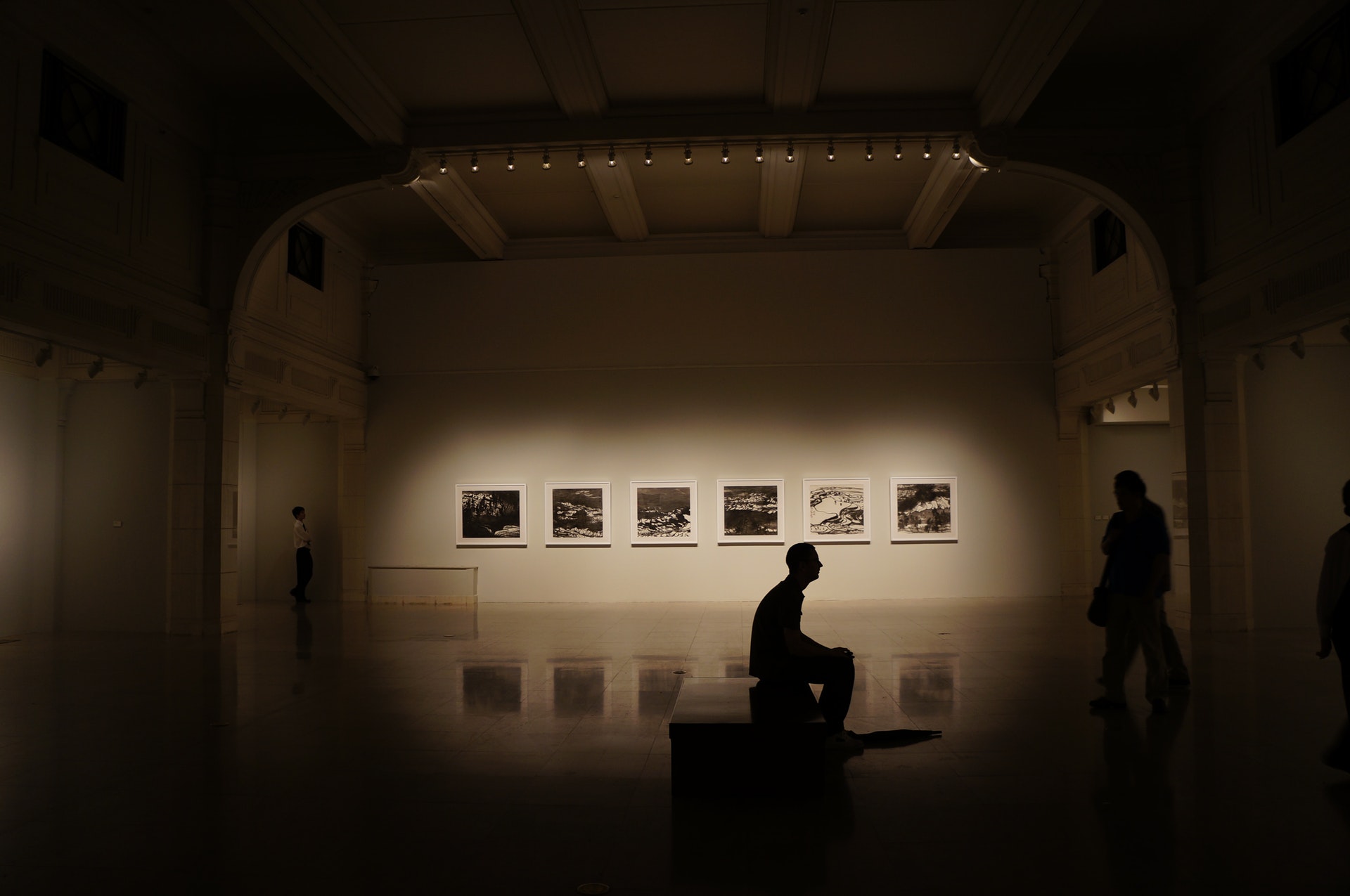
Drawing on the news and opinions that have recently pervaded galleries and museums, large and small changes will ripple throughout the art industry.
While 2019 can be described as anything but calm, this year’s art trends reflect some widely held desires that are greatly informed by some of last season’s big stories.
Below are trends that we believe will shape the art industry in 2020.
Museum trustees will face greater scrutiny
In the years to come, Museums can’t afford to weather scandal after scandal regarding the sources of their trustees’ incomes. In the past months, protests from visitors, artists, trustees and activists have put pressure on cultural organisations to reject philanthropy from unethical sources.
Some museums are stripping private donors like Sackler and Larry Fink family names from buildings, which critics claim are tainted money. Over the next decade, museums will recognise that it’s in their best interest, from a strategic standpoint, to pay more attention to who sits on their boards.
Internally, museums will be diligent about reviewing potential funder’s pasts and wealth to avoid the risk of reputational damage. It’s no easy task to decide where the line should be drawn, or what constitutes clean and dirty money. But the intense pressure from activists will have museums establishing new guidelines and taking steps to avoid such public outcries
Art history will become increasingly diverse
In 2020 and beyond, art history departments will gradually prioritise a more inclusive and broader view, with a focus on women artists, queer art and non-Western artworks.
The art world will tire of the same narratives, seeking to explore a more spiritual and vital toolkit for us to interpret and understand our world.
In the past few years, many art galleries and museums have organised exhibitions focused on male artists. But it seems that finally, we’ll see exponential growth in diversifying the next generation of art historians as we celebrate more female artists, with plenty of exciting shows by Lynette Yiadom-Boakye, Paula Rego, Magdalena Abakanowicz, Maria Bartuszová, Haegue Yang and Zanele Muholi throughout 2020/21.
Digital marketplace will continue to change the game
Thanks to the digital revolution, artists are already embracing online platforms such as Instagram — a platform that has made art business more democratic and more transparent than ever. At its best, Instagram provides innovative artists with new ideas and formats for their work. It is for this reason that it has emerged as art professional’s favourite.
As millennials move to represent a huge new market potential for low to mid-market art, one thing remains abundantly clear: they bring with them their comfort and familiarity of online purchasing — something which the previous generation largely ignored or somewhat struggle to adapt to.
Social networks and new online platforms continue to provide artists with opportunities to rack up millions of followers — and buyers — on their own. As virtual technologies like augmented and virtual reality become more accessible and user interfaces become more intuitive, consumers will continue to adapt to digital marketplaces better and the growth in online sales will continue to transform the traditional art world.
These are some of the most interesting digital platforms out there:
The use of gallery apps will grow
Mobile phone apps could be the answer to bringing art back to its central position. A recent string of apps have been released to help make art more accessible, and allow more smartphone owners to learn more, and even create art themselves.
One of the most useful of these is Smartify, which allows you to scan an art piece with your smartphone and receive instant information on it. Launched in 2017 at the Academy of Arts in London, it now has collaborations with the Louvre in Paris, New York’s Met Museum and London’s National Gallery.
Art galleries and museums are finally figuring out that apps will point the way forward and help bring the art scene to an even wider audience.
Museums will have to be successful for commercial enterprises to survive
All art organisations, including the state-owned museums, will have to become entrepreneurial and cater to the tastes and whims of the public. In a way, their approach will have to become more sophisticated in order to address the unique challenges and possibilities facing the art sector.
Often, these museums will need to discard the competitiveness alienating them from one another and also be prepared for sustainable forms of partnership with private entities. The number of art spaces in Europe has grown significantly in recent years and it now seems that every city now has a museum, this should be a great time for artists and auctioneers.
Conclusion
It’s clear that the art market continues to hold strong, and in 2020, it will persist with breaking out of its stiffening reality.
Different institutions are beginning to open up to providing visitors with immersive and innovative experiences despite the changing social and economic landscapes.
Museums and art galleries are evolving and working to attract new audiences — while offering a multitude of ways to enjoy different experiences both inside and outside of art establishments.
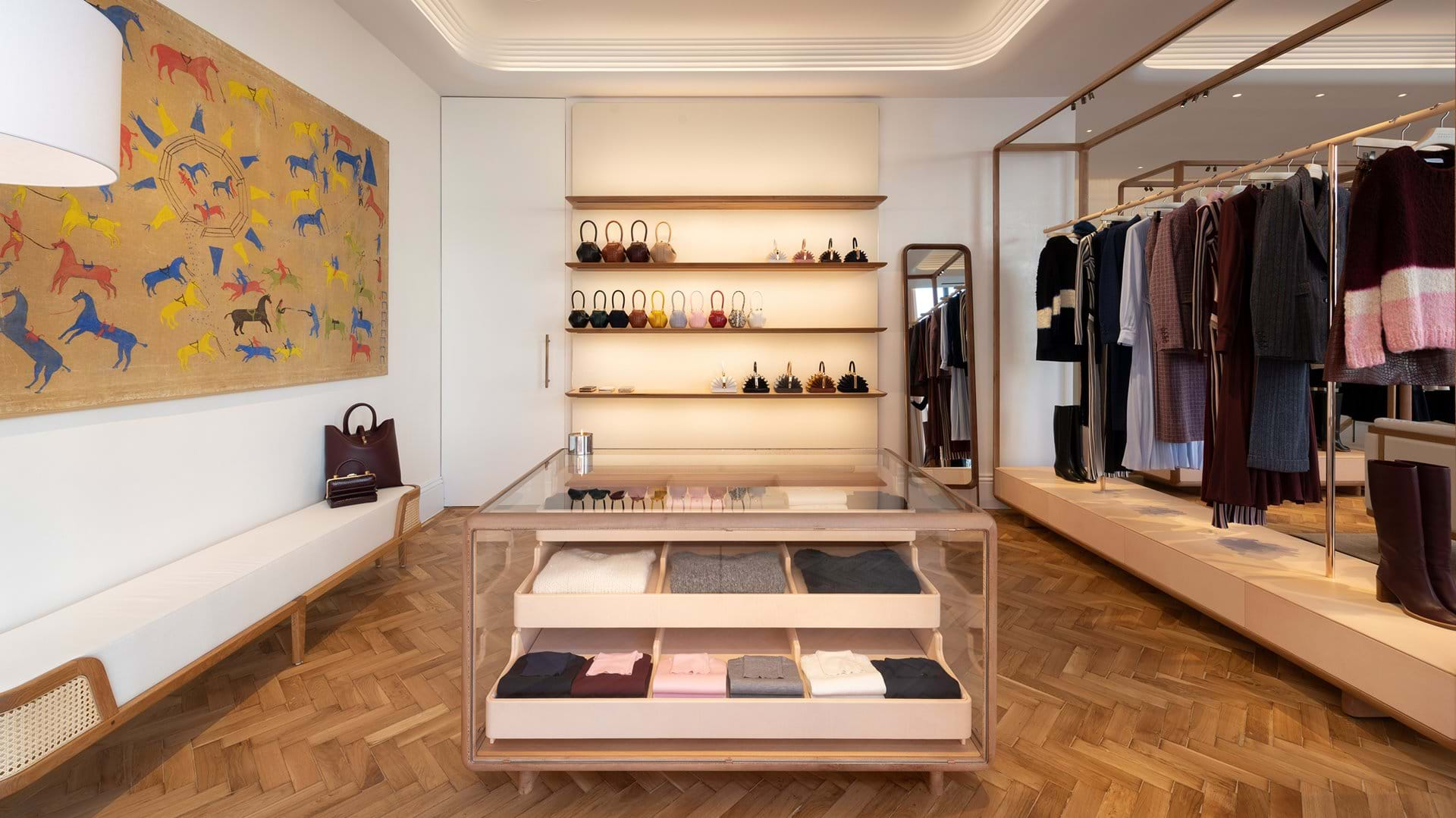
Oak is an incredibly sought-after type of lumber that has been employed in most construction, flooring and furniture projects throughout history. If you’re looking to invest in flooring that will last more than a lifetime, it’s crucial to know which oak best suits your lifestyle and design aspirations.
Both American oak (Quercus Alba) or a European oak (Quercus Petraea) floor are widely utilised in interior design. For this reason, designers and architects who specify wood flooring, veneers or cabinetry on projects are intimately familiar with oak.
When researching options for a new hardwood floor that’s durable, easy to work with and of course has a beautiful appearance, you’ll need to decide between American and European oaks.
Each has distinct characteristics that set them apart, and yet have an impact on how an expanse of flooring looks in a newly refurbished space. Continue reading to discover the key differences between two majestic oak species.
Species and origin:
European oak, is a native of various European countries — most commonly from sustainably managed forests in France, England and Germany.
American oak is a hardwood that’s principally found in Eastern North America. Both species are considered ‘white’ oaks, but American oak also comes in ‘red’ oak.
Colour tone:
Although both come from the same species of tree, European oak generally displays a darker tone with a naturally rich and warm golden-brown colour. Typically, American oak has a pinkish hue with some brown tones to it.
The choice between the two will depend upon the desired aesthetics you are looking to achieve
Strength and movement of boards:
European oak is considered hard, heavy and strong amongst experienced floor layers, meaning it is less likely to expand and contract to a noticeable extent when combined with a strong, engineered core compared to its American counterpart.
This guarantees minimal signs of movement, splits and cracks once the floor is installed.
Due to this strength and durability, it makes European oak a superior choice for flooring, that’s well suited for areas where there is likely to be more moisture, e.g. bathrooms and kitchens.
Grain pattern:
American oak timber is known for its clean, uniform appearance and straighter, subtle grain patterns.
For this reason, the boards work particularly well if you want to create an invariable look with no added character.
European oak tends to present a distinctive variation that contributes to its uniqueness and charm, showcasing varying wavy grain pattern and a display of mysterious ribbon-like marks across the grain known as ‘medullary rays’.
Length, width and thickness of boards:
Because the tree grows taller and the sapwood is wider and thicker than its heartwood compared to the average American oak species, European oak is often used for its longer length and wider floor planks.
If you’re looking for luxuriant aesthetics in a large room, you may want to opt for long and wider planks to achieve the best structural setup.
Conclusion
American and European oak have distinctive characteristics that make them special in their own right. In fact, an oak tree can live for hundreds of year, standing firm against everything nature throws at it.
While both will always be a great option for flooring, European oak boards offer an extra elegance and uniqueness that is likely to last more than a lifetime.
Its strength, durability, colour, and grain pattern makes it that much more desirable. At the end of the day, the type of flooring you choose will depend on personal preference, project type and design aspirations.

Our brains are easily fatigued — from busy workdays to each minute filled with a constant connection to modern technology.
Our physical and mental well-being has been thrown out of balance, causing a great ordeal to our nervous, endocrine and immune system.
To describe the discomfort and ill health that occurs as a result of the disconnection between humans and the natural environment, Australian environmental studies professor and philosopher, Glenn Albrecht coined the term “psychoterratica” in the early 2000s.
Simply put, it refers to the trauma caused by distance from nature.
In his 2019 published book, Earth Emotions: New Words for a New World, Albrecht introduces us to the new vocabulary needed to describe the full range of positive and negative eco-emotions and proposes a dramatic shift in the way we think about our relationship with our home planet.
The healing power of interacting with nature
Forest bathing, inspired by Japanese oldest pastime known as Shinrin-Yoku (shinrin meaning forest and yoku meaning bath), is credited with helping people maintain health and wellness.
The practise of forest bathing invites you to slow down, to walk in silence and deliberately connect with nature and breathe in volatile substances emitted by trees, called phytoncides (wood essential oils).
In her book, The Healing Magic of Forest Bathing: Finding Calm, Creativity, and Connection in the Natural World, Julia Plevin praises being exposed to nature for saving her life.
After realising how grey indoor environments and a dearth of greenery contributed to her depression and anxiety, she set out to explore the connection between space, nature, health, and design.
Nature therapy (cultivating a connection with our surrounding), especially spending time among trees, became her medicine.
“It is just being out in nature, but for me, it comes with the intention. The intention to slow down, to awaken your senses and to go there knowing the healing benefits of nature,” says Plevin.
With a plethora of research evidence on the transformative power of nature in promoting health and happiness, more and more people are turning to their natural surroundings to unplug from the fast-paced life — and renew energy, boost creativity and spark inner peace.
A research study on “The physiological effects of Shinrin-yoku (taking in the forest atmosphere or forest bathing): evidence from field experiments in 24 forests across Japan” reveals that forests… “promote lower concentrations of cortisol, lower pulse rate, lower blood pressure, greater parasympathetic nerve activity and lower sympathetic nerve activity than do city environments.”
Another study on “Psychological effects of forest environments on healthy adults: Shinrin-yoku (forest-air bathing, walking) as a possible method of stress reduction” indicates that:
“forest environments are advantageous with respect to acute emotions, especially among those experiencing chronic stress. Accordingly, shinrin-yoku may be employed as a stress reduction method, and forest environments can be viewed as therapeutic landscapes.”
One interesting aspect of shinrin-yoku is its effects on our immune system.
Through his research on how the activity of our natural killer (NK) cells are affected by practising forest bathing, Dr Qing Li, an expert in forest medicine and a professor at Nippon Medical School in Tokyo, found out that… “natural killer cells are a type of white blood cell and are so-called because they can attack and kill unwanted cells, for example, those infected with a virus, or tumour cells.”
He writes, “both the number of NK cells and their activity increased significantly both immediately after practising forest bathing, and up to thirty days later.”
Ways to bring nature into your life
Connect with nature outside: walking in the forest, hiking in mountains or a visit to the park can improve your emotional health, heart, muscles, and overall metabolism rate. Spending a part of our working day away from workplace cubicles and the same old office space alone or with co-workers gives an instant boost of freshness to the mind.
Bring nature inside: biophilic design encourages bringing a sense of the natural world into our built environment. It has been suggested that adding natural touches can imbue feelings of comfort and contentment. Wood, for example, when used in interior design has significant health benefits similar to those created by spending time in nature.
Incorporating indoor water features and skylights that permit more natural daylight, using earthy colour and organic shapes that mimic patterns found in nature settings, decorating with lush greenery are just some of the ways to increase the connectivity between indoor spaces and the natural environment
Conclusion
Disconnection from natural surroundings can lead to both mental and physical exhaustion.
A large body of empirical research has revealed that spending time in nature could be used as a therapeutic intervention for those experiencing mental health problems such as stress, anxiety and depression.
Not only do we feel restored when we’ve been immersed in nature, but our senses recalibrate and mental performance improves too.
The quiet calm of nature can do our overstressed brains a favour — it is contagious, awakening the innermost feelings of happiness and peace…

Deciduous trees (those that loose their leaves seasonally) produce hardwood.
These trees are known as angiosperms and any fruits they produce have a hard shell, drop to the ground, and are not air-borne, such as acorns.
The most common hardwood trees are alder, beech, oak, walnut, teak, hickory, walnut, mahogany, maple, and balsa.
The differences in the hardness of the wood can be quite varied for both hardwood and softwood. In most cases hardwood tends to be harder than softwood, but not always.
European Hardwoods
European oak has been a valued wood species for flooring across centuries — greatly associated with history, longevity, steadfastness, durability and strength.
Traditionally, oak was of native origin, but as the population and demand continue to grow, European oak is now mostly sourced from well-managed, sustainable woodlands of Croatia, France and Germany.
Attributes of European Oak
European Mountain oak is exceedingly strong, heavy and durable.
Also, the character within the oak is better distributed throughout the tree because of the steady and regular growing pace of the tree, this makes it a perfect and reliable choice for our floor finishes.
Similar to genuine reclaimed oaks from at least the last century in Europe, slower grown oak has a tighter grain and produces a more stable wood structure.
Only with a significant amount of tannin in the wood can we create our hand-made and custom finishes.
Hardwood Flooring Design Considerations
One of the great things about hardwood flooring is that it captures the beauty of nature — and acts as a connection between interior space and the natural world.
Even better, it’s aesthetic appeal, sturdy construction and ease of cleaning make it a valuable material — and despite numerous shifts and changes in style and design, it has survived the test of trends throughout the years.
The unique properties of hardwood lend a sense of permanence to interiors.
Of course, due to its popularity, it has its own set of special considerations which vary among the various options.
Unique
Offering design flexibility, every plank, board, or strip used on a hardwood floor is unique in a way that fulfils different tastes and preferences.
There are different species and exotic hardwoods, each with its own particular grain, hue, and characteristics, offering diversity in almost any interior setting.
Granted, installation of hardwood flooring is a one-of-a-kind feature that’s unmatched.
Character
Its appeal in design and construction is a natural one, as of course, over time wood is going to change.
It will acquire subtle shadings of colour, and pick up small scratches, nicks, dents and other beautiful imperfections that give the floor an authentically antique look and feel.
That is the kind of unique character that brings an added layer of personality and can only be attained over the course of years.
Sustainability
The demand for environmentally-responsible solutions is on the rise, and more and more end clients require some sort of sustainability certification.
Rightfully so, as the type of hardwood that’s grown in an ecologically viable way creates a very low environmental impact and offers high-quality flooring.
There are many different measures of sustainability for timber, ranging from schemes such as Forest Stewardship Council (FSC), that promotes environmentally responsible forestry practices.
Durability
Material durability is another thing to consider, and hardwood oak flooring has a reputation for being very long-lasting.
Flooring that is kiln-dried, manufactured, installed and finished to certain standards can be sanded down and refinished multiple times without losing structural integrity.
Solid Hardwood VS Engineered Hardwood
Engineered hardwood flooring is constructed in a thin layer of hardwood veneer on top of multiple layers of different woods, known as ply layers.
The choice between engineered or solid wood flooring usually depends on many factors including, how you want the flooring to be fitted, condition of your sub-floor and what factors are important to you (e.g. ability to sand & refinish, height of floor), cost, and of course, how well the flooring might best benefit a project. Of course, the answer is “it depends”.
Advantages of solid hardwood flooring include:
- Because it is solid through and through, it can be sanded and refinished several times over the lifetime of the floor.
- Thick flooring layers hold up well over time and offer a solid feel underfoot.
- As might be expected, sound transmission is better than engineered hardwood.
- Normally sold unfinished, so can be stained in any colour desired.
- Solid hardwood is often offered in an extense variety of platforms and sizes.
Advantages of engineered hardwood flooring include:
- Extremely dimensionally stable especially when adhered to a concrete subfloor.
- Its layered construction makes it less likely to expand, contract or shift when exposed to moisture, humidity and temperature changes.
- A better option in rooms that are subject to frequent or extreme moisture content (below-grade installations like basements) or over concrete slab and radiant heating sources or systems.
- Offers multiple installation options: nails and glue, as well as lock & fold technology.
- Generally sold prefinished.
Hardwood VS Laminate Wood Flooring
- Unlike solid or engineered hardwood where no two boards are the same, laminate flooring pre-designed patterns that imitate the look of wood texture means repetition is unavoidable and on average, every 5 boards look identical.
- The life expectancy for laminate is about 2 to 15 years, but hardwood can last a lifetime (100 years or more) depending on its maintenance and care.
- The damaged laminate boards would need to be completely replaced as they cannot be sanded or refinished.
- Hardwood floors are 100% natural, both can be disposed (or recycled) without any damage to the environment. The same cannot be said for laminate wood flooring.
- All wood naturally contains levels of formaldehyde, known to be a human carcinogen in hight levels. Laminate flooring tends to have more than Hardwood.
Conclusion
Hardwood flooring has been the most popular type of flooring for decades, and transcends both time and style changes. When you consider its overall lifespan and high-performance, engineered and solid wood flooring is a wiser, healthier and environmentally conscious option. It’s construction, colour and texture assortment, coupled with high dimensional stability, easy to maintain and longevity, it offers undeniable decades of both functionality and timeless beauty.
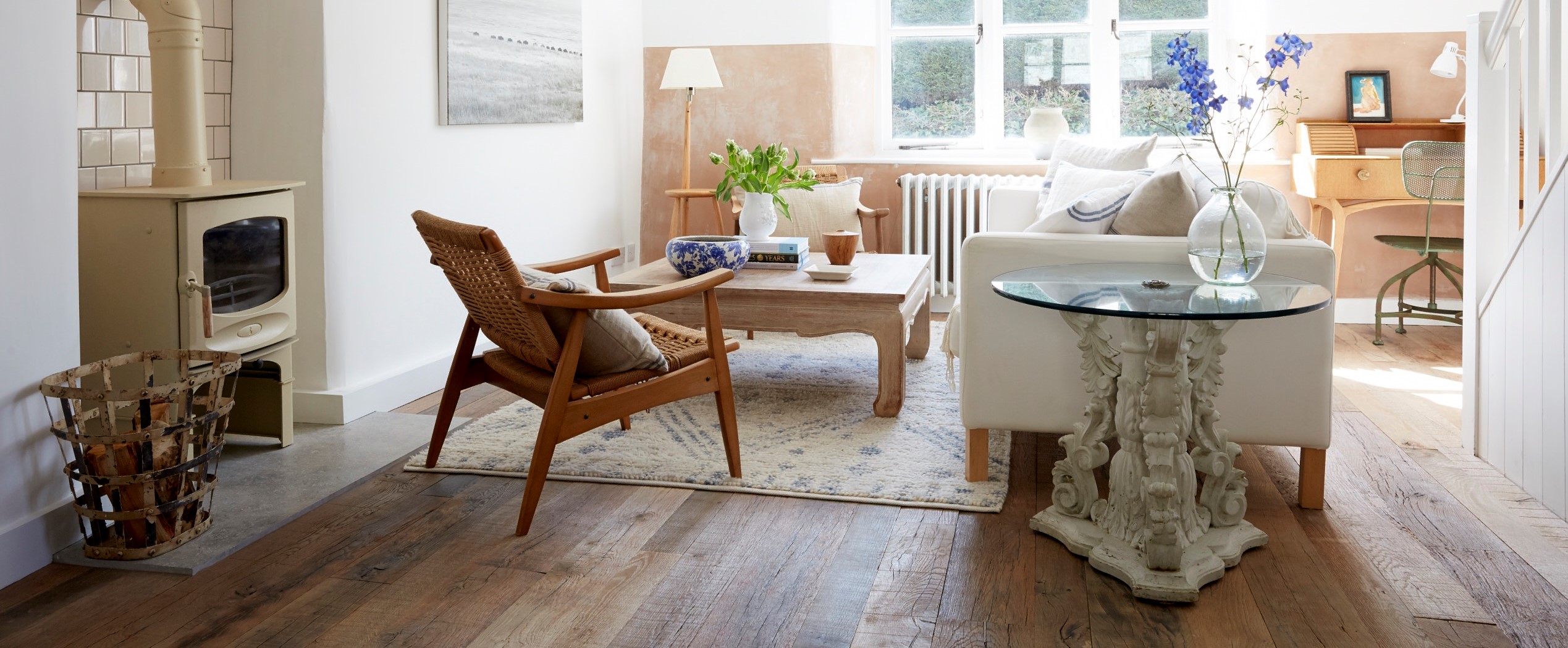
Like all organic materials, timber has some natural characteristics. And because it responds to its environmental forces and changes over time, these natural characters and quirks are what adds to the “personality” of the wood.
As such, each board is unique in its characteristics and will vary from species to species, grade to grade and even piece to piece.
Sapwood
Often seen as very light streaks within the wood, sapwood is the living part of the tree through which water and sap flow.
It tends to be lighter in colour than the heartwood, and certain fuming, smoking and colouring processes emphasize it since it doesn’t react to these treatments to the same degree.
By definition, sapwood contains more moisture, however, this is no cause for concern because timber has been carefully dried and its stability is ensured when supplied in an engineered form.
Sapwood is more permeable resulting in high moisture content, less durable and usually lighter and creamier in colour — but as the tree ages and its trunk increases in diameter, sapwood turns to heartwood, and the characteristics begin to change accordingly.
The relative amounts of sapwood in flooring can vary greatly among species, and this may affect the way it accepts stain and finish and, therefore, the finished appearance of the floor.
Generally, sapwood is less conspicuous in quarter-sawn and rift-sawn flooring compared to plain-sawn flooring and will tend to have a straighter grain and more uniform appearance.
Staining the boards can lessen the appearance sapwood, but it doesn’t entirely hide these natural characteristics. The stain helps to blend the natural characteristics but doesn’t eliminate it. Fuming has the opposite effect on heartwood and sapwood. Fumed floors are designed to make very distinctive sapwood even more prominent, especially over time.
Knots
Knots are unique circular or oval-shaped markings caused due to natural forces.
They can vary widely in size and occur from two circumstances: firstly, when a new branch grows from the trunk or from a dormant bud, the conjunction forms a huge, dark spot called a “live knot” — secondly, they form due to a tree scar. These scars then manifest as “dead knots” on wood panels.
Knots are usually with a darker coloured centre, outlined with resin and standing out from the grain. They give wood special character and make timber boards look more authentic as no two knots look the same.
The visibility of the size and frequency of knots is largely affected by the grade of flooring you choose. Knots can be treated with chemicals to ensure that they don’t bleed when stains or sealants are applied.
Medullary Rays
Medullary rays (also referred to as pith rays, oak figure or tiger stripes) are thin horizontal rays that extend radially from the core of the tree toward the bark.
They can appear very shiny and vary in height; from a few cells in some species to four or more inches in oak.
The presence of medullary rays is a clear indication that the flooring has been crafted from quality quarter sawn oak.
Exposed rays will often gleam under direct sunlight, and add visual appeal and character to the wood surface.
Shakes
Shakes are naturally-occurring marks in the wood, usually between or through the rings of annual growth.
These may take place as a result of external stress factors like frost, high winds and temperature extremes, or due to rapid or uneven drying, and trees being felled past maturity.
Simply put, cracks or splits in timber are called shakes.
These cracks are usually filled but in some cases may be partly-filled to maintain the floor’s feature.
Due to the immense strength of oak, they are not a cause for concern in premium quality boards and are considered part of the floor’s charm. Like most wood flaws, the frequency and size of the shakes on floorboards is again affected by the grade you choose.
Checks
Checks are the formation of cracks in the wood normally caused by tension stresses that develop in the outer part, or shell, of boards due to poor or improper drying processes.
Surface checks originate roughly twice as much along with the growth rings. They often develop early in drying because the lumber surfaces dry too quickly as a result of low relative humidity.
Checking usually does not extend from one end to the other side of a beam, and rarely a structural concern.
Oak, however, can have surface checks everywhere, which many people feel adds so much of character — and a big part of what makes wood unique and different from any other material in the world.
Conclusion
Every knot, medullary ray and crack is a testament to a tree’s life and the years it lived through. This is what makes real wood more interesting and special than other construction materials. All of these characteristics come together to create authentic, beautiful patterns that enhance the visual appeal of the wood floor.
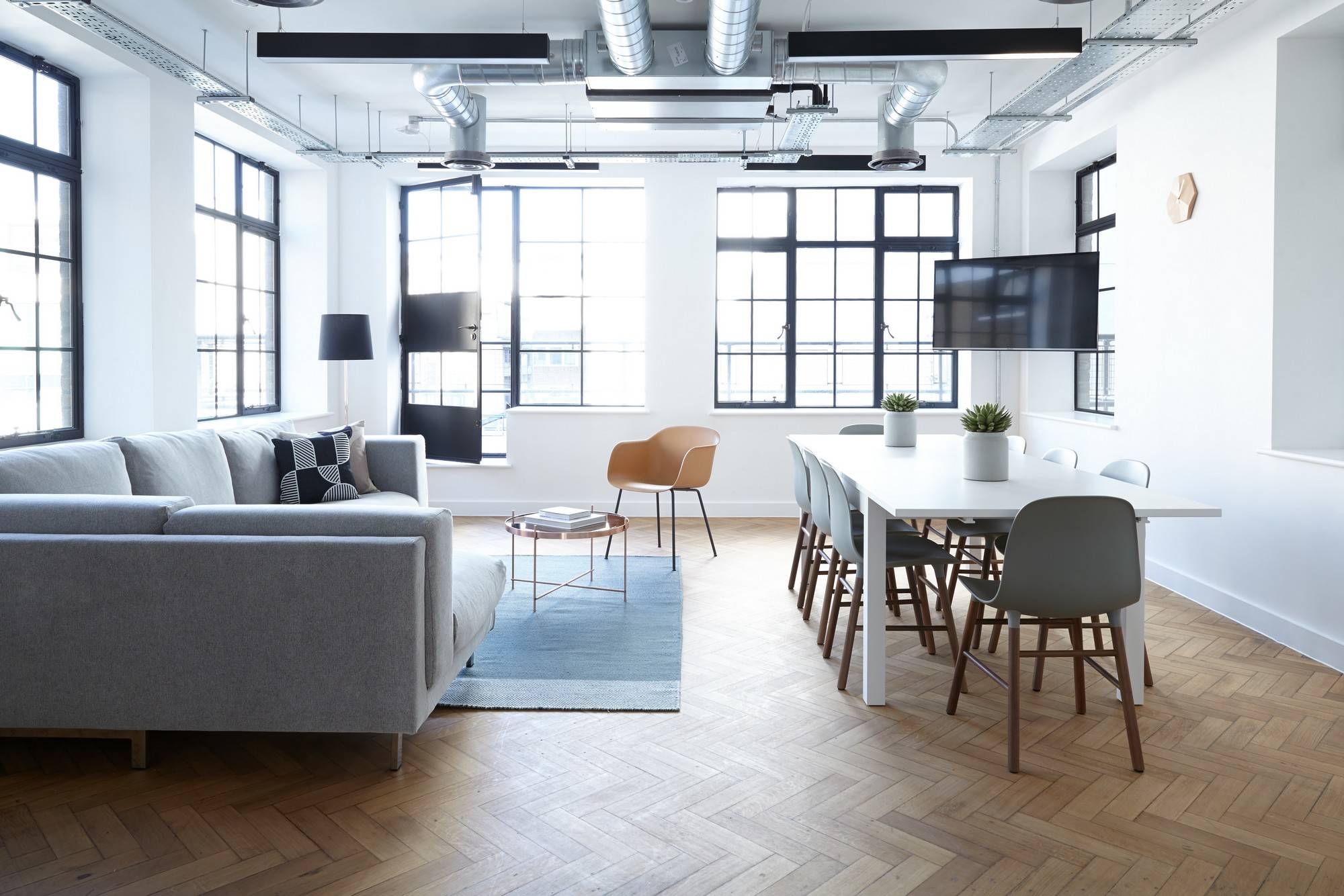
Indoor environmental quality (IEQ) affects significant facets of human life — health, performance, resilience, sleep, and comfort.
Human beings have profoundly altered their living conditions in order to create indoor environments in which they can feel comfortable.
Research guidelines from ASHRAE recommend that, since modern humans spend about 80–90% of their time indoors, creating optimal indoor environments is important — and factors that cause any discomfort, illness or dissatisfaction are linked to characteristics of the building.
Architects and designers are increasingly prioritising sustainability and eco-friendliness to meet the needs of both people and the environment — and indoor conditions of a building have become a focal point; from air quality to exposure to natural light.
After all, the built environment is a vital part of human life, it makes sense that evidence-based design decisions should be used to ensure that the indoor space provides healthful benefits to occupants.
Poor indoor experience is caused by a variety of harmful factors and can stifle productivity and affect occupant health. When it comes to understanding the relationship between health and the indoor environment, we must first understand the physical characteristics that are most likely to minimise or optimise individual physical, mental, and emotional wellbeing.
Indoor elements
Our understanding of the relationship between the health of occupants and the interior spaces they inhabit continues to evolve. Indoor environmental quality refers to the quality of a building’s environment in relation to the health and wellbeing of those who occupy space within it — and is determined by many factors, including lighting, air quality, and damp conditions.
Indoor environments are highly complex and contribute significantly to human exposure to a variety of contaminants.
While research has shown that some respiratory symptoms and illnesses can be associated with exposure to natural pollutants such as allergens, dampness and mould, it is still unclear what measurements of indoor contaminants show that occupants are at risk for disease.
The ability of our spaces to cause health effects varies, and most recently, attention has increasingly focused on materials with high levels of volatile organic compounds (VOCs). VOCs are noticeably higher indoors and harmful to air quality. Since VOCs can be released from products such as paints, varnishes, wood preservatives, office equipment, building materials.
Thankfully, health effects are usually temporary and improve once the source of the exposure is identified and removed.
As sustainable practices advance, green building materials that have low or no VOCs can help keep harmful concentrations in the air to a minimum and can help keep occupants healthy.
Natural comfort and human wellness
Physical comfort is closely related to well-being — and contributes largely to work effectiveness, satisfaction, physical and psychological balance.
Two issues are key to understanding the importance of our comfort. Firstly, our ambient preferences differ from one person to another (this is known as inter-individual differences). These differences result from a combination of influences, including cultural experiences and lifestyle.
Secondly, change is constant and a given person varies over time depending upon their state of health, activities, professional work, and so forth (these are known as intra-individual differences.)
For most of human history, people have actively adjusted the environment and their behaviour to make living and working conditions healthy and comfortable. Yet 30% of new buildings continue to be designed with a “one size fits all” approach. Very few buildings or workstations are consistent with basic physiological needs — and rarely enable occupants to control lighting, temperature, ventilation rates, or noise conditions.
Biophilic design: stress reduction, health and well-being
Over the years, the concept of biophilia has proved that beauty is not in the eyes of the beholder but rather built into their minds.
Biophilic design supports the innate human-nature connection by integrating multi-sensory experiences and design elements into the built environment.
A growing body of research consistently shows that biophilic design provides many health benefits — such as improved concentration, comfort, satisfaction, creativity, healing and overall well-being.
Building occupants who have window views of nature; from daylight to plants and flowers, experience numerous opportunities of restoration. They are less stressed and more patient, and experience overall life satisfaction, enhanced mood and better health than those who do not have visual access to the outdoors or whose view consist of built elements only. The positive effects of nature may also extend to the immune system, thereby directly affecting human physical health.
In one form or another, nature is a dominant feature of green buildings. Whether nature’s presence comes from natural materials, daylight, views of the outdoor landscapes, courtyards, natural landscaping, water features and interior designs that mimic shapes and forms found in nature, there is growing evidence of positive impacts on people. Most of the studies have focused on emotional states and stress reduction; however, there is growing evidence of a strong linkage to the development of perceptual and expressive skills, cognitive functioning, imaginative and social capacity.
9 foundations of a healthy building
At Harvard University’s T.H. Chan School of Public Health, a multidisciplinary team of experts led by Environmental Design professor Joseph Allen, are undertaking healthy buildings research to find out exactly what it means and how it sets new standards for indoor health.
The Healthy Building project is designed to be “a clear and actionable distillation of the core elements of healthy indoor environments.”
These foundations are the elements that make up the indoor built environment: air quality, thermal health, moisture, dust and pests, safety and security, ventilation, water quality, noise, lighting and views.
The 9 foundations are a standardised, holistic approach to understanding how buildings impact the people inside them.
Air quality as an essential indoor element
While all of the 9 foundations for a healthy building are essential, the element that has received the most attention is indoor air quality (IAQ).
Building attributes such as wall and roof covering, paint material and office furniture can have airborne toxins and noxious chemicals harmful to occupants’ health. Enhanced indoor air quality from reduced use of toxic and noxious materials is a core feature of green buildings.
Improved IAQ is also central to the arguments about ancillary benefits. Fisk and Rosenfeld developed a model that suggests improved air quality could result in significant reductions in illness and absenteeism associated with respiratory disease, asthma and allergies, as well as sick building syndrome symptoms.
They indicate that productivity gains and improved worker performance are a result of eliminating or reducing air pollution, improving ventilation, and utilising air cleaners.
Sick building syndrome and building-related illness
SBS is a group of health problems that are linked to being in a building or other type of enclosed spaces like offices or a dwelling.
Closure of natural openings, use of new construction material which are not properly tested and certified, various types of furniture, and office equipment could all contribute to SBS.
Symptoms may include throat irritation, breathing difficulties, body aches, dry, itchy skin rash etc.
Based on the research, SBS is attributed to poor indoor air quality. The symptoms seem to improve after leaving the hazardous building in question, only to come back when you return to the same indoor space.
Continuous monitoring of indoor air, as well as monitoring and control of all the water pipes and wet areas in order to reduce dampness, and the selection of appropriate, certified building materials are best actions to take for indoor environmental quality and reduction of SBS.
Buildings and worker performance
Maintaining a comfortable physical environment in the workplace is vital. Optimum environmental conditions are key to work better and feel better. High-performing buildings enable employees to be comfortable, productive, healthier and have a lower absenteeism rate.
Performance is viewed as a function of these three factors acting together: ability, motivation, and opportunity. Negative impact on the ability to perform is associated with conditions that are uncomfortable, distracting, hazardous, or noxious.
In addition to the overall effect of being in a better building, green-certified office environments also positively affect these three factors by providing conditions that promote positive affective functioning, psychological engagement, and personal control.
Conclusion
The quality of the building we inhabit is critical to human health, well-being and comfort. Now more than ever, indoor environmental quality has become a matter of concern as people spend a good deal of their time inside. Architects and designers are recognising the importance of implementing healthful building practices. Design that takes into consideration the positive and negative impacts of indoor environmental conditions will potentially improve health, productivity, wellness and comfort

We all seem to have a great understanding of the value of good design.
But what is good design?
When Dieter Rams, a German industrial designer and academic, developed the 10 brilliant design principles (sometimes referred to as the 10 commandments) in the late 1970’s, he was deeply concerned by the state of the world around him: “an impenetrable confusion of forms, colours and noises”.
After training as an architect in 1955, Rams went on to work for the consumer-electronics company, Braun, until retirement in 1997 — where he introduced the world to “functionalist” industrial design.
In functionalist design, he brought simplicity and style to everyday objects: radios, shavers, coffee makers and more.
Over time, this adherence to functionalism became known as the Braun design process — where the purpose intended for the object is the guiding force behind its making.
Every decision about the product (shape, colour, texture, cost etc) is made to maximise the objects capacity to fulfil its intended purpose.
In the process, he created iconic designs that have stood the test of time, including furniture for what was then a small company, Vitsoe.
His 606 Universal Shelving System for Vitsoe remains an astonishing and “close to perfect” piece.
“I always strive for things to be sustainable. By that I mean the development of long-lasting products, products that don’t age prematurely, which won’t become out of style. Products that will remain neutral, that you can live with longer” — Dieter Rams
Considering how much consumer products and technology have changed tremendously, Dieter Rams principles of good design remain valuable guidelines not only for industrial designers, but for anyone working in the field of design, including architects, interior and experience designers.
For more than 50 years, the godfather of industrial design transformed the nature of consumer products.
Here are his 10 commandments of good design (the explanation of each principle has been retrieved from www.vitsoe.com/us/about/good-design):
1. Good design is innovative
The possibilities for innovation are not, by any means, exhausted. Technological development is always offering new opportunities for innovative design. But innovative design always develops in tandem with innovative technology, and can never be an end in itself.
2. Good design makes a product useful
A product is bought to be used. It has to satisfy certain criteria, not only functional, but also psychological and aesthetic. Good design emphasises the usefulness of a product whilst disregarding anything that could possibly detract from it.
3. Good design is aesthetic
The aesthetic quality of a product is integral to its usefulness because products we use every day affect our person and our well-being. But only well-executed objects can be beautiful.
4. Good design makes a product understandable
It clarifies the product’s structure. Better still, it can make the product talk. At best, it is self-explanatory.
5. Good design is unobtrusive
Products fulfilling a purpose are like tools. They are neither decorative objects nor works of art. Their design should therefore be both neutral and restrained, to leave room for the user’s self-expression.
6. Good design is honest
It does not make a product more innovative, powerful or valuable than it really is. It does not attempt to manipulate the consumer with promises that cannot be kept.
7. Good design is long-lasting
It avoids being fashionable and therefore never appears antiquated. Unlike fashionable design, it lasts many years — even in today’s throwaway society.
8. Good design is thorough down to the last detail
Nothing must be arbitrary or left to chance. Care and accuracy in the design process show respect towards the user.
9. Good design is environmentally friendly
Design makes an important contribution to the preservation of the environment. It conserves resources and minimizes physical and visual pollution throughout the lifecycle of the product.
10. Good design is as little design as possible
Less, but better — because it concentrates on the essential aspects, and the products are not burdened with non-essentials. Back to purity, back to simplicity.
Conclusion
Many of Dieter Rams designs are featured in museums throughout the world.
His “less, but better” approach influences a generation of products, and the 10 principles of good design are a timeless source of inspiration that any designer can appreciate.
The straightforward list lays down key points: Good design is innovative, useful, aesthetic, understandable, unobtrusive, honest, long-lasting, thorough, conscious of its environment and is as little design as possible.
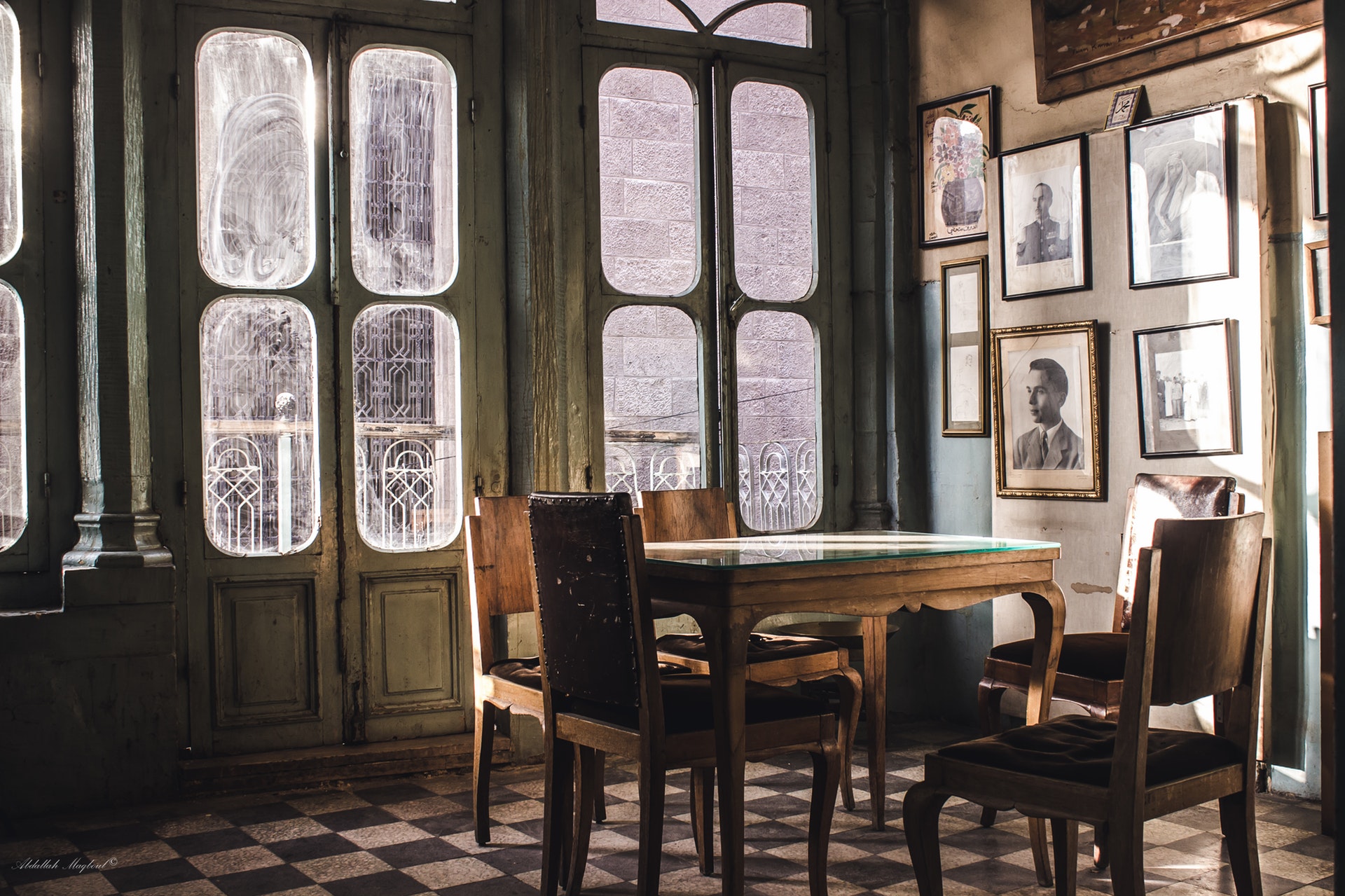
“If you can create something time cannot erode, something that ignores the eccentricities of particular eras or moments, something truly timeless… this is ultimate victory.” — Dr Ferry Porsche.
Attainable design is about creating a strong foundation and remaining true to personal taste — design that remains effortlessly stylish for years to come and endures the test of time. Rather than adhere to the latest craze trends, it is much more satisfying to fashion a timeless interior that feels contemporary, and brings immeasurable joy, comfort and contentment.
Design defined by storytelling
Often, we focus on what seems to be popular and on-trend right now — but trends are as fickle as the weather, they come and go.
To truly create something timeless and meaningful, it’s essential to incorporate pieces which have a story behind them.
Consider items and furnishings that have been accumulated on travels or family heirlooms that will fill a space with priceless memories.
Invest in distinctive pieces that could also become heirlooms themselves. Whatever the approach, the time has come to be brave, bold and creative in our choices.
But most importantly, the time has come to bring personal style and storytelling to the forefront in the spaces we occupy and identify ourselves with.
The art of slow design
We should begin to celebrate the truest form of handmade, show-stopping pieces, where every detail has been meticulously orchestrated by hand and combined into one amazing piece.
Products that focus on the art of slow design, simplicity and purity are sure to outlive passing trends and phases.
Slow design emphasises the significance of the whole and the interdependence of the parts.
This approach which encourages conscious decisions is essential for the design process to work, and for your space to be a direct reflection of you… an environment where you can be your best self.
Connecting back to nature
When it comes to interior design, the importance of personal connection to the environments that we occupy cannot be stressed enough.
You want a space that evokes a memory or a feeling — and it is in the spirit of nature that everything is connected.
We can look to nature to create an interior identity by incorporating natural materials into our living spaces: lots of wood, stone and organic fibres.
Keeping attainable design in mind, we can contribute to both wellness and comfort by embracing biophilic design.
This is the concept of utilising natural materials to positively impact our overall well-being.
For instance, we can choose wooden flooring, maximise natural light with large windows, place greenery indoors and other biomorphic forms.
This can help to bring the sounds and textures of the natural world to the inside.
It also provides a multi-sensory experience that can ensure an instinctively strong connection between human beings and nature.
Conclusion
A timeless design is not created to be temporary. It is never anything considered a fad or a trend, but rather, a unique style that is distinctive, determined and self-assured — and this is the true merit of attainable design.
If you wish create an enduring interior, one that is as fresh and relevant today as it was yesterday, and will be tomorrow, you’ll want to ensure that each space is personalised and tells a story — seek out designs and styles where quality, personal expression and longevity are in perfect harmony.

